Best Graphics Cards for Gaming in 2026
Here are the best graphics cards for gaming, from high-end to budget solutions.
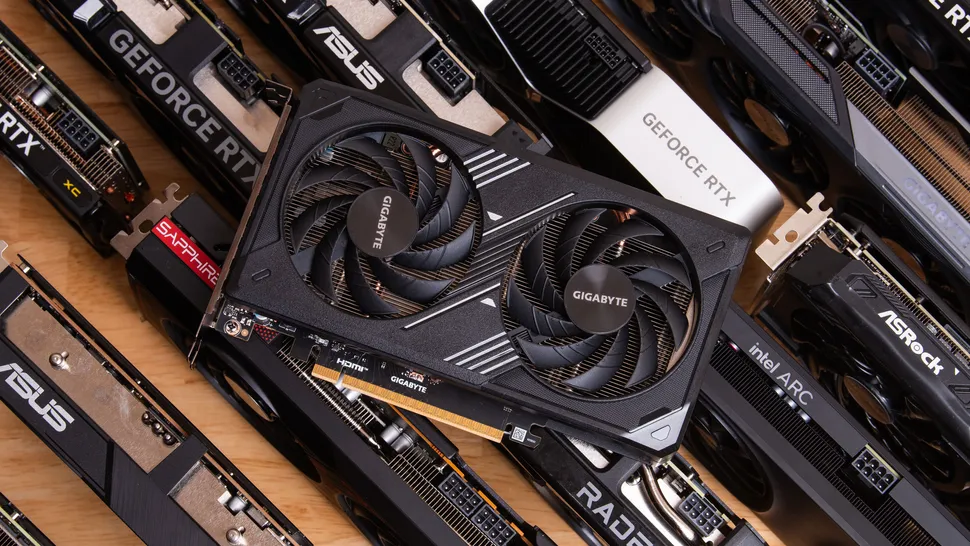
Welcome to Tom's Hardware's picks for the best GPUs for gaming in 2026. Since our last look at the best graphics cards on the market, both AMD and Nvidia have filled out their current-gen product stacks, and we’ve reviewed every new GPU in 2025.
Now that AMD, Nvidia, and Intel have finalized their product lineups for this year, the war for gaming GPU supremacy shifts to pricing and bundled incentives.
We've reviewed and refreshed our list of the best graphics cards in accordance with the results of our most recent testing. More new graphics cards are unlikely to launch any time soon, and prices are as low as they're ever likely to be in the shadow of the AI gold rush. If you need a new graphics card, now is the time to buy.
We've long been skeptical that AMD's $549 RX 9070 and $599 RX 9070 XT would ever be available at their MSRPs, but recent pricing shifts have made at least one partner model of both cards available at MSRP and from stock. That makes those cards even more appealing for value-conscious enthusiasts.
At the same time, Nvidia's board partners have started making the popular $429 RTX 5060 Ti 16GB, $549 RTX 5070, and $749 RTX 5070 Ti widely available for at or under MSRP - sometimes much less, in the case of the RTX 5070. You can also still find $999 RTX 5080 cards in stock if you need the minor bit of extra oomph over the RTX 5070 Ti. But you're unlikely to see $1999 RTX 5090s any time soon - Nvidia's Blackwell halo card is as marked up as ever.
Any pricing relief for gamers seems unlikely to last. The data center AI gold rush is consuming every available silicon wafer, making everything from NAND flash to DRAM to GDDR memory more expensive for PC builders and buyers. If you've been holding out on a graphics card upgrade or a new build in the hope of lower prices, now is the time to buy. Period.
Best graphics cards for gaming, at a glance
Graphics Card | 1080p FPS | 1440p FPS | 4K FPS | Median street price (vs. MSRP) | Avg. Power |
|---|---|---|---|---|---|
157 | 141.8 | 102 | $2,649 ($2,000) | 394W | |
124.2 | 101.2 | 62.1 | $809 ($750) | 259W | |
119.9 | 98.3 | 61.0 | $679 ($600) | 280W | |
110.4 | 86.9 | 52.9 | $569 ($550) | 220W | |
82.0 | 59.7 | 33.52 | $469 ($429) | 180W | |
76.6 | 55.7 | 31.2 | $389 ($349) | 160W | |
67.9 | 43.4 | 18.6 | $329 ($299) | 145W | |
56.9 | 33.5 | 13.9 | $209 ($220) | 136W |
The above list shows all the latest-gen graphics cards we feel stand out in their segments. If you want to see how all of the current and prior generation GPUs stack up, check our GPU benchmarks hierarchy.
When accounting for pricing, we perform our own research to find the midpoint of current prices for a given graphics card, rather than taking a vendor's MSRP at face value. We feel this method tends to be more representative of the price you're likely to see for products in stock.
If you can find a card in stock for less than this midpoint figure, it's likely closer to (or even less than) a vendor's MSRP and a better value. Conversely, if you find one for more than this midpoint, it could be a worse value (or too close in price to a more powerful card that's a step up).
The overall performance ranking incorporates 21 games from our legacy test suite, which takes the geometric mean (i.e. equal weighting) for both rasterization and ray tracing games. Note that we are not including any upscaling or frame generation results in the table.
Some recommendations have been influenced by work on our updated test suite, which includes several heavier-duty ray-traced games and console ports that really stress every aspect of a graphics card, from compute to RT to memory management.
If you're buying a graphics card these days, performance goes beyond the hardware. Choosing a particular GPU vendor means you're buying into a complex software stack that includes upscaling and frame generation
The short summary: in Nvidia's corner, DLSS 4 offers superior image fidelity to other upscaling tech, and its transformer AI model works with cards going all the way back to the RTX 20-series. DLSS 3 and DLSS 2 offer similar upscaling quality, but Nvidia will allow you to force DLSS 4 in some older titles through the Nvidia App utility if you'd like the latest and greatest.
RTX 50-series GPUs are Nvidia's first with support for with multi-frame generation (MFG), which allows Blackwell GPUs to insert one, two, or three AI-generated intermediate frames between each native one (for a 2x, 3x, or 4x frame rate boost). RTX 40-series GPUs also support framegen, but only with a 2x boost.
Meanwhile, AMD's FSR 4 offers AI-enhanced upscaling, but only for RX 9000-series Radeon cards. AMD's FSR 3.1 and earlier upscalers still work on any GPU, but the image quality tends to be noticeably lower than both DLSS and FSR 4.
FSR framegen didn't get an AI enhancement with the move to FSR 4. Its framerate-doubling boost remains cross-compatible with GPUs from all vendors, but its image quality also remains unchanged from prior generations. FSR framegen tech is supposed to get an AI-enhanced update with AMD's Redstone feature release, but that tech will also only work on RX 9000-series graphics cards.
Intel XeSS 2 with AI-enhanced frame generation isn't widely supported yet and requires an Arc GPU, while XeSS upscaling can be superior to FSR 3.x but isn't used in as many games as FSR or DLSS. XeSS Frame Generation, like FSR, only supports a doubling of frame rates at best.
Raw performance may be the most important consideration for most gamers, but it's not the only metric that matters. Our subjective rankings below factor in price, power usage and power efficiency, and features colored by our own years of experience. Others may offer a slightly different take, but all of the cards on this list are worthy of your consideration.
1. Best all-around enthusiast graphics card: Radeon RX 9070 XT, $679
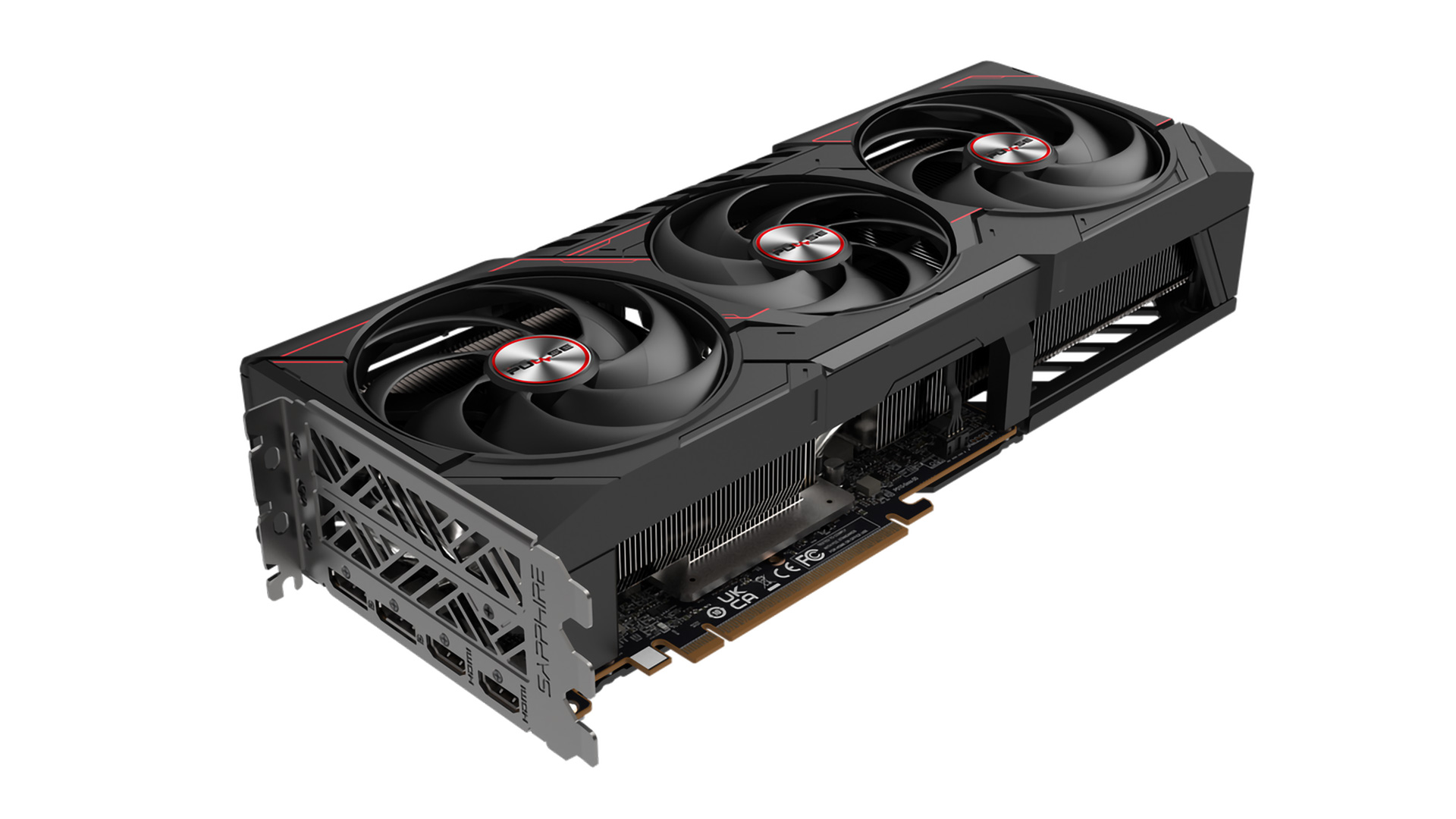
Specifications
Reasons to buy
Reasons to avoid
The Radeon RX 9070 XT is AMD's most well-rounded graphics card in years. It delivers raw performance within spitting distance of the GeForce RTX 5070 Ti for much less money.
AMD shored up two of its greatest weaknesses against Nvidia in the past with the RX 9070 XT's RDNA 4 architecture: RT performance and AI acceleration, both of which are now much closer to Nvidia's latest and greatest. And AMD did all that while keeping power efficiency right there with Nvidia, too.
The FSR4 upscaler is a big jump in image quality over FSR 3, and as it rolls out to more and more games, the RX 9070 XT's star will only grow brighter. AMD is rolling out a broad set of AI-powered gaming enhancements soon called FSR Redstone that could further burnish the RX 9070 XT's overall package.
Whether you're gaming at 1080p, 1440p, or 4K, the 9070 XT has the power and generous VRAM pool to get you there, all for a fairly reasonable price in today's weird world of graphics.
More and more GeForce RTX 5070 Ti cards are available for close to their $749 MSRPs as of this writing, and if you value the image quality and performance benefits of DLSS 4, you might want to spend the extra cash for Blackwell. But the RX 9070 XT offers the best balance of price, performance, and efficiency for enthusiasts who don't have unlimited budgets.
Read: AMD Radeon RX 9070 XT review
2. Best midrange graphics card: Radeon RX 9070, $569.99
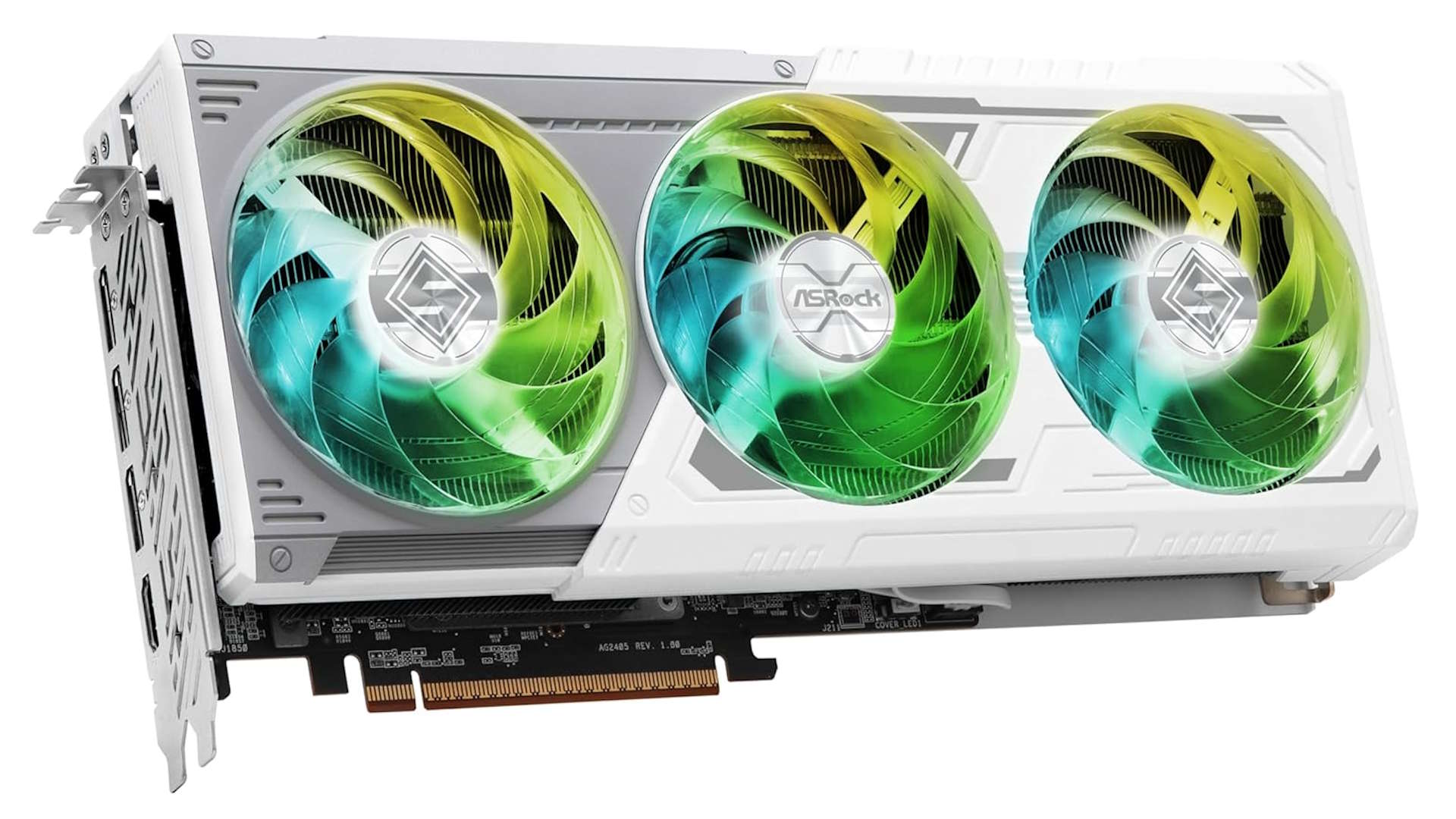
Specifications
Reasons to buy
Reasons to avoid
The GeForce RTX 5070 and Radeon RX 9070 go neck-and-neck in our test suite, but the RX 9070 has 16GB of VRAM and the RTX 5070 has just 12GB. That extra 4GB of memory can make all the difference at higher resolutions in today's hottest games, and when you're spending this much money on a powerful GPU, we don't think you should ever have to worry about running out of VRAM.
In our recent testing of RTX 50-series cards, loading up RT and DLSS and framegen, as Nvidia pushes as the future of gaming, can really put pressure on VRAM in some of today's most demanding titles. As a result, you may sometimes have to pick and choose which of those features you want to enable on the RTX 5070 (a balancing act you don't have to perform on the much cheaper RTX 5060 Ti 16GB!)
All of that means the RTX 5070 is great most of the time across our evolving game test suite, but the RX 9070 is great all of the time.
The RX 9070 also benefits from not being pushed to the very edge of its voltage-and-frequency curve to hit the highest possible performance levels, as the RX 9070 XT is, so it's also among the most efficient graphics cards available today if performance-per-watt is a concern for you.
If you're not gaming at 4K with all the RT and DLSS bells and whistles turned up, the RTX 5070 is still a great graphics card, and the image quality and smoothness benefits of DLSS 4 can't be dismissed. Even so, we've seen performance drops with the 5070 too many times in our test suite for us to generally recommend it right now. (The correct number of times this should happen on a graphics card this expensive is zero.)
Rumors are swirling that Nvidia could eventually release refreshed Blackwell cards with more VRAM, and if that happens, the RTX 5070 will be the biggest beneficiary. But if you're shopping in the sweet spot of enthusiast gaming, we think the RX 9070 remains the card to get right now.
Read: AMD Radeon RX 9070 review
3. Best enthusiast GeForce RTX Blackwell card: GeForce RTX 5070 Ti, $809.99
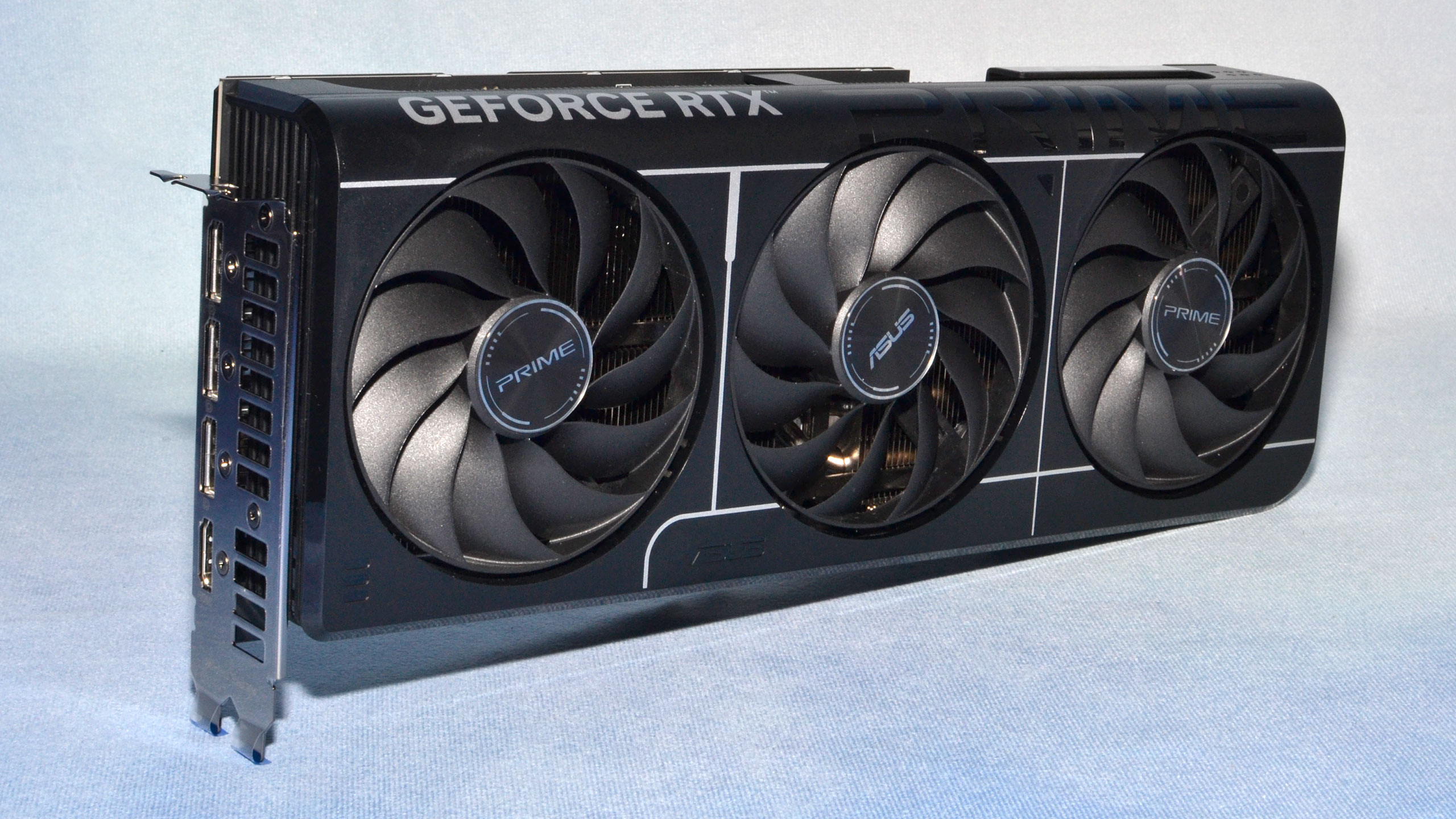
Specifications
Reasons to buy
Reasons to avoid
If you want the best blend of high performance and cutting-edge graphics tech out there, the GeForce RTX 5070 Ti is it. This card comes with full support for Nvidia’s latest DLSS 4 upscaling and Multi-Frame Generation, and its 16GB of VRAM gives you full freedom to enable every DLSS 4 feature.
AMD’s closest competitor, the Radeon RX 9070 XT, tends to be significantly cheaper than the RTX 5070 Ti, but the AMD card obviously doesn’t support DLSS 4. For the privilege of those capabilities, you'll generally need to spend about 20% more money for just 5% more baseline performance than AMD’s current best before you start enabling all the DLSS 4 features Blackwell supports.
We're personally fans of MFG when it's implemented well, and DLSS upscaling is still superior to and much more widely adopted than FSR 4. Our expanded RT test suite also shows that Blackwell can keep an edge in performance and smoothness over RDNA 4 when the rays start flying, so there are still compelling arguments for choosing an RTX 5070 Ti over the Radeon RX 9070 XT. You'll just need to decide whether you can stomach the substantial upcharge.
What about the RTX 5080? Nvidia's second-fastest Blackwell card is anywhere from 8% to 16% faster than the 5070 Ti, with the biggest gap at 4K. Prices for the 5080 have come down somewhat since our last update, and it's fairly easy to find one in the $999-to-$1099 band that we consider reasonable.
Unless you really need every last drop of performance you can get for 4K gaming without upgrading to an RTX 5090, however, we don't think the RTX 5080 offers enough value for the money to justify shelling out the extra cash over a 5070 Ti.
Read: Nvidia GeForce RTX 5070 Ti review
4. Best mainstream graphics card: RTX 5060 Ti 16GB, $469.99
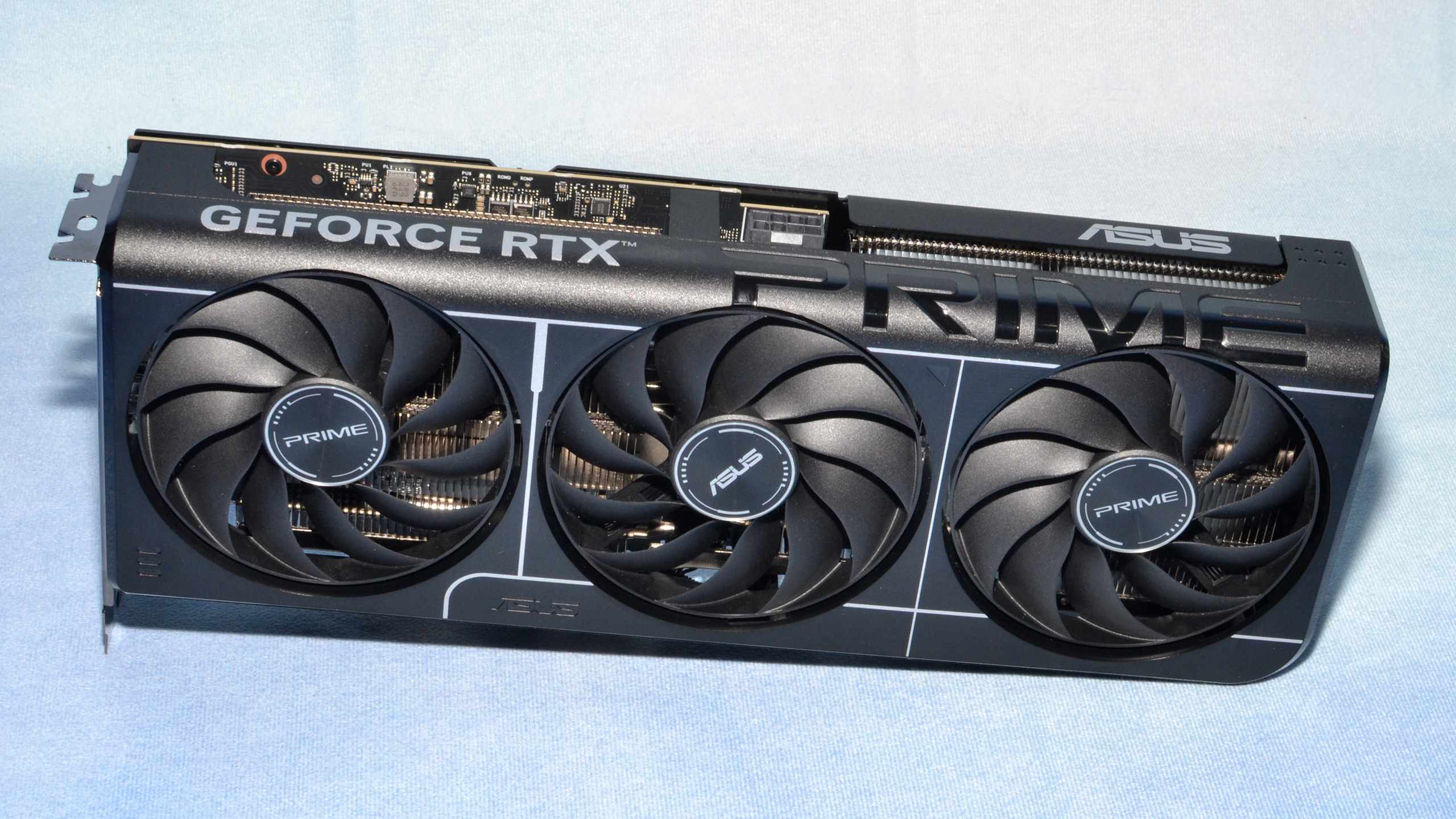
Specifications
Reasons to buy
Reasons to avoid
As we work through our evolving gaming test suite, the RTX 5060 Ti has been a standout. It consistently delivers faster and smoother gaming than the competing Radeon RX 9060 XT across today's most demanding titles with RT on or off, and its 16GB of VRAM means you can enjoy all of Nvidia's DLSS 4 features without endless tweaking to optimize memory usage.
The RTX 5060 Ti offers performance about 7-8% faster than the RX 9060 XT 16GB across our full test suite of raster and RT games at 1080p and 1440p, all for about 23% more money than the Radeon.
For the extra money, you get superior DLSS 4 Transformer upscaling, and Multi-Frame Generation gives you the flexibility to take greater advantage of a high-refresh rate monitor than cards that lack it.
16GB of VRAM on the 5060 Ti means you have all the space you need for both game data and DLSS’s AI models, unlike its 8GB counterpart. And while it’s not a decisive factor, the RTX 5060 Ti 16GB does draw about 10% less power under load than the RX 9060 XT 16GB, so its power efficiency is superior to AMD’s, too.
If you’re not sold on the value of MFG and are less sensitive to the image quality differences between upscalers, $90 or so is a lot to ask over the Radeon RX 9060 XT, and we’d happily game on AMD’s card all day long. AMD's upcoming FSR Redstone feature release could also get AMD a lot closer to Nvidia's gaming image quality and performance flexibility, too.
But of all the sub-$500 graphics cards I've gamed with, the RTX 5060 Ti is just nicer than the RX 9060 XT 16GB, even without DLSS and MFG enabled. The 9060 XT 16GB occasionally hitches and stutters in our test suite in ways that take me out of the experience, whereas the RTX 5060 Ti rarely does.
If you shell out for the RTX 5060 Ti 16GB, you'll be rewarded with a consistently excellent experience, and that consistency is worth the bit of extra cash if you expect to get years of gaming fun out of a GPU.
Read: Nvidia GeForce RTX 5060 Ti 16GB review
5. Best enthusiast value graphics card: Radeon RX 9060 XT 16GB, $389.99
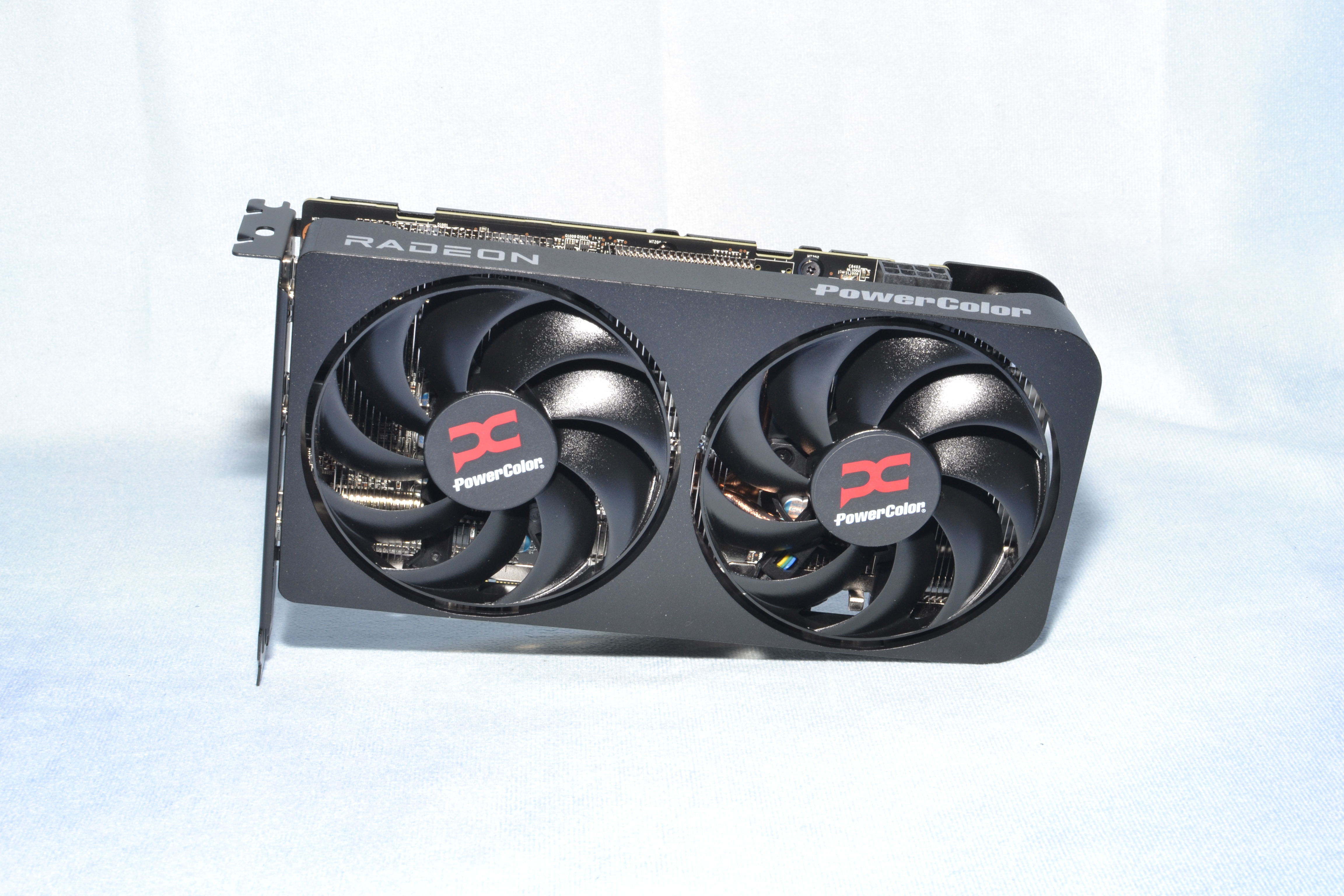
Specifications
Reasons to buy
Reasons to avoid
AMD's Radeon RX 9060 XT 16GB can handle basically anything the mainstream gamer can throw at it at 1920x1080 and 2560x1440, all at a price that handily undercuts the comparable RTX 5060 Ti 16GB.
The RX 9060 XT enjoys the much-improved ray-tracing and AI performance of the RDNA 4 architecture, both of which bring Radeons a lot closer to the latest Nvidia competition. And its 16GB of VRAM gives mainstream gamers the assurance they'll basically never find VRAM a bottleneck in modern games at 1080p and 1440p resolutions.
Like the RX 9070 XT, the 9060 XT 16GB gives you access to AMD's much-improved FSR 4 upscaling tech, allowing you to boost performance with a small hit to image quality in the small but growing list of titles that support it. FSR Frame Generation, however, remains limited to a doubling of output frame rate at best, so it’s not a direct competitor to Nvidia’s DLSS 4 with MFG. That may be set to change with the upcoming FSR Redstone update, but we'll need to experience those features firsthand before we make any judgments.
The RTX 5060 Ti 8GB is the RX 9060 XT 16GB's closest Nvidia competition, dollar for dollar, but we can’t recommend it at all. If you're spending over $350 on a GPU, we don't think you should have to fine-tune every setting to avoid running out of VRAM. The RX 9060 XT is easy to live with for a wide range of gamers in a wide range of games, all for a reasonable price, and that’s why it won our Editor’s Choice award.
Read: AMD Radeon RX 9060 XT 16GB review
6. The best $300(ish) graphics card: Nvidia GeForce RTX 5060, $309.99
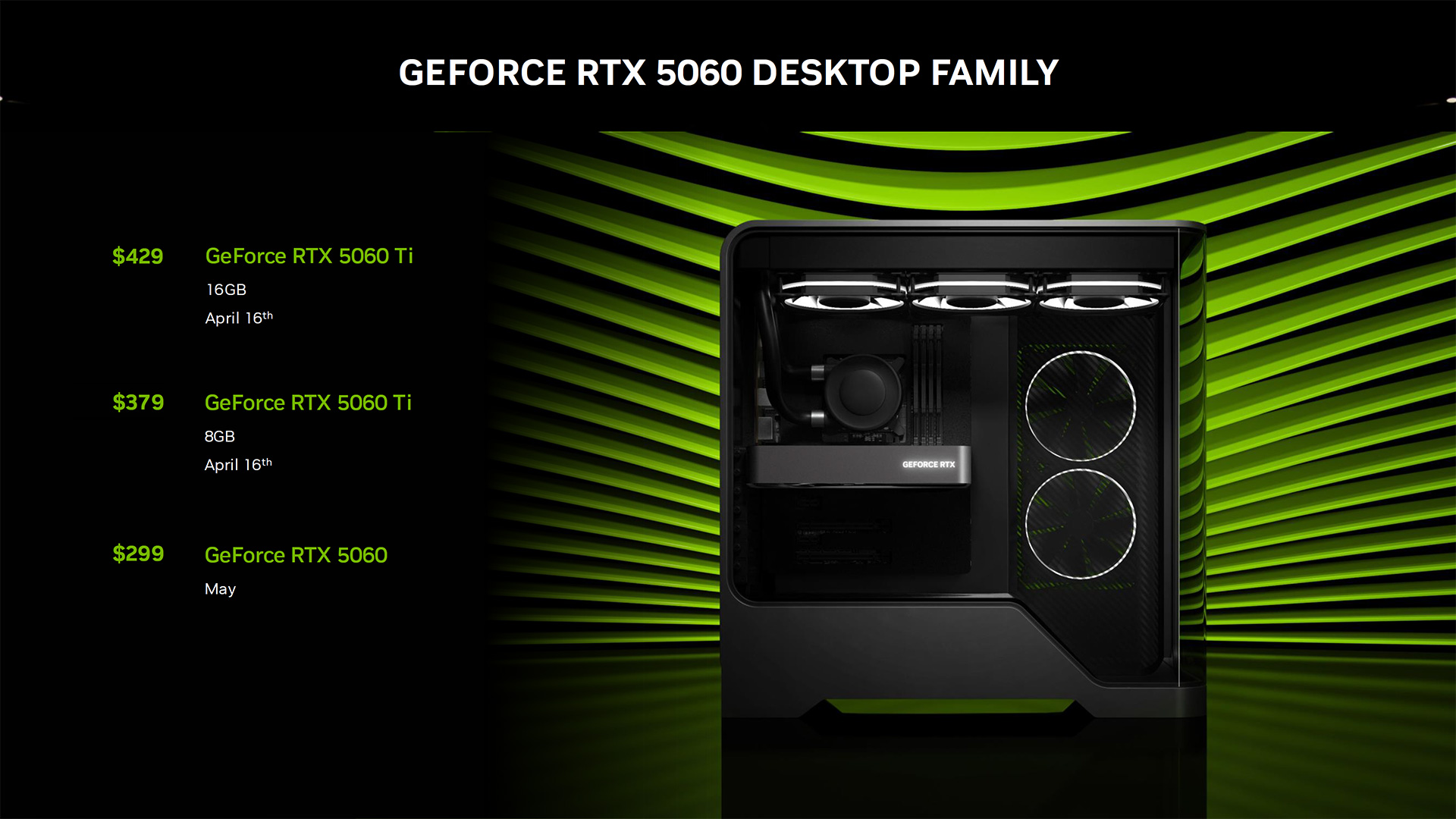
6. Nvidia GeForce RTX 5060
Specifications
If you absolutely can't spend more than $300 or so and want to get your PC game on at 1080p, we think the RTX 5060 is your best bet. The midpoint of RTX 5060 prices is around $320, but it's so easy to find these cards for their $299.99 MSRP that we wouldn't look at anything pricier for even a second.
The RTX 5060 has impressive baseline performance for 1080p gaming in wildly popular titles like Fortnite, Counter-Strike 2, Marvel Rivals, and Apex Legends that aren't hungry for giant pools of VRAM, and access to the performance and image quality of the DLSS 4 upscaler is a big win in this segment.
If you can tune your settings right, enabling DLSS 4 Multi-Frame Generation could make for an even smoother ride on this card, but we find that 8GB of VRAM isn't enough to consistently enable framegen in the titles where you'd really want it. The feature often doesn't work if you're already at the limits of the RTX 5060's memory pool (or that of any 8GB Blackwell card), since the MFG AI model needs some VRAM of its own to run.
Every cent you can spend over $300 makes the RTX 5060 less appealing. If you can wait and save, the Radeon RX 9060 XT 16GB is more capable across a broader range of settings and resolutions than the RTX 5060. It's well worth the extra money.
AMD's toughest competition for the RTX 5060 is the RX 9060 XT 8GB, which also lists for $299 but can often be found for as low as $269 (or less) on sale. Despite its much-maligned 8GB of VRAM, the 9060 XT 8GB put in a strong showing in our recent RTX 5050 review, but not consistently enough to beat out the RTX 5060 and take home our general recommendation.
When the RX 9060 XT can bring its full compute horsepower to bear in certain games, it can handily outpace the RTX 5060, so it's worth checking out our recent review and seeing whether a game you love benefits from the Radeon's raw muscle.
Read: Nvidia GeForce RTX 5060 Ti review
7. The best graphics card, period: GeForce RTX 5090, $2649.99
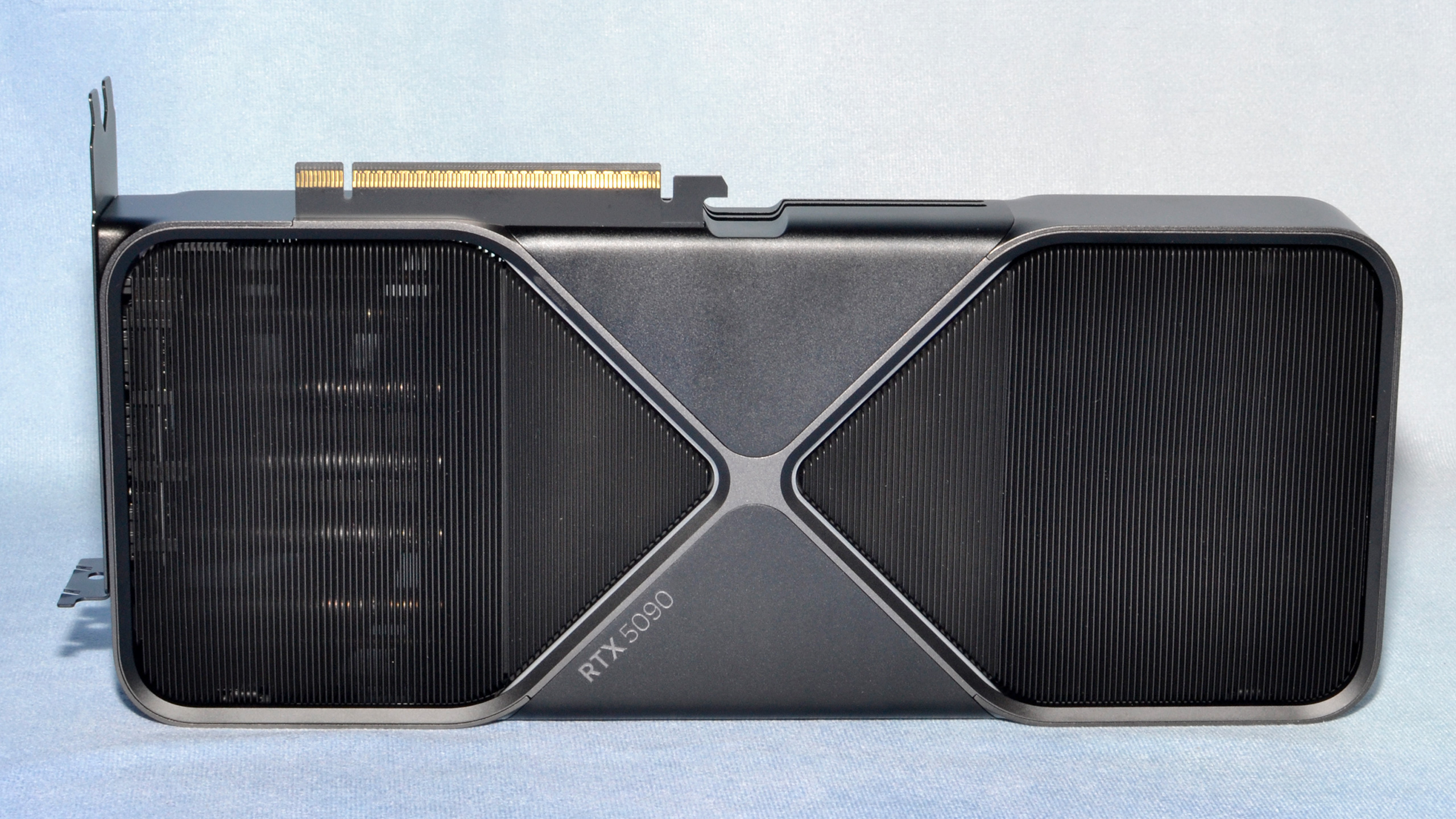
Specifications
Reasons to buy
Reasons to avoid
There's nothing else like the GeForce RTX 5090. There's practically nothing it can't do for the modern gamer at any setting or display resolution. If you want to turn on every bell and whistle in modern games at 4K (or beyond), the RTX 5090's sheer shader horsepower, along with support for Nvidia's DLSS 4 upscaling and multi-frame generation, lets you tune your gaming experience to perfection even on high-refresh-rate 4K displays.
If you're a hardcore PC gamer who demands only the best, the hair will stand up on the back of your neck when you watch the RTX 5090 breeze through workloads that other graphics cards leak out all their thermal gel about.
At its $3000-ish street price today, an RTX 5090 is an indulgence of the highest order, but without a compelling AMD alternative even on the horizon, considerations of value don't really apply in this segment.
This card needs a system with a massive power supply, one of our best gaming CPUs, and a top-shelf monitor to take full advantage of its astounding capabilities, and all those spendy components add up. But if you're shopping for a graphics card of this caliber, you probably don't need us to tell you all that.
If Nvidia and its industry partners fixed the meltdown-prone ATX12V-2x6 connector, the RTX 5090 would be as close to gaming perfection as any graphics card that's ever been made. Guess that's something to improve on the RTX 6090.
Read: Nvidia GeForce RTX 5090 Founders Edition review
8. The best cheap graphics card: Intel Arc B570, $209
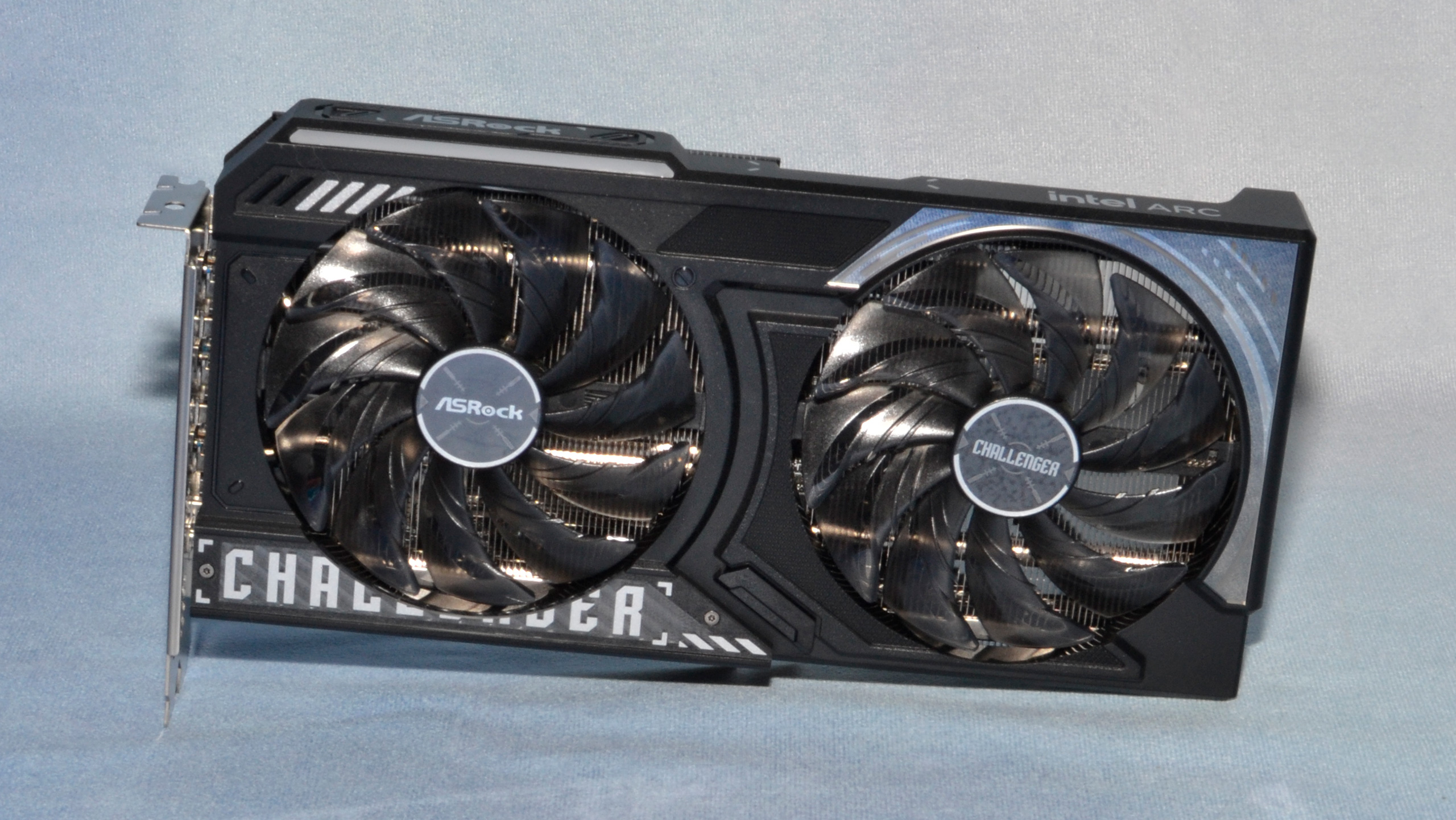
Specifications
Reasons to buy
Reasons to avoid
If even $300 is too much for a new GPU with a warranty in your parts list, you're hard up for options. Nvidia and AMD have sorely neglected this price point, and the recently launched RTX 5050 didn't change that much.
It's easy to find a B570 at or for less than its $219 MSRP now, and if you can't even stretch your budget up to an RTX 5060 or RX 9060 XT 8GB, this card is... fine.
10 GB of VRAM is handy insurance for the growing list of games that might want more than 8GB at 1920x1080. Stick to high settings, and this card should deliver a solid 60 FPS average or better in many games. Its modest power requirements won't strain a cheap or aged PSU, and the ASRock Challenger card you'll most often find at MSRP is practically silent.
Intel's Xe2 graphics architecture has everything today's games want, including credible RT support, XMX AI accelerators for XeSS upscaling and frame generation, and a modern media engine with high-quality accelerated encoding. The B570 is a modern graphics card through and through, just not a particularly powerful one.
In the event that the B570's baseline performance isn't enough, gamers can take advantage of Intel's XeSS upscaling in a broad range of titles to get the most out of this card. Intel's AI-powered upscaler tends to deliver better results than AMD's FSR 3.x and earlier attempts, and it's in enough major games that you might actually see it in settings lists.
Intel has the necessary weapons in its software arsenal to make the B570 an even smoother operator with XeSS 2 and Xe Frame Generation, but adoption remains glacial. XeSS 2 works well in our experience, but it's in just 44 games right now, far behind the hundreds of titles incorporating the latest DLSS and FSR features. We hope Intel continues to encourage more and more devs to incorporate XeSS going forward, as this card will become a stronger and stronger option with every title that supports it.
Read: Intel Arc B570 review
How we test the best graphics cards
Determining pure graphics card performance is best done by eliminating all other bottlenecks — as much as possible, at least. To that end, our updated 2026 graphics card testbed consists of an AMD Ryzen 7 9800X3D CPU, ASRock X670E Taichi motherboard, 32GB G.Skill DDR5-6000 CL28 memory, Crucial T700 4TB SSD, Corsair HX1500i Platinum PSU, and a Cooler Master 280mm CPU cooler. The newer Ryzen 9 9950X3D might be slightly faster in some cases, but otherwise we've got just about the fastest components available so that our focus can be on the graphics cards.
We test across the three most common gaming resolutions, 1080p, 1440p, and 4K, using 'medium' and 'ultra' settings at 1080p and 'ultra' at 1440p and 4K. Where possible, we use 'reference' cards for all of these tests, like Nvidia's Founders Edition models and AMD's reference designs. Most midrange and lower GPUs don't get reference models, however, and in some cases we only have factory-overclocked cards for testing. We do our best to select cards that are close to the reference specs in such cases.
For each graphics card, we follow the same testing procedure. We run one pass of each benchmark to "warm up" the GPU after launching the game, then run at least two passes at each setting/resolution combination. If the two runs are basically identical (within 0.5% or less difference), we use the faster of the two runs. If there's more than a small difference, we run the test at least twice more to determine what "normal" performance is supposed to be.
We also look at all the data and check for anomalies. For example, we always expect the RTX 5080 to be faster than the RTX 5070 Ti. If it's not, and we're not in a CPU limited situation, we'll recheck both cards to ensure that our standings our accurate.
Due to the length of time required for testing each GPU, updated drivers and game patches inevitably come out that can impact performance. We periodically retest a few sample cards to verify our results are still valid, and if not, we go through and retest the affected game(s) and GPU(s). We may also add games to our test suite over time, if one comes out that is popular and conducive to testing. See what makes a good game benchmark for our selection criteria.
Best graphics cards performance results
Our updated test suite of games consists of 18 games at present, four of which have ray tracing enabled (seven of the games support DXR, but we only turn it on in cases where we feel the visual upgrades are worthwhile). The other 14 games are run in pure rasterization mode, whether or not they support ray tracing.
We also test everything without any upscaling or frame generation technologies. The difficulty with both upscaling and frame generation is that they're not universally supported, and the resulting image quality can vary quite a lot between the various algorithms. But if you want a quick and dirty summary: DLSS wins on image quality, with DLSS 4 offering enhanced upscaling and framegen support. FSR 3 gets more of a performance uplift from framegen but often looks more like bad interpolation; 3.1 mostly fixes that but isn't supported in as many games, while FSR 4 requires a 9070 card and seems to offer comparable image fidelity to DLSS 2. XeSS 1.3 and later are also comparable to DLSS 2/3 but aren't as widely supported.
The data in the following charts is from testing conducted during the past several months. We've tested all of the latest GPUs at every resolution and setting, even where it generally doesn't make sense (e.g. 4K with ray tracing at single digit framerates). For each resolution and setting, the first chart shows the geometric mean (i.e. equal weighting) for all tested games. The second chart shows performance in the 14 rasterization games, and the third chart focuses in on ray tracing performance in four games. Then we have the 18 individual game charts, for those who like to see all the data.
The charts below contain all the current Nvidia RTX 50-series, AMD RX 9000-series, and Intel Arc B-series graphics cards, plus a few prior generation cards that are still worth considering. Our GPU benchmarks hierarchy contains additional data for other tested GPUs if you want to see that. The charts are color coded with AMD in red, Nvidia in blue, and Intel in gray to make it easier to see what's going on.
The following charts are up to date as of March 28, 2025. Additional GPUs will be tested and added as needed.
Best Graphics Cards — 1080p Medium
Why you can trust Tom's Hardware
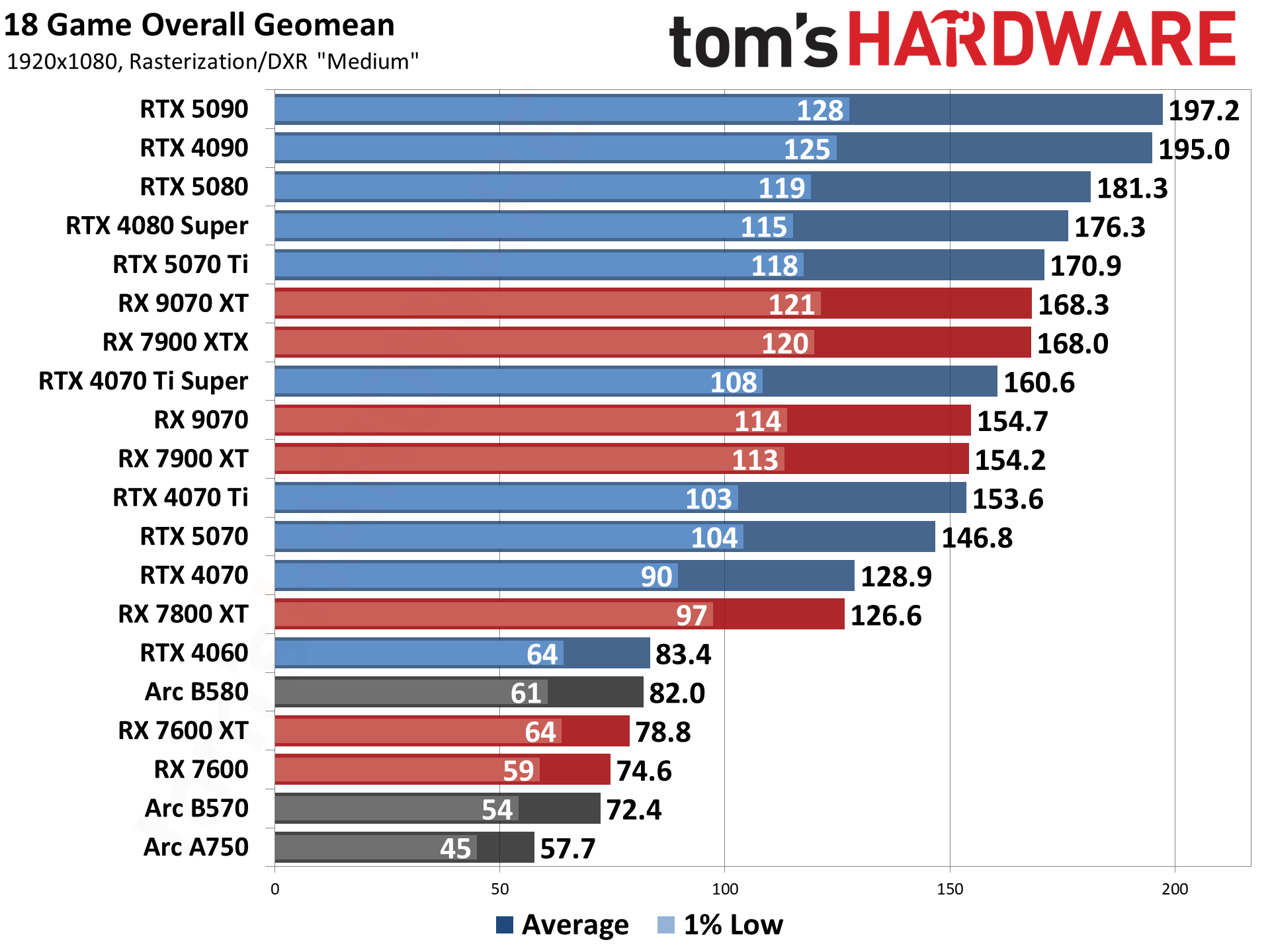
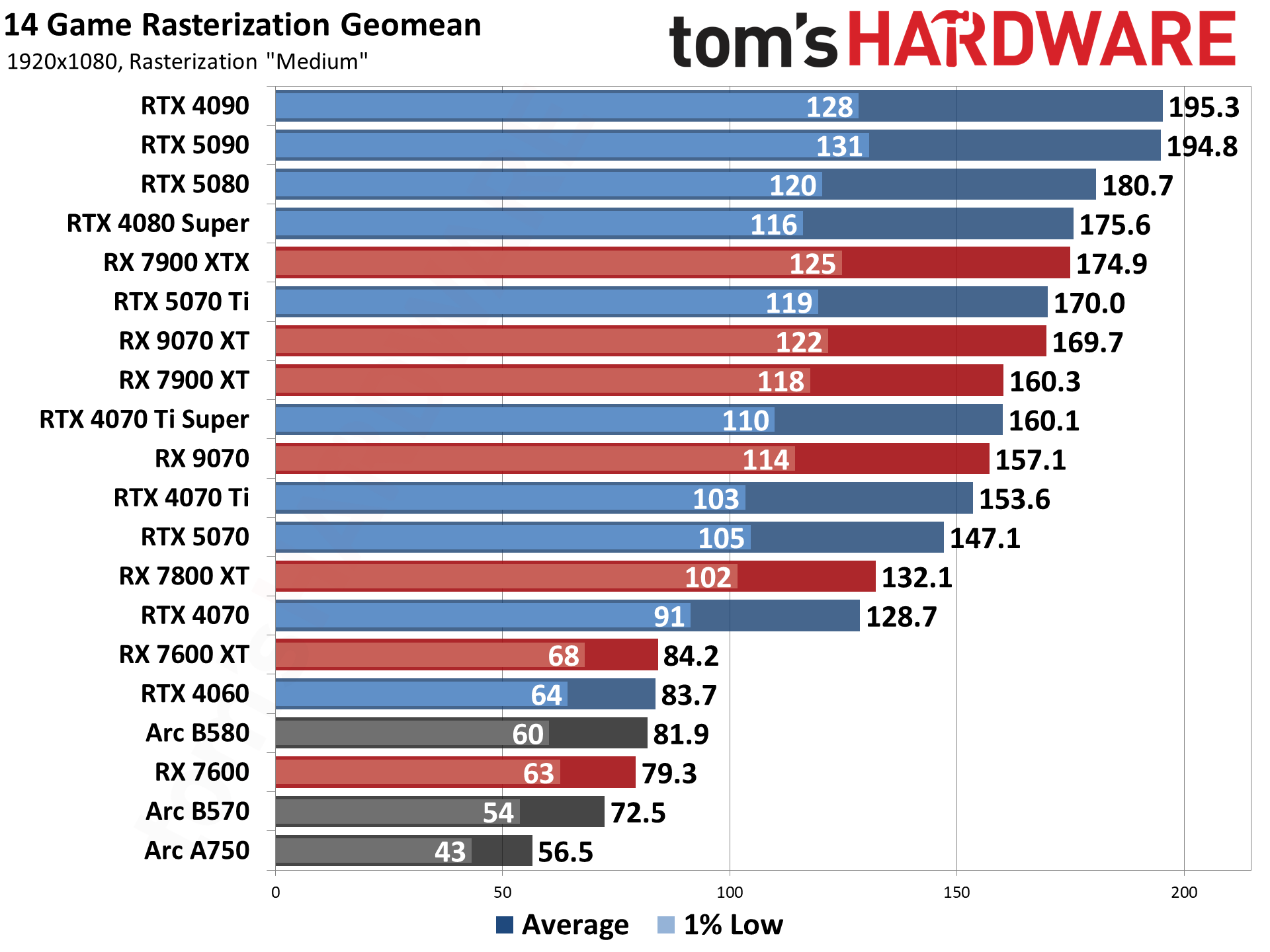
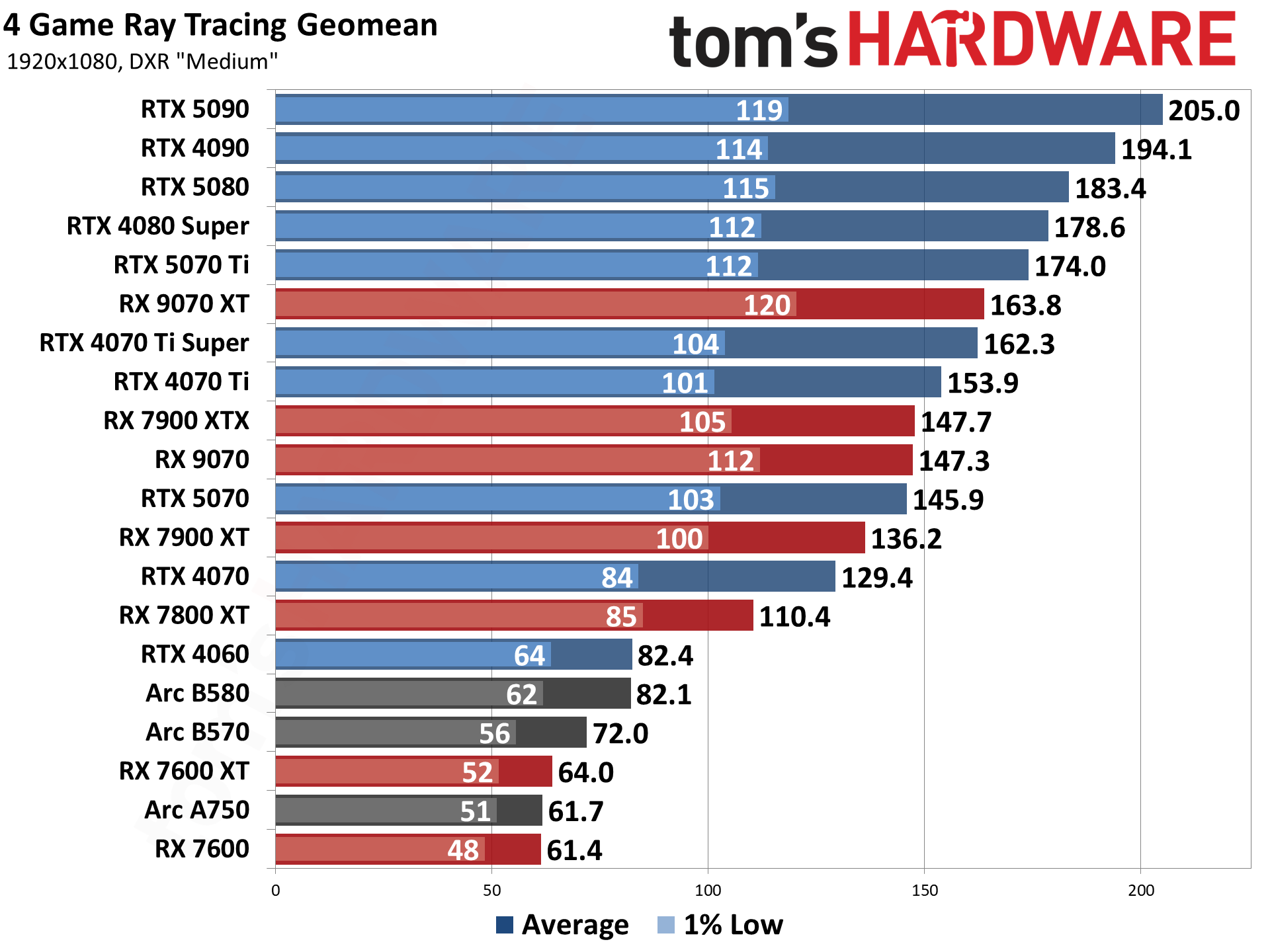
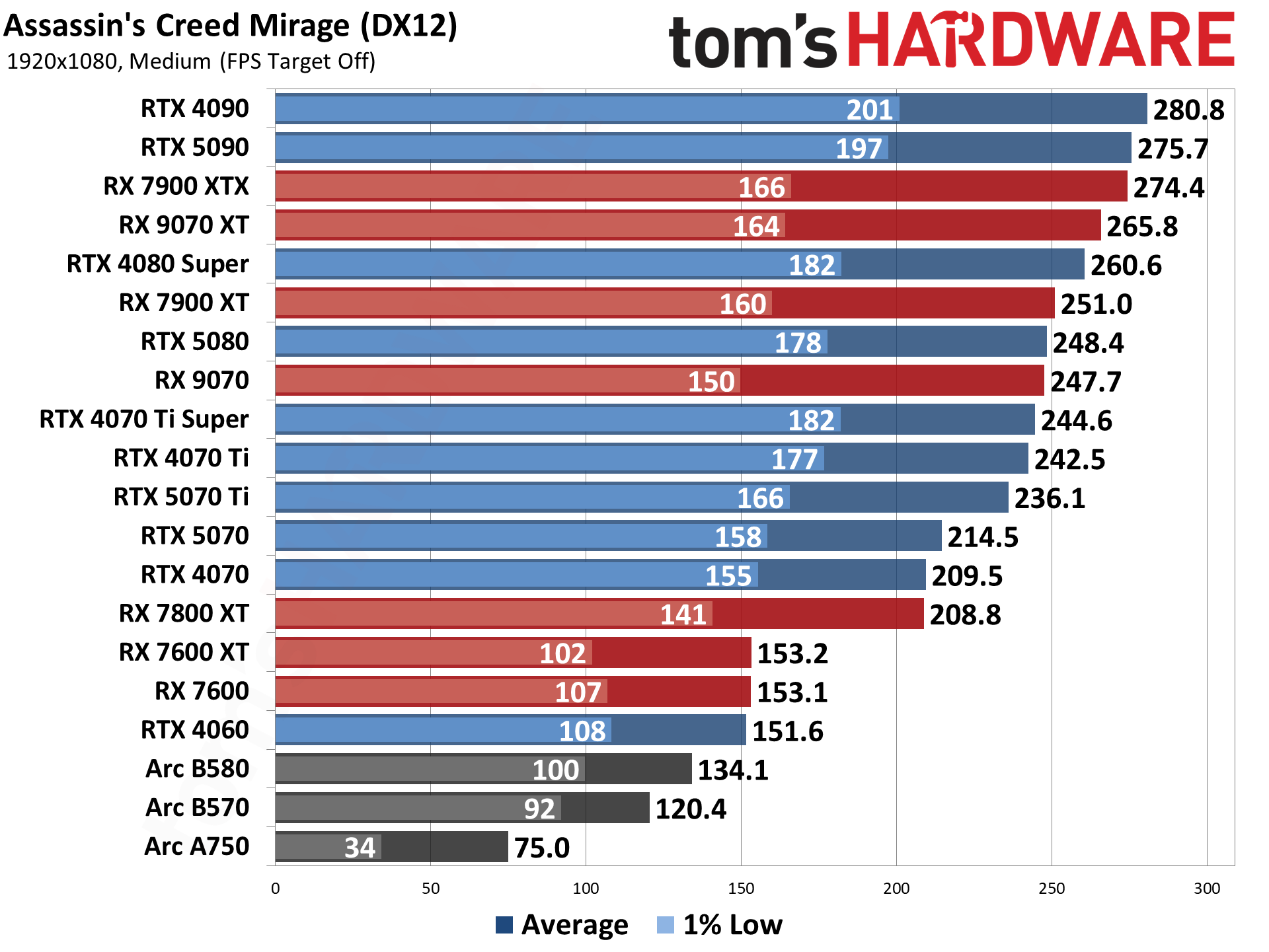
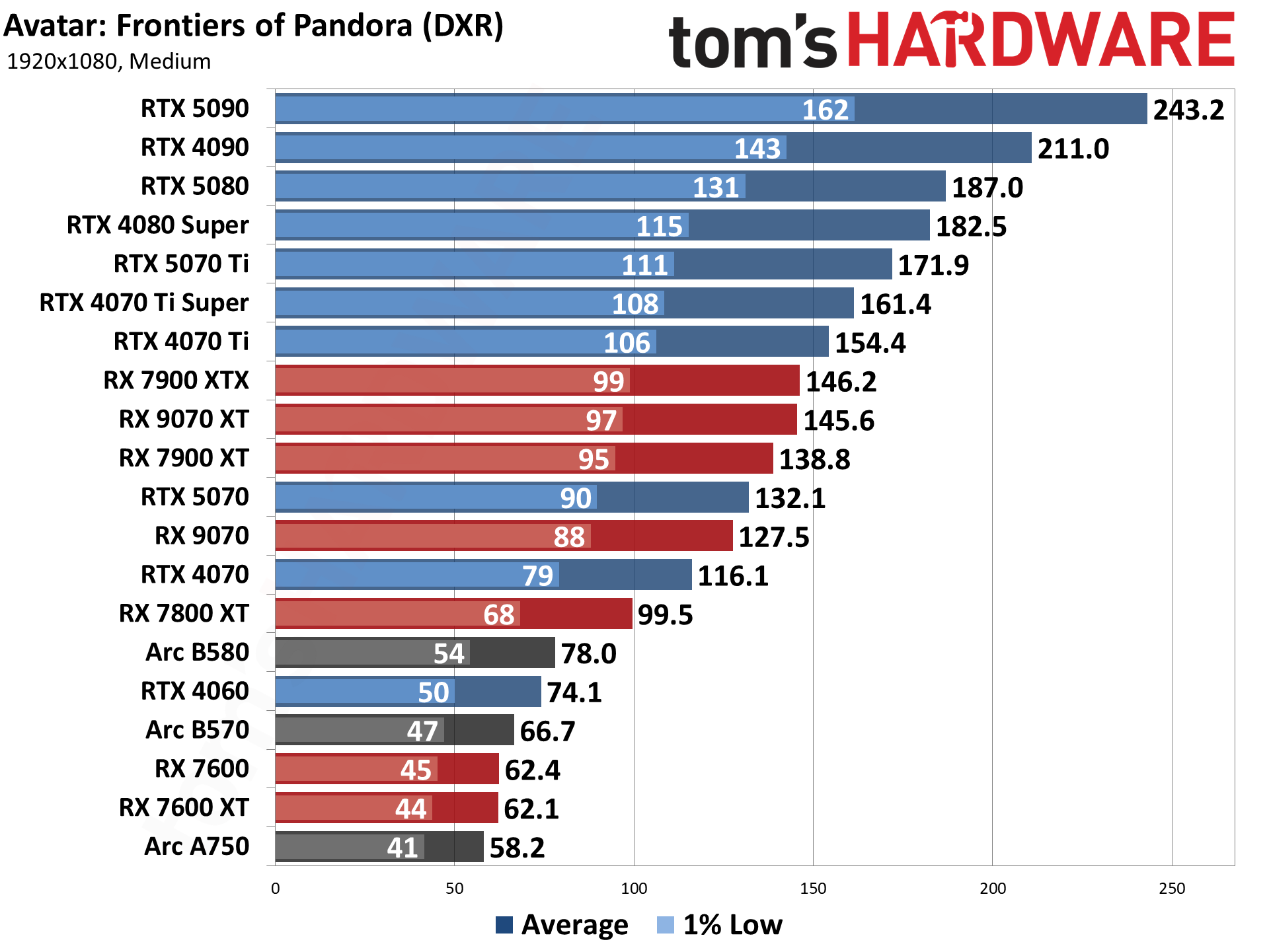
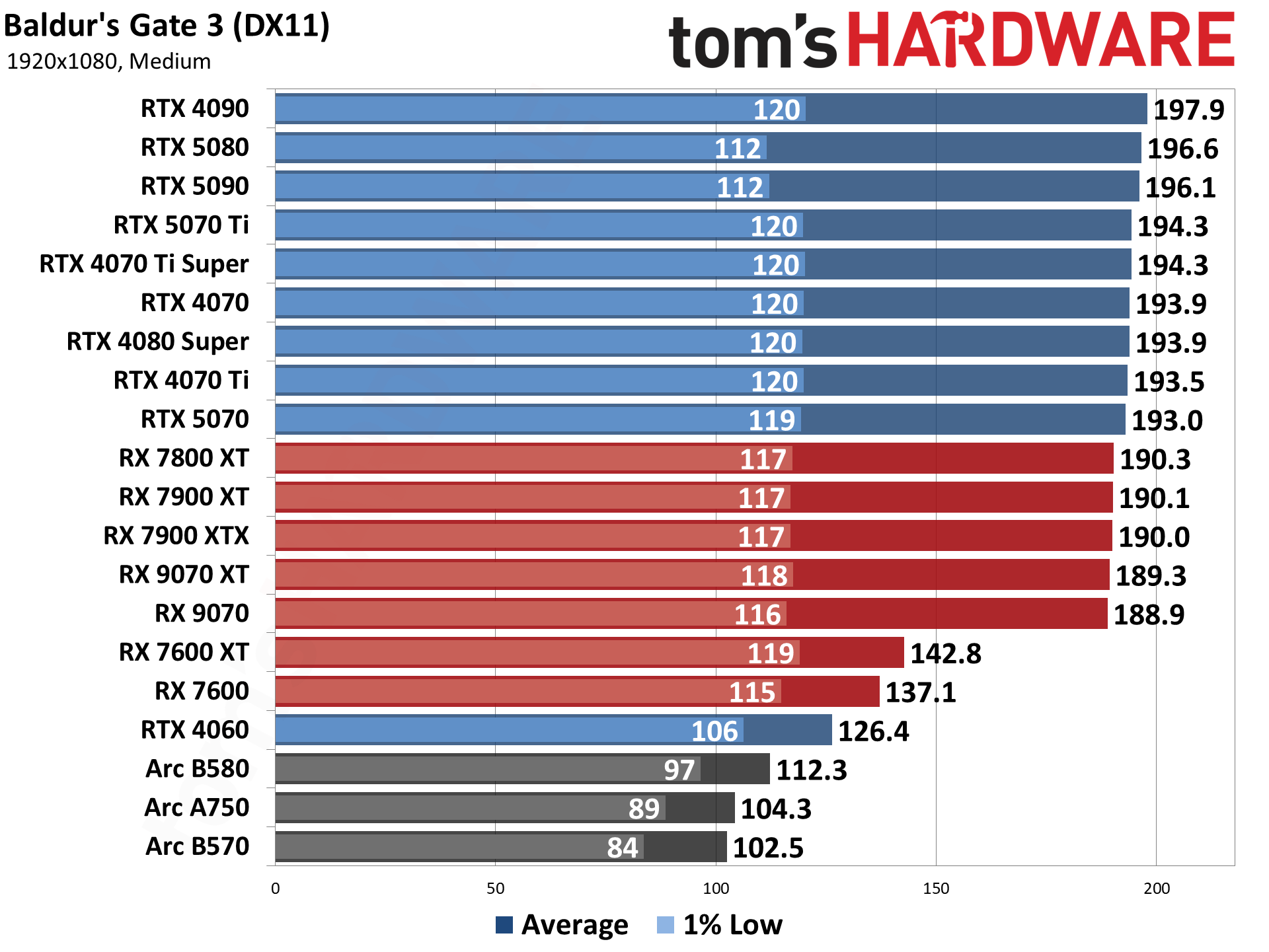
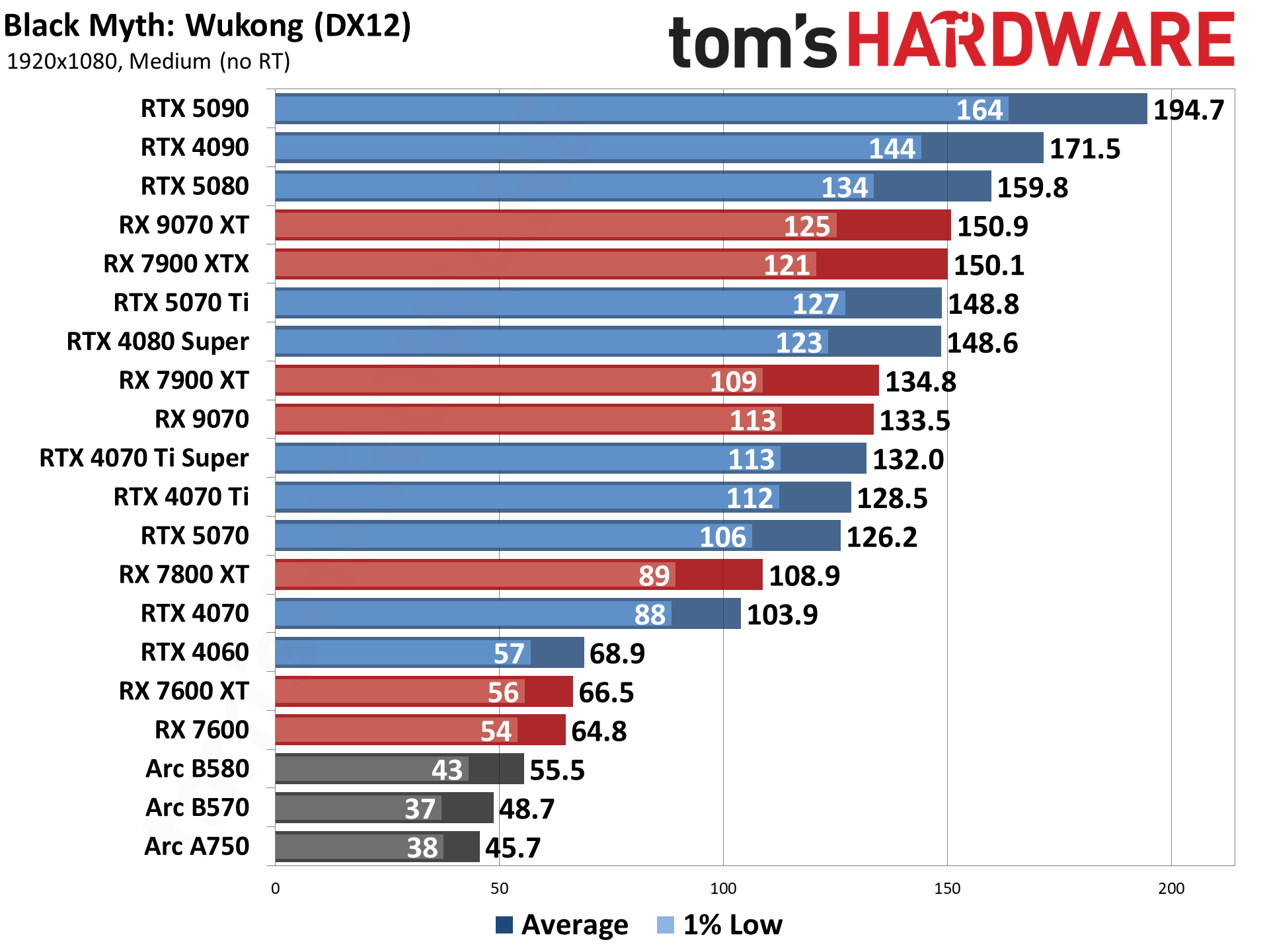
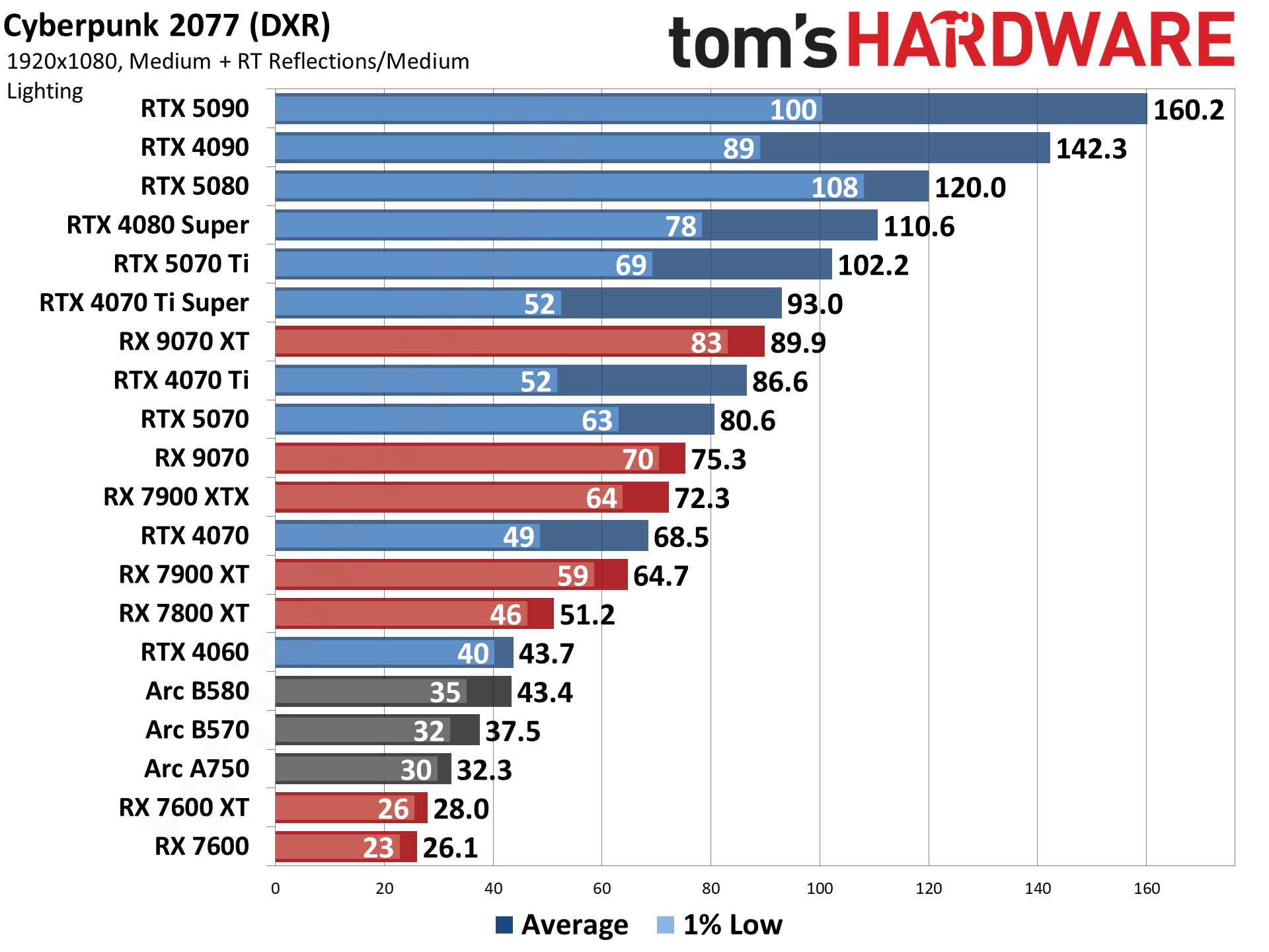
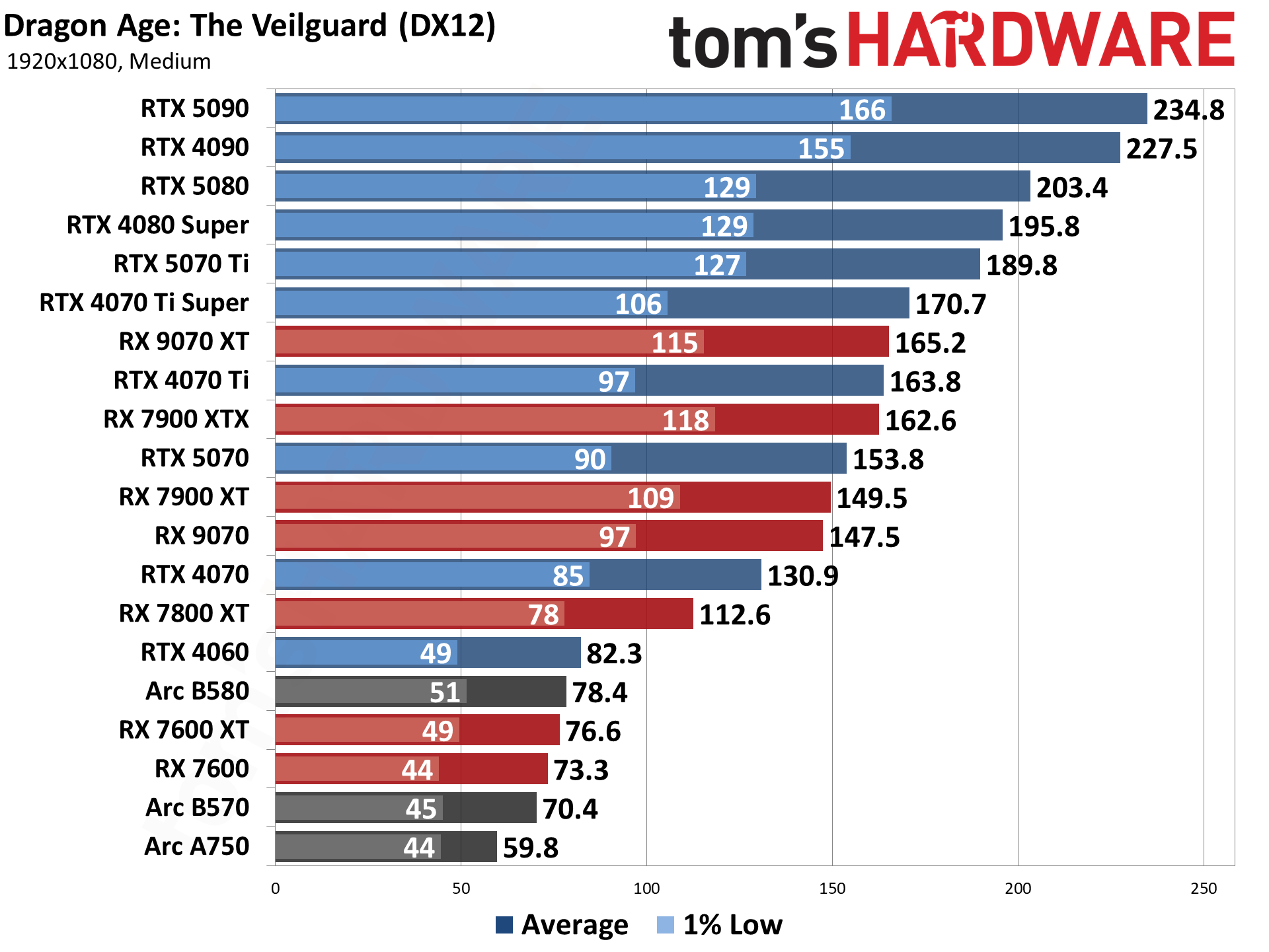
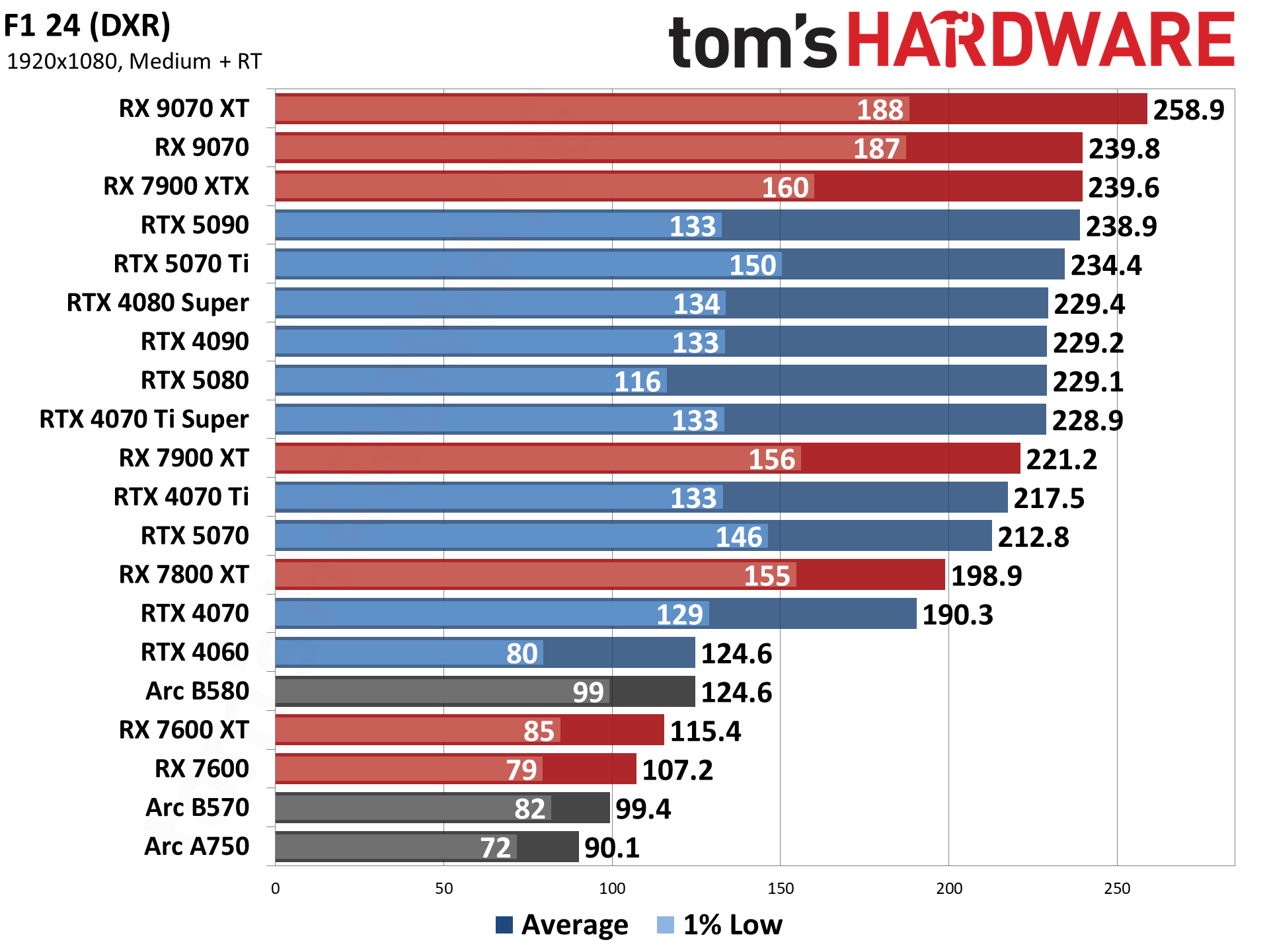
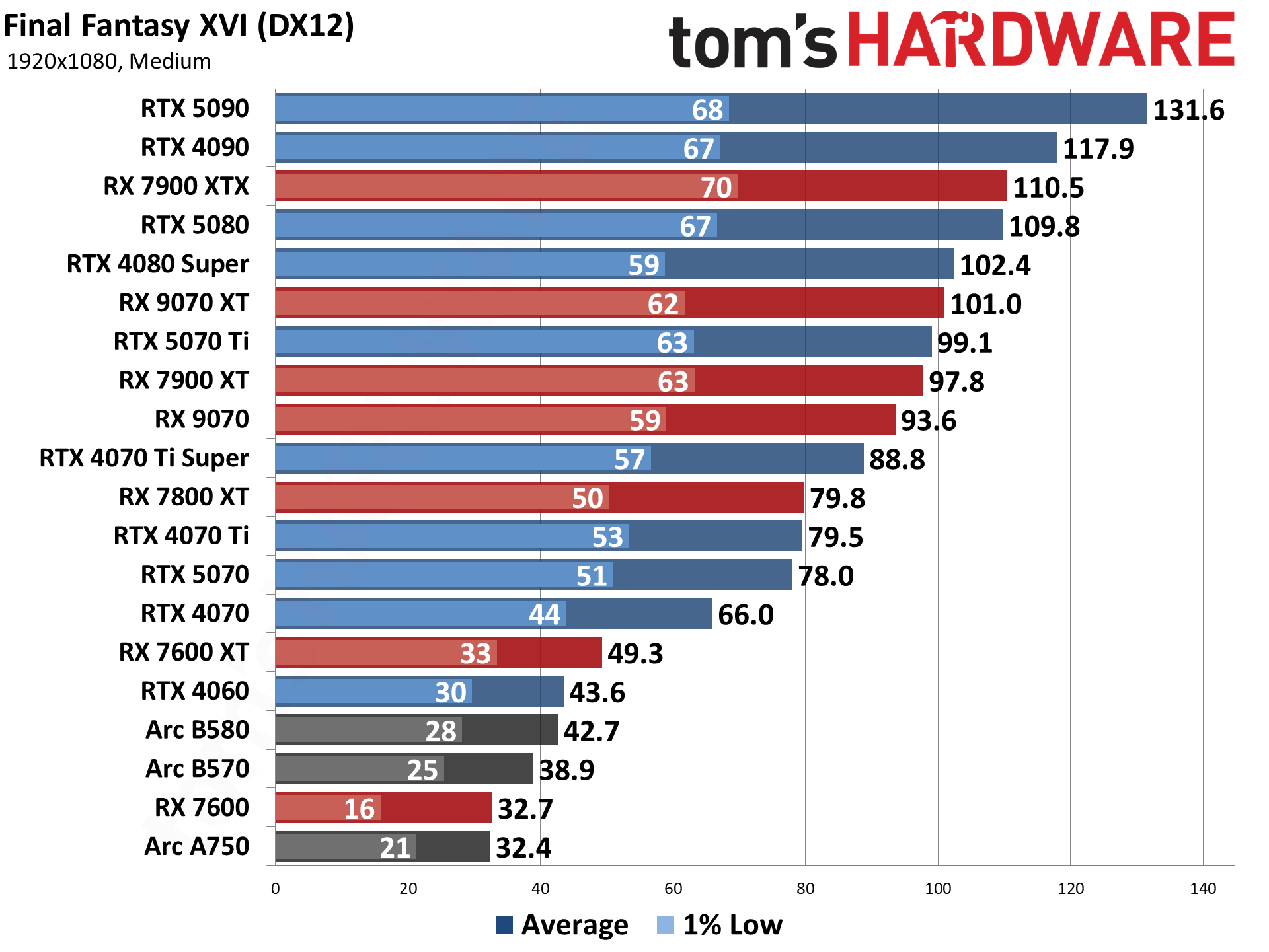
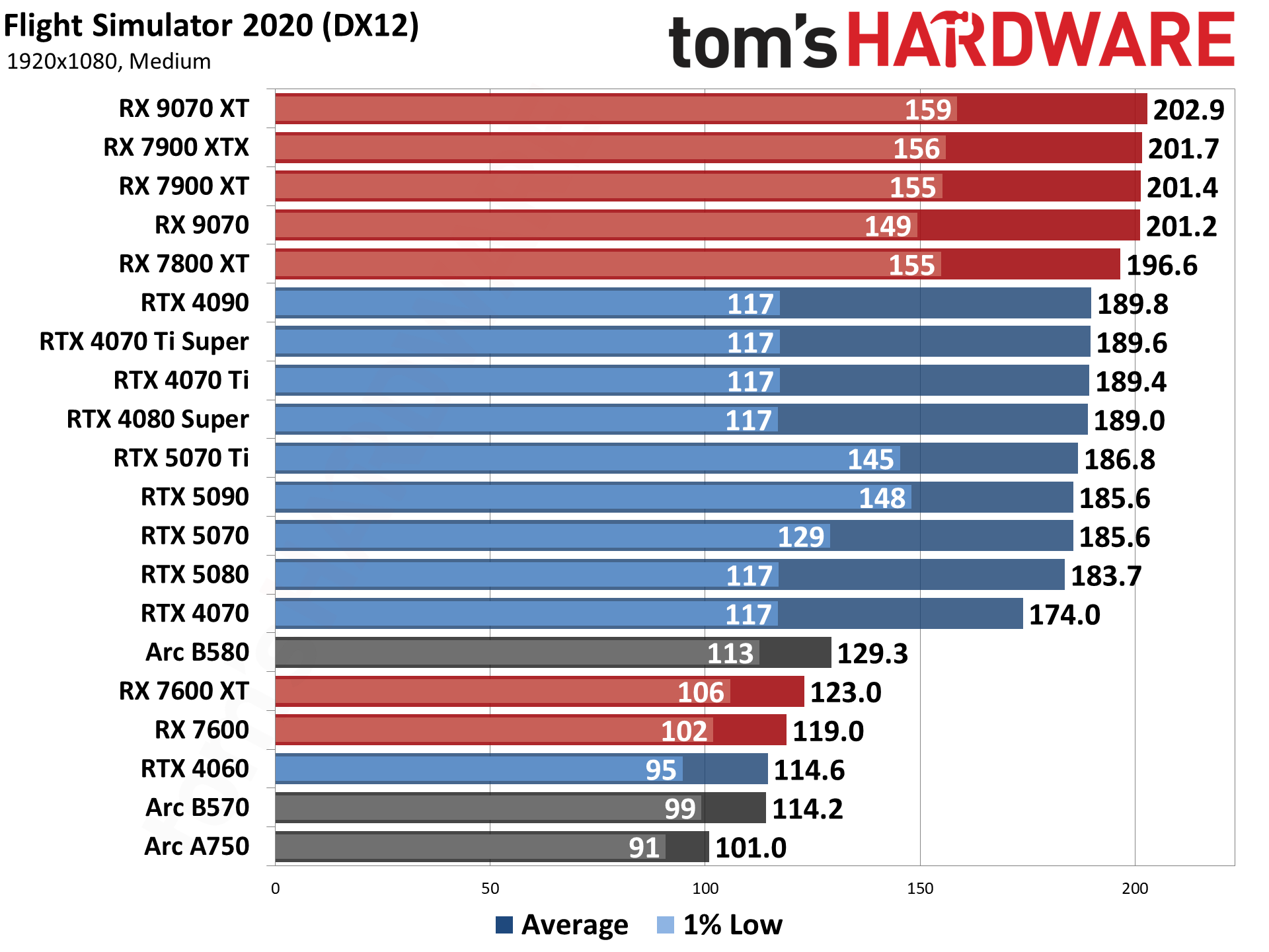
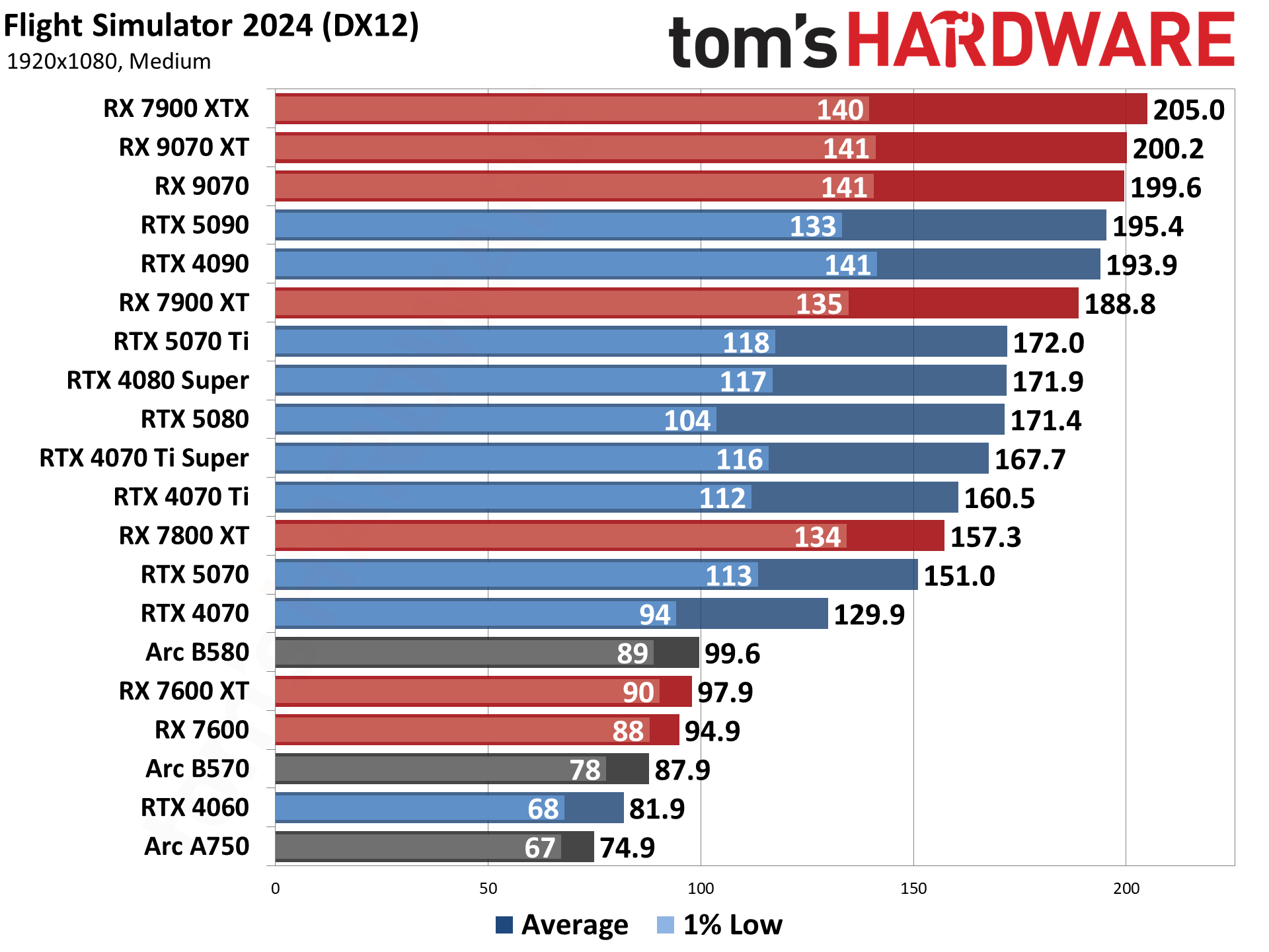
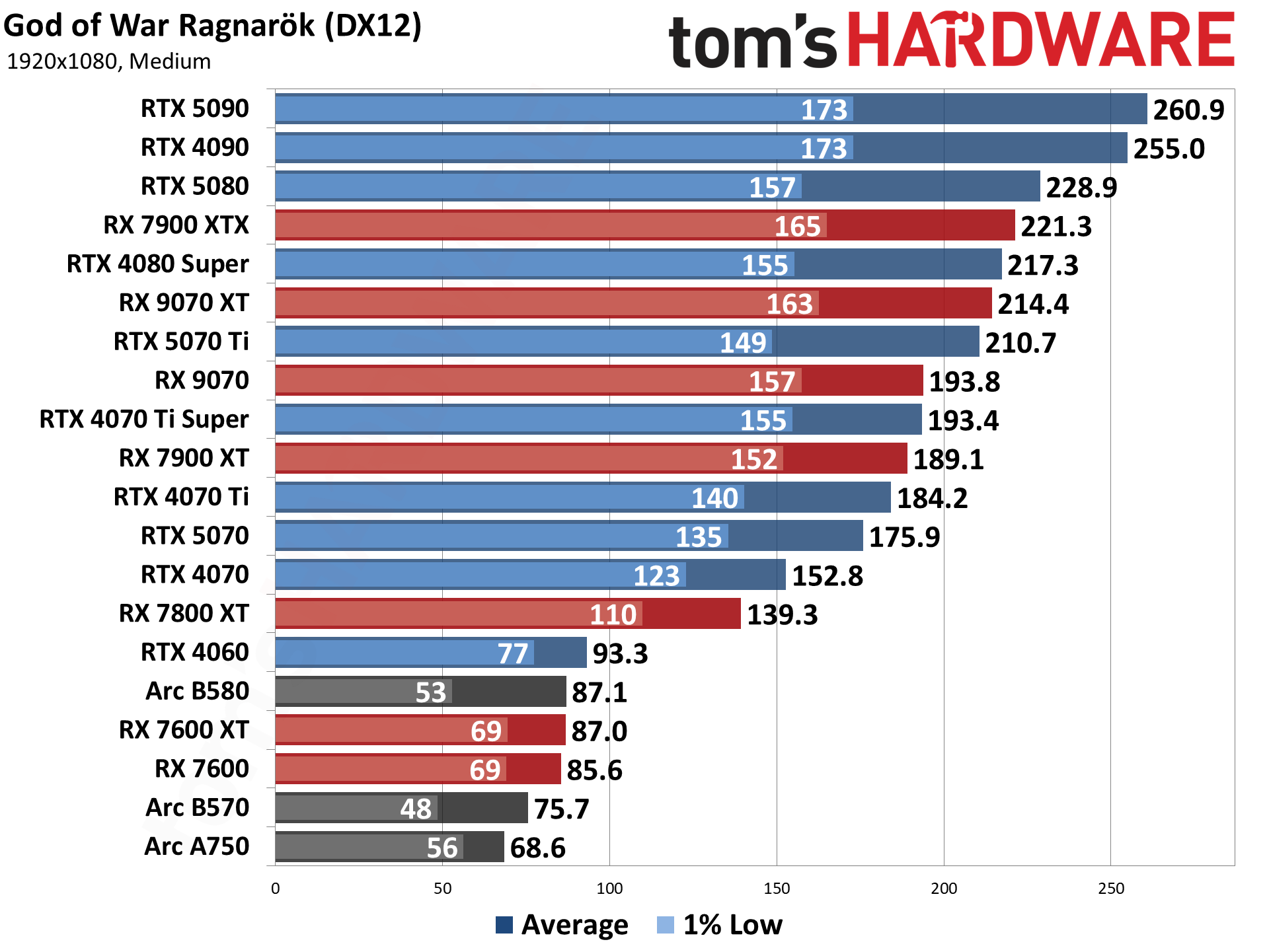
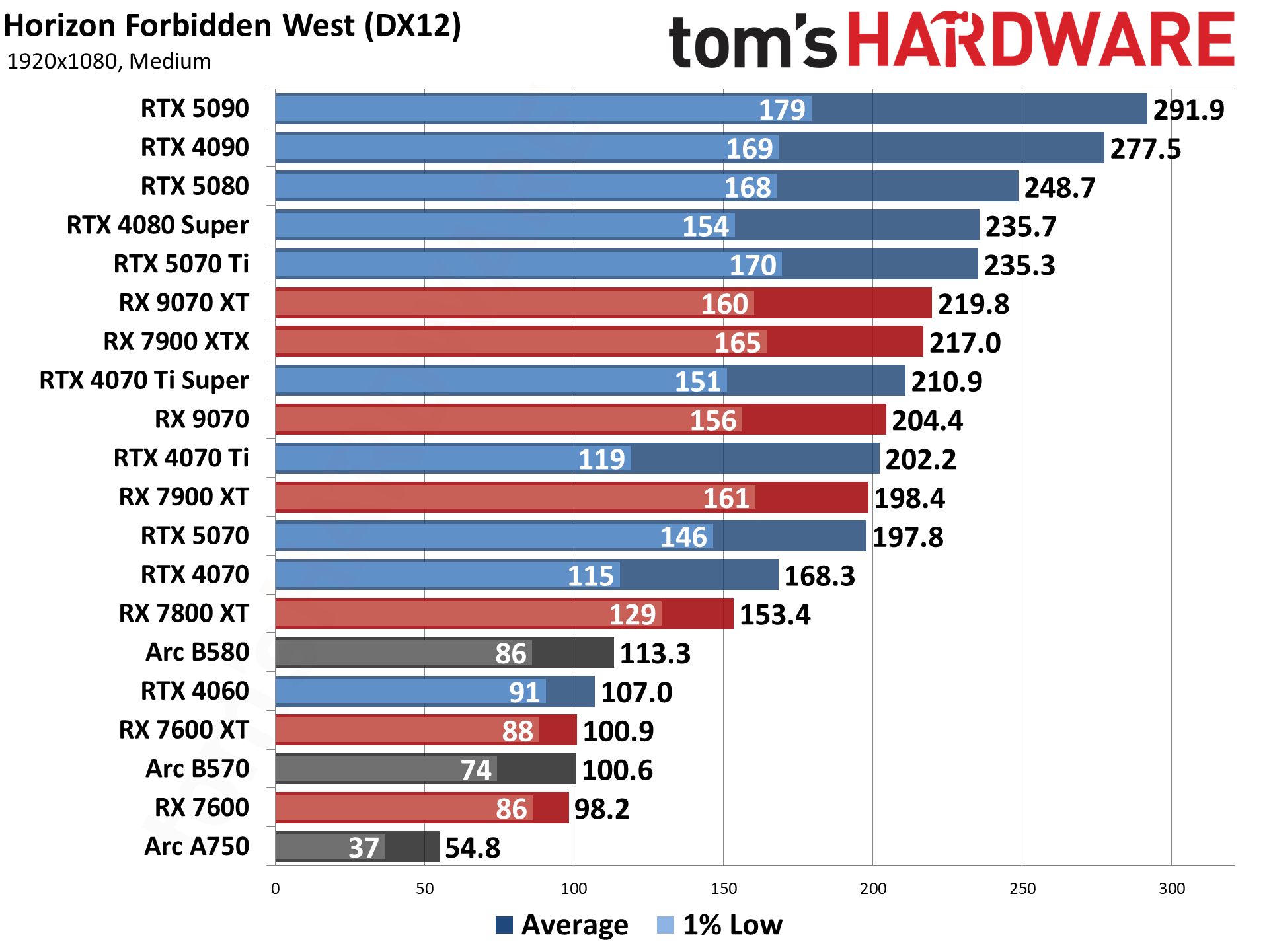
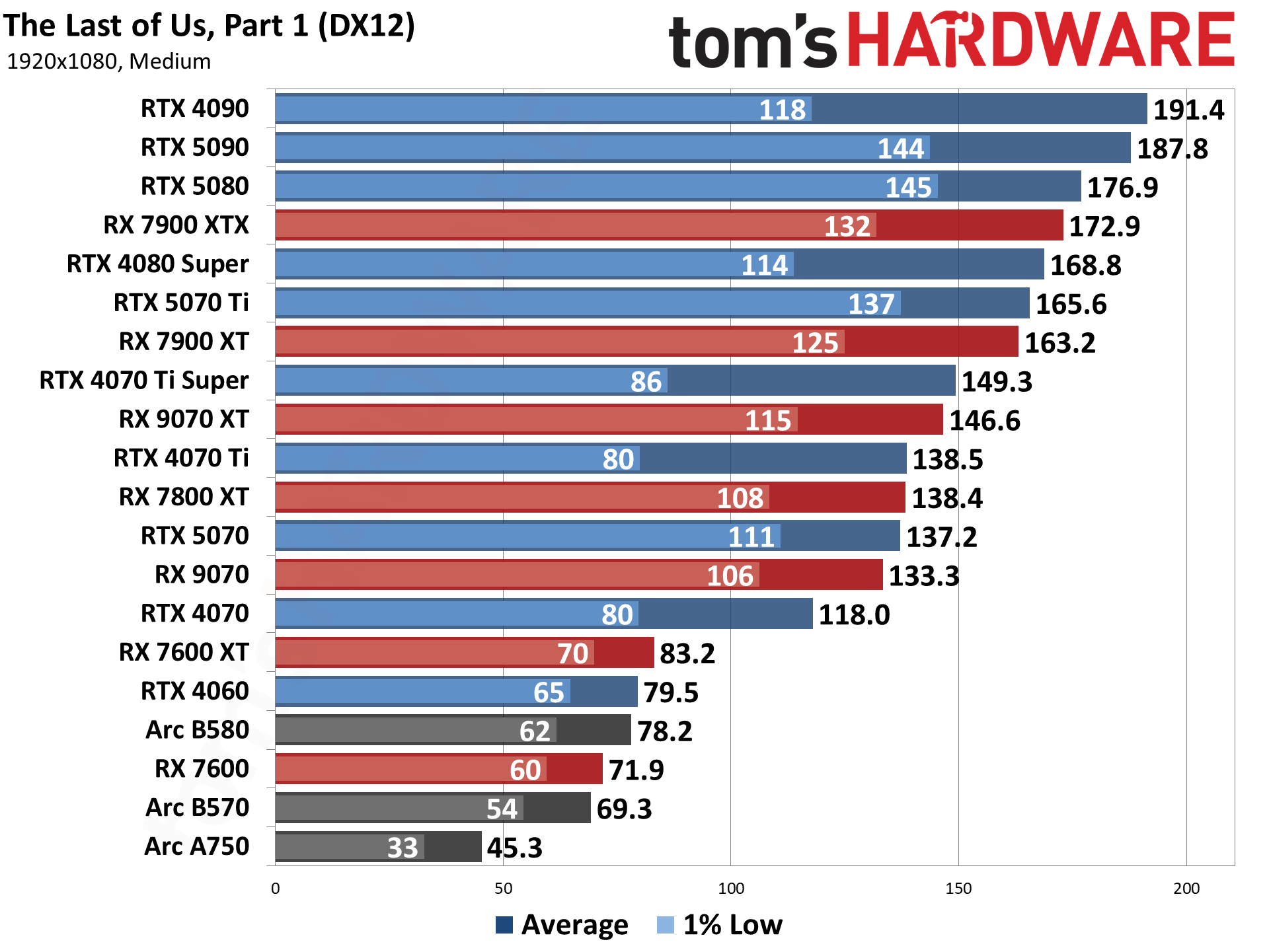
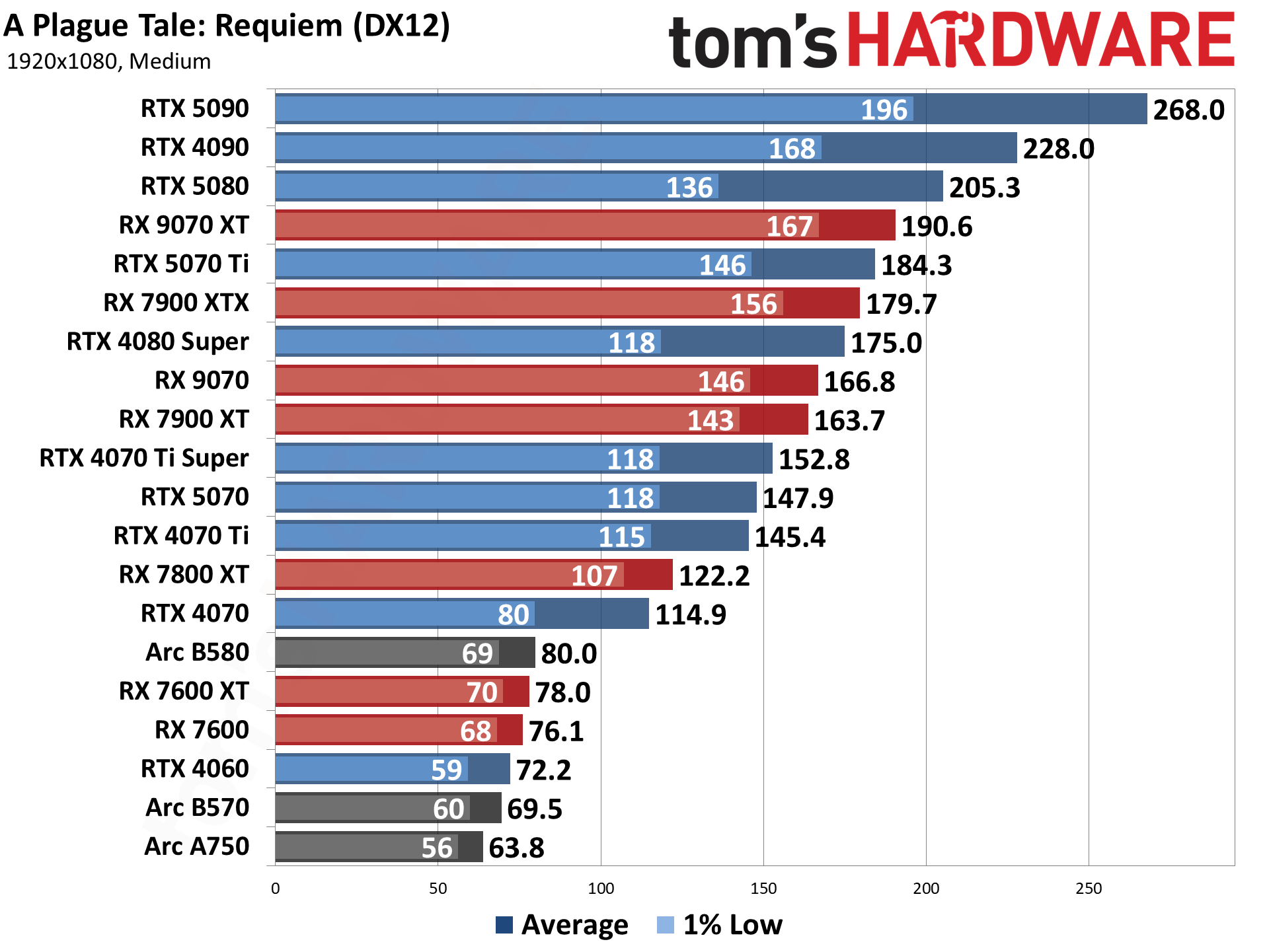
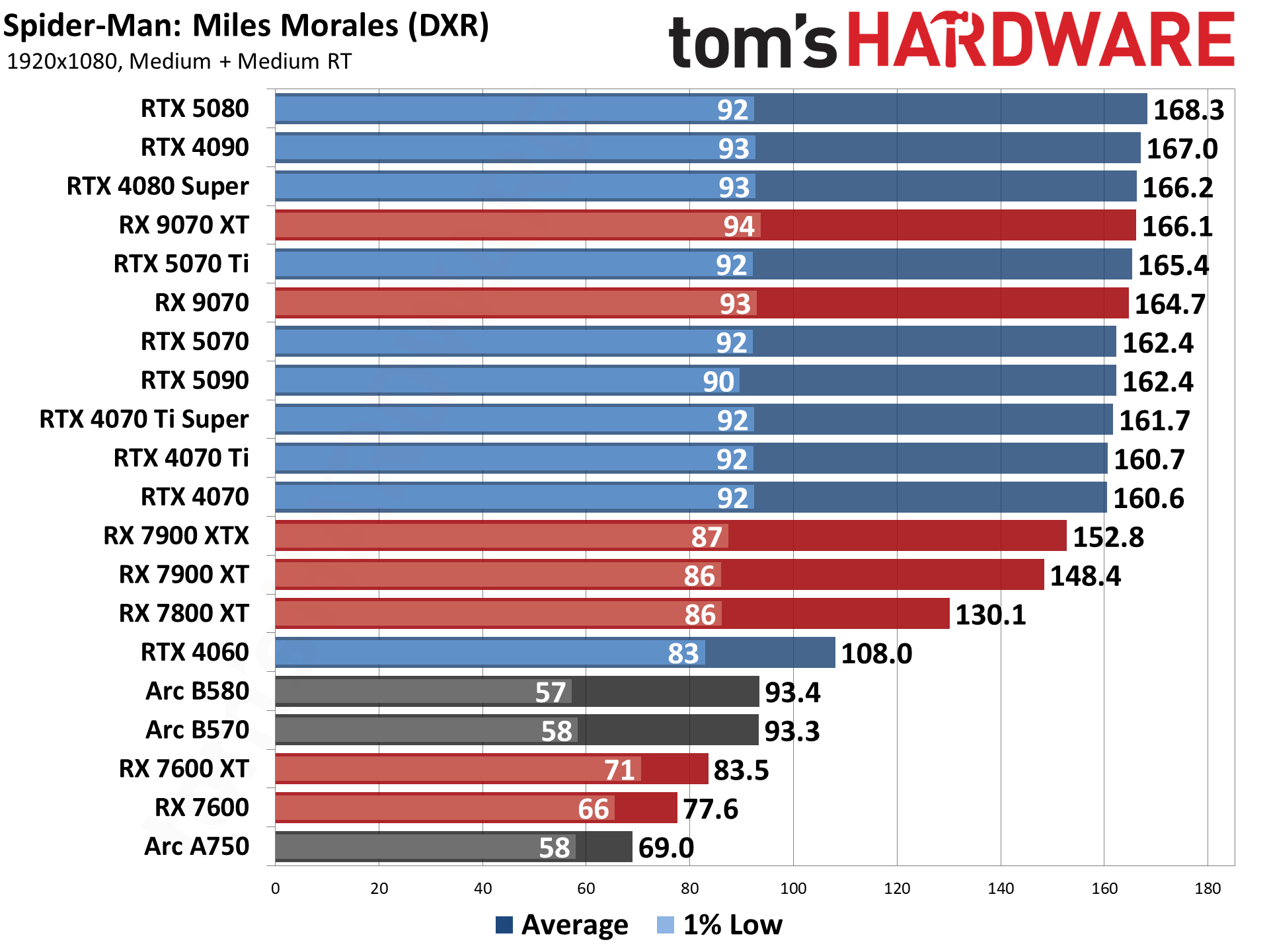
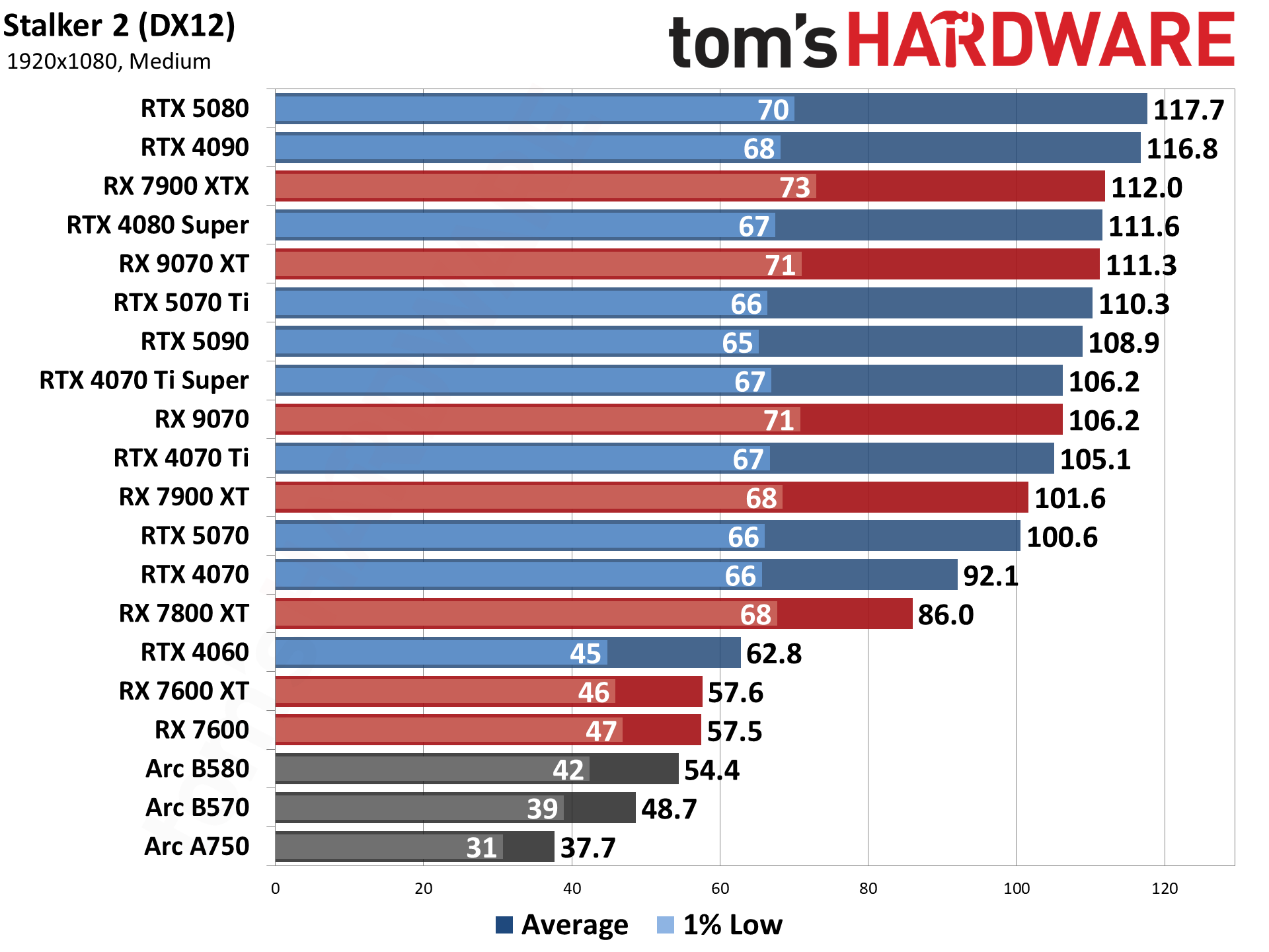
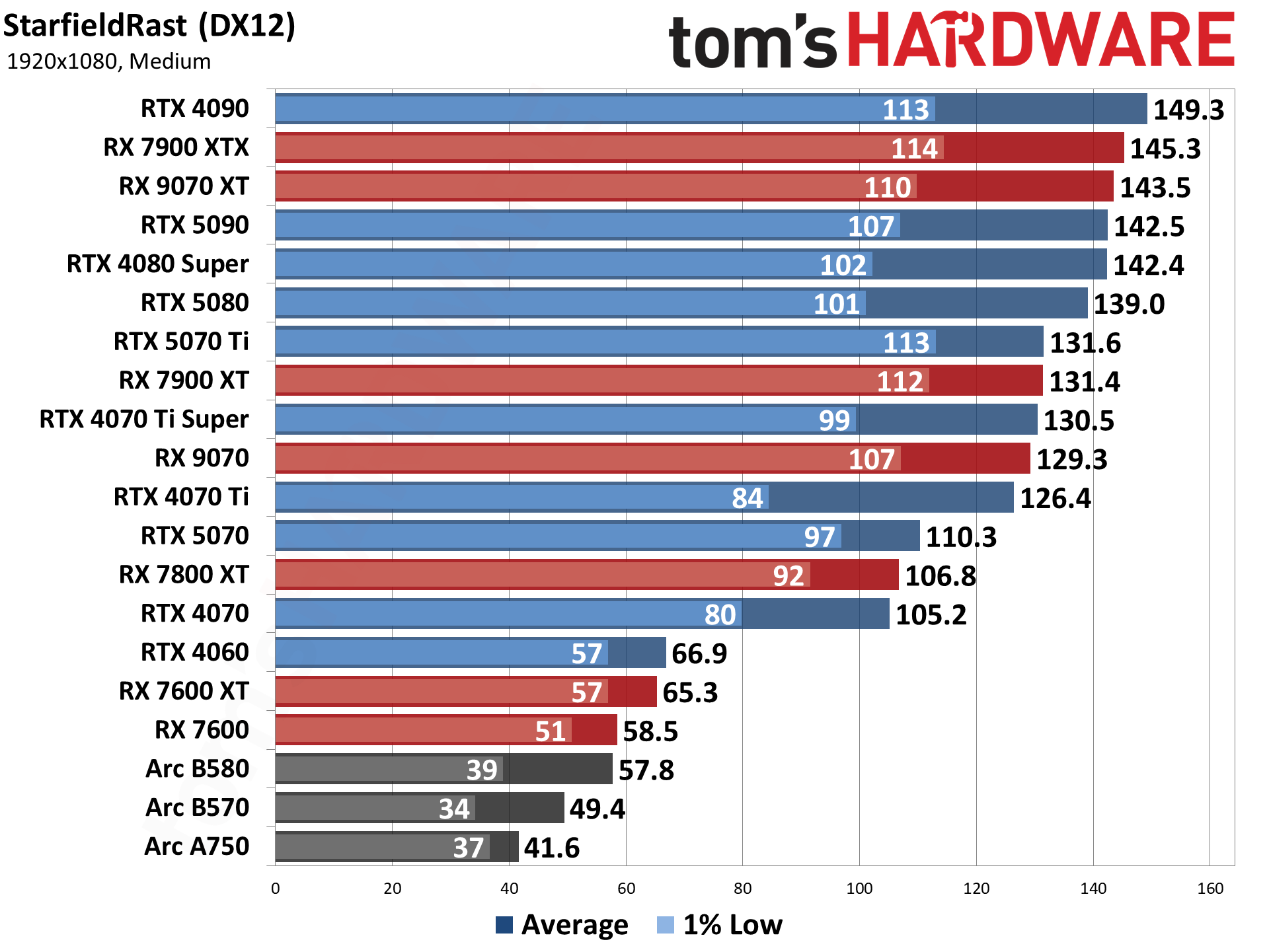
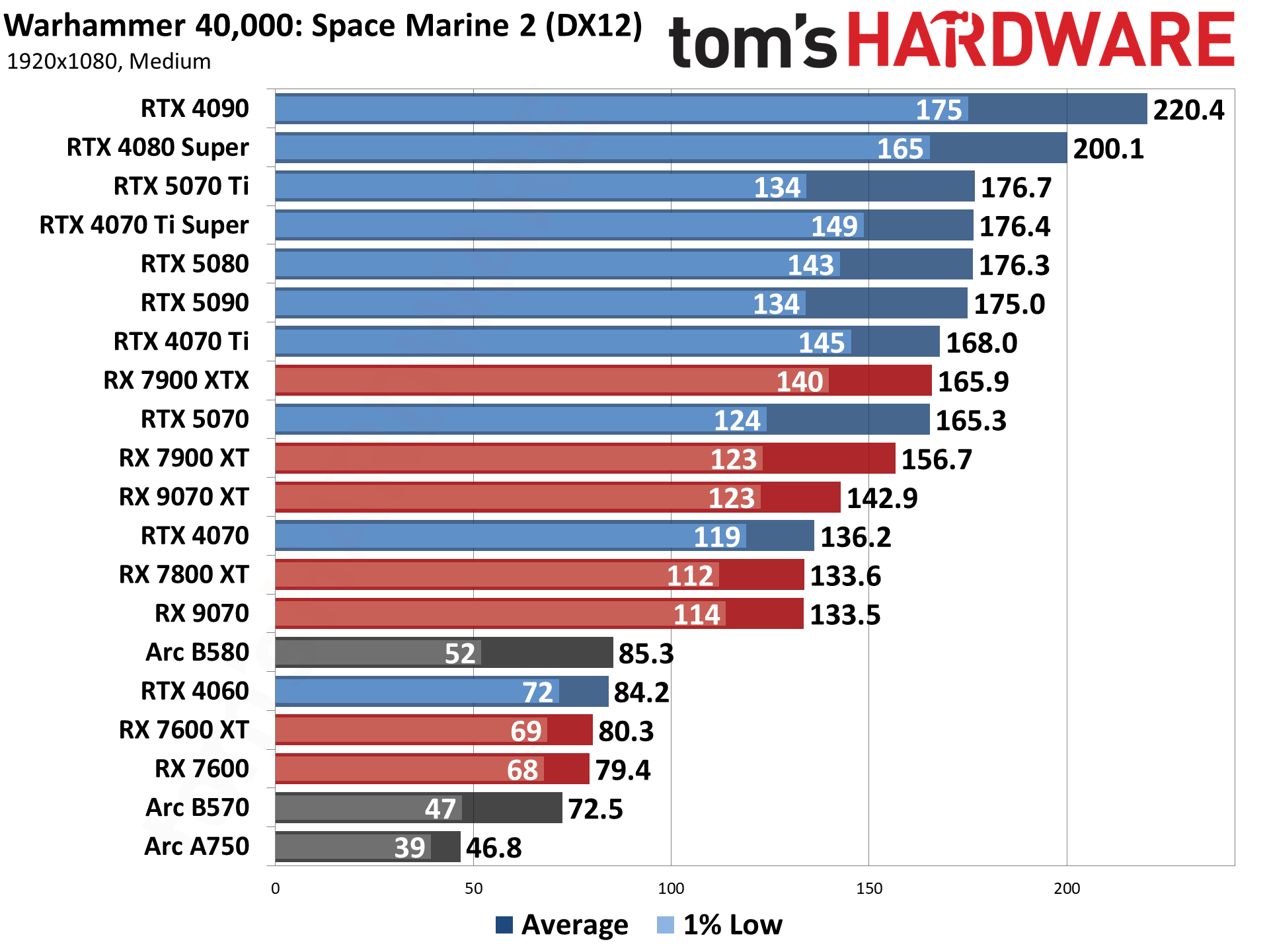
Best Graphics Cards — 1080p Ultra
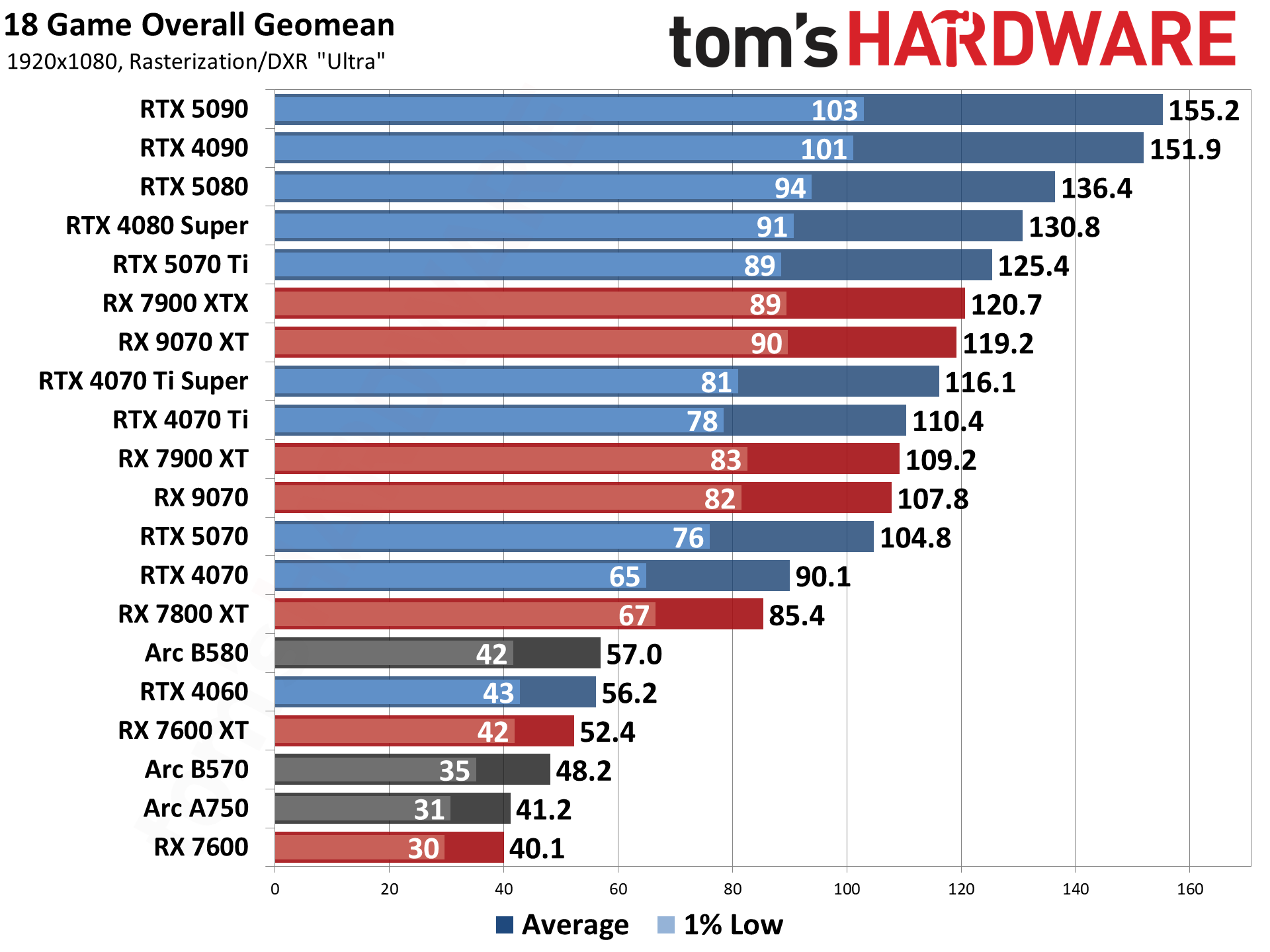
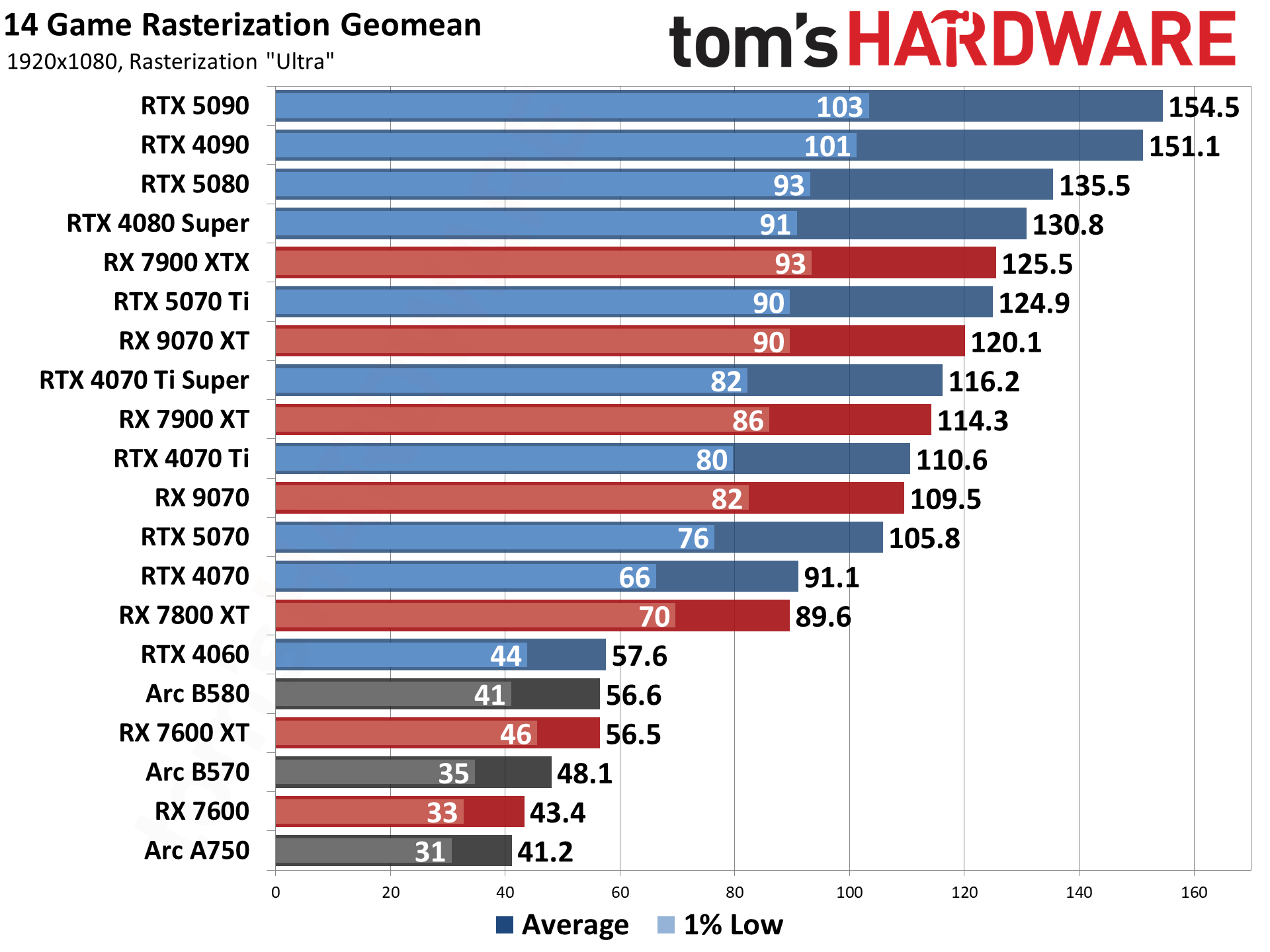
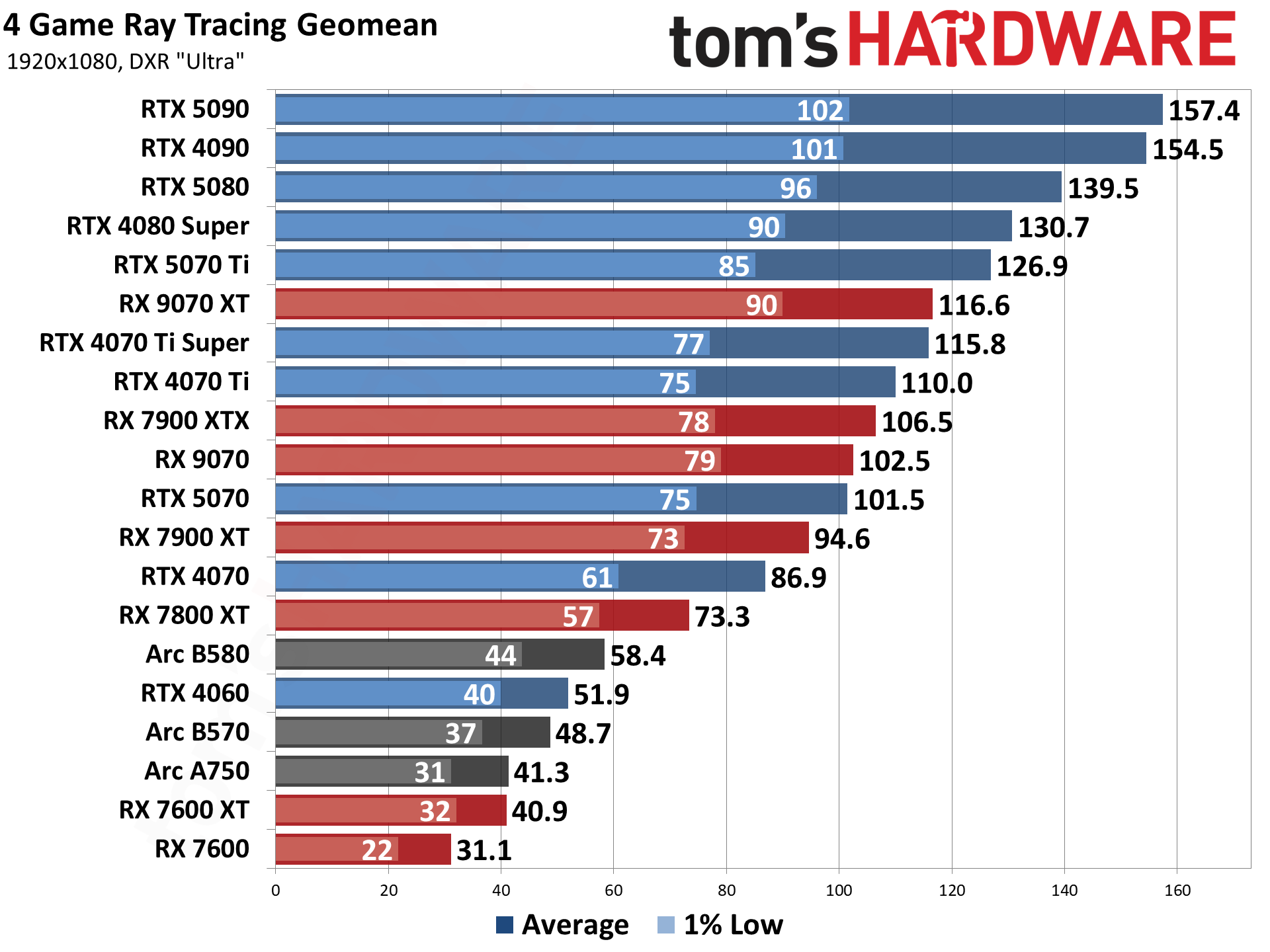
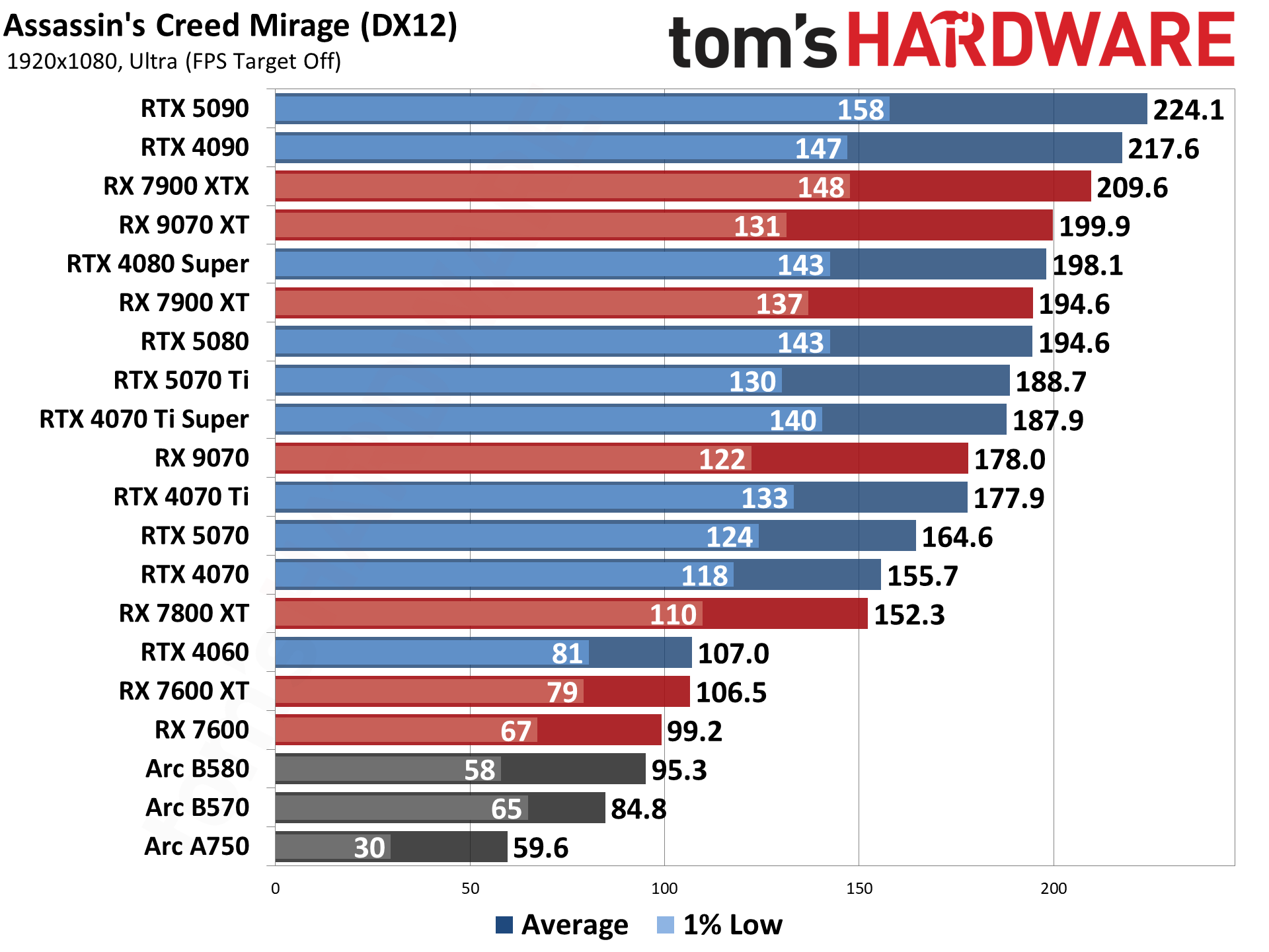
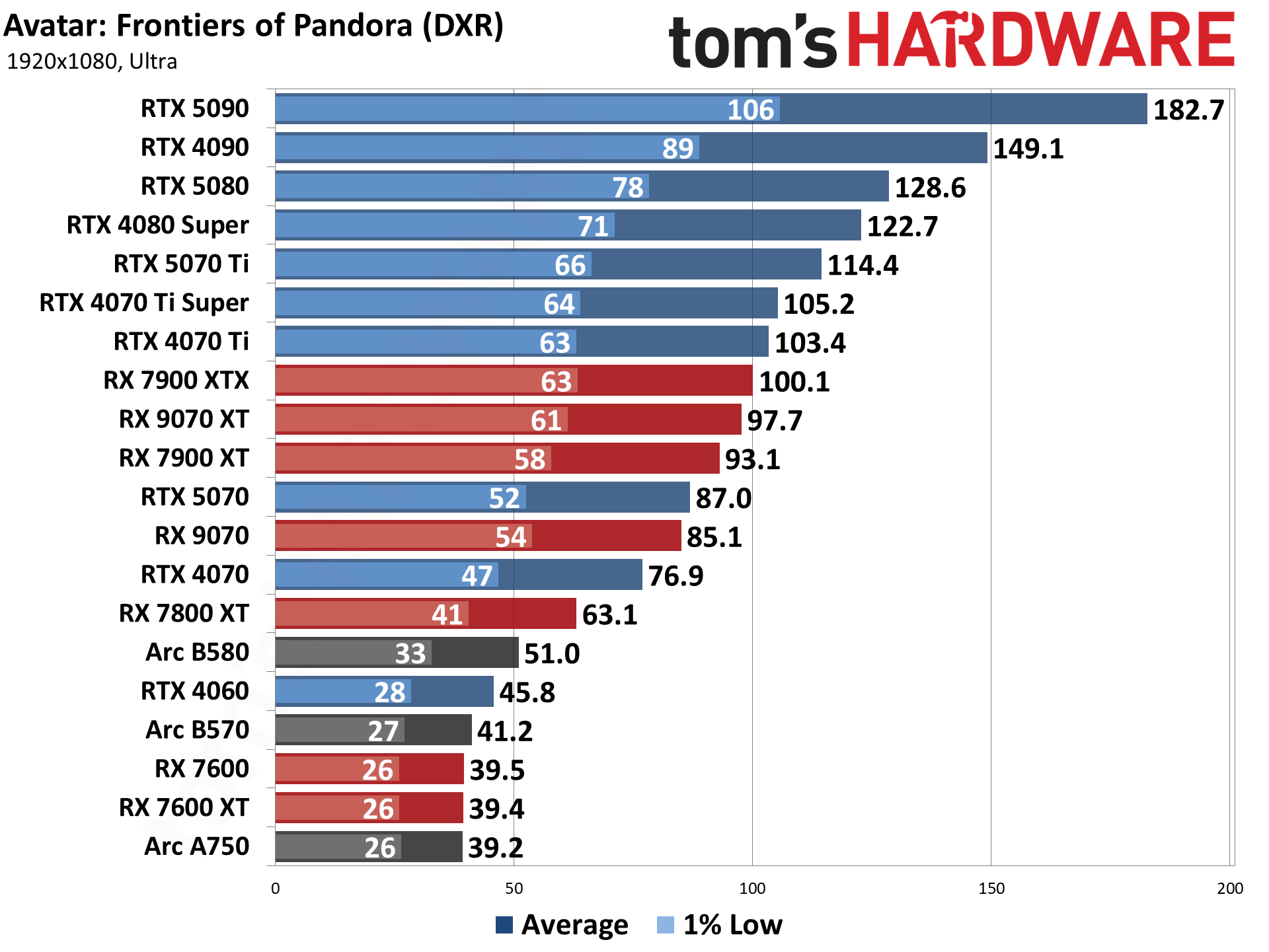
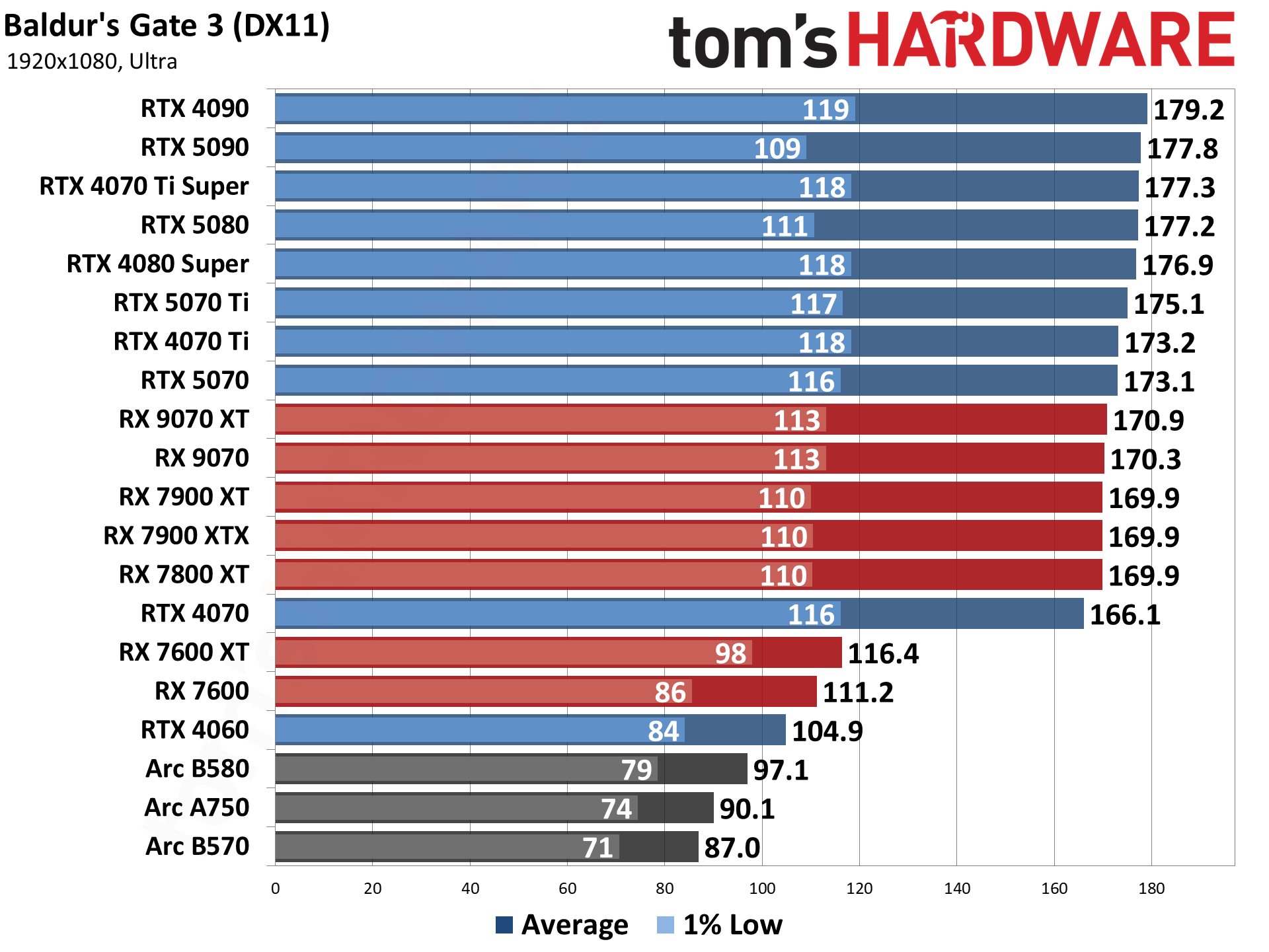
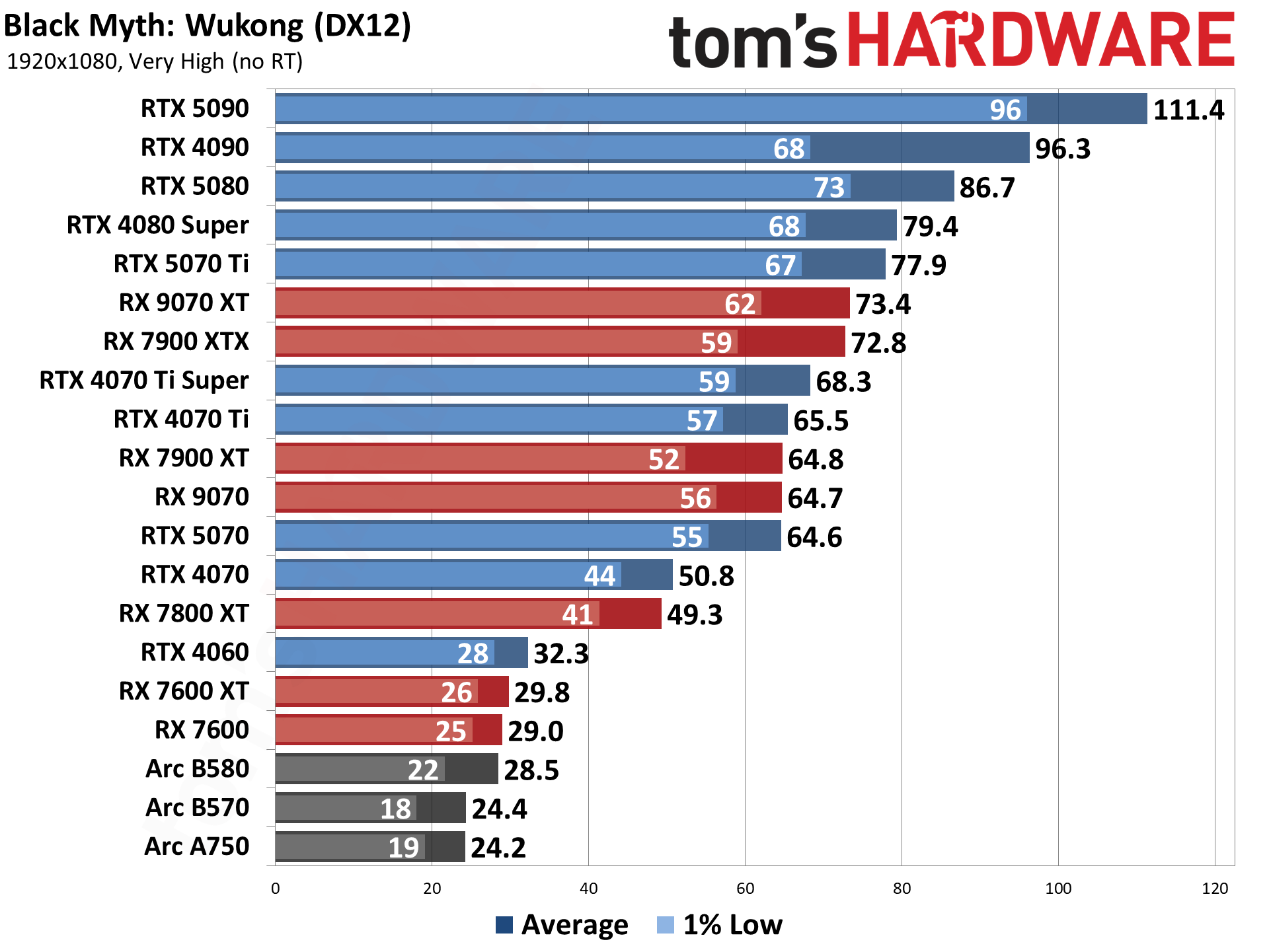
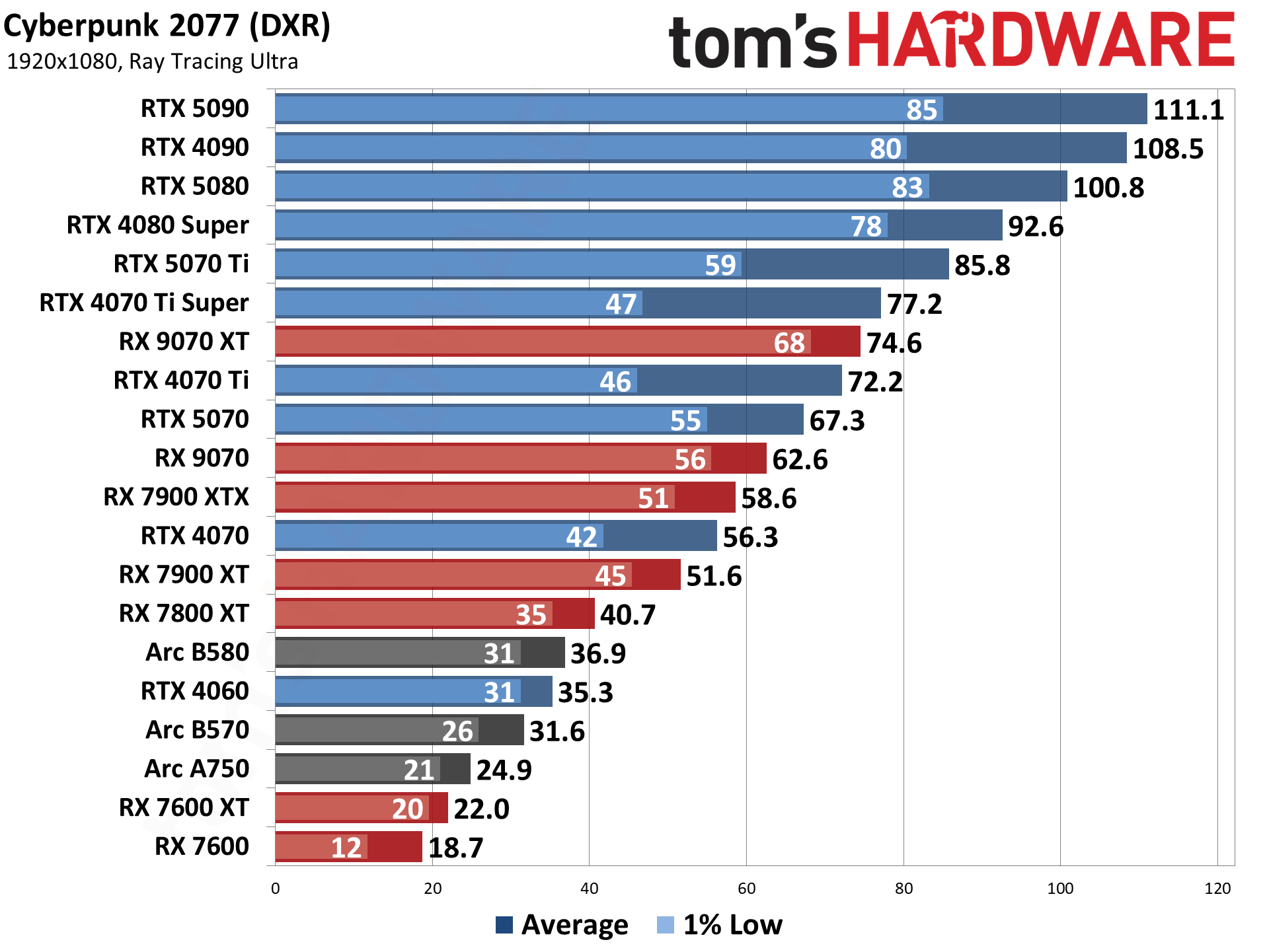
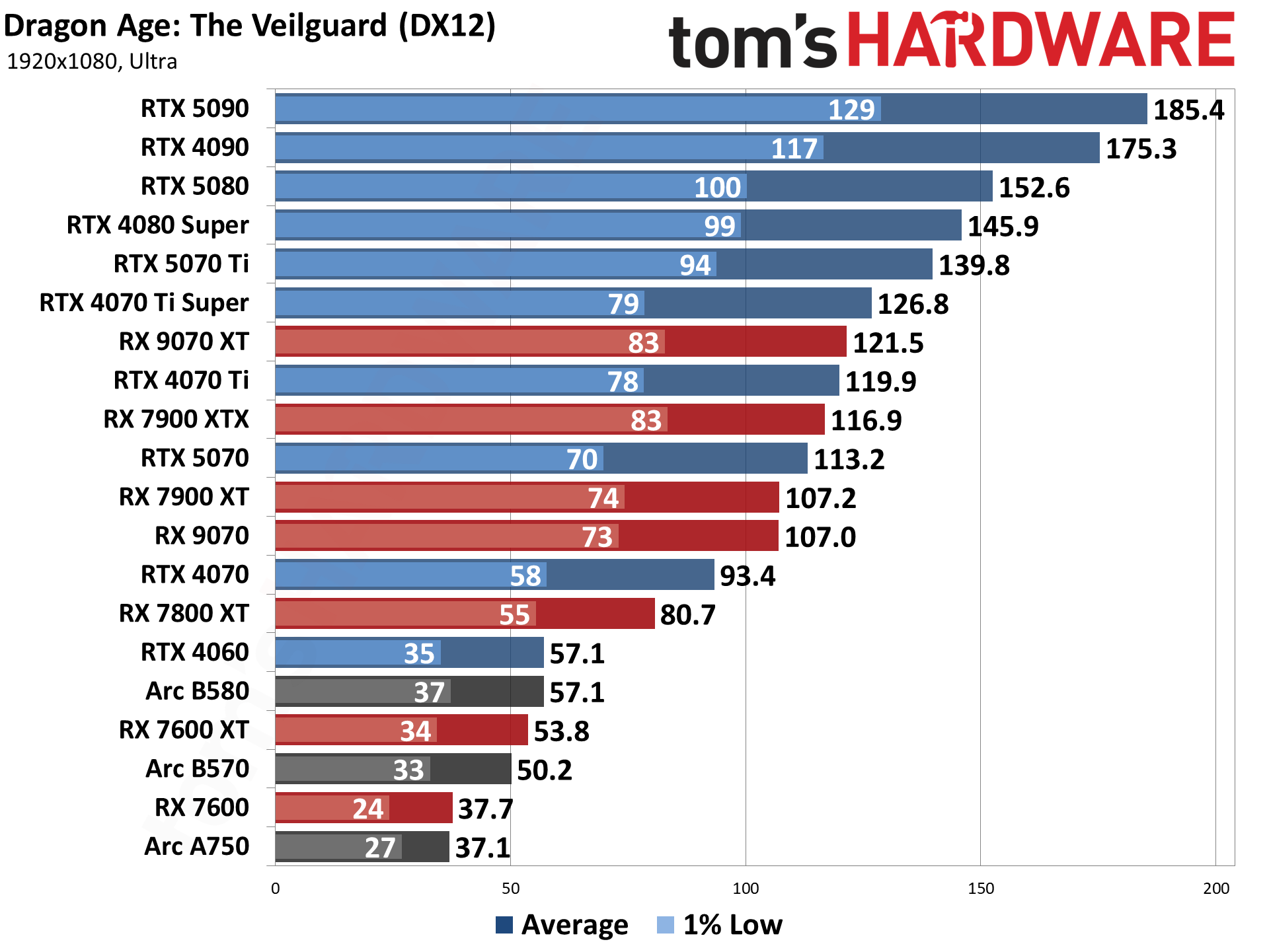
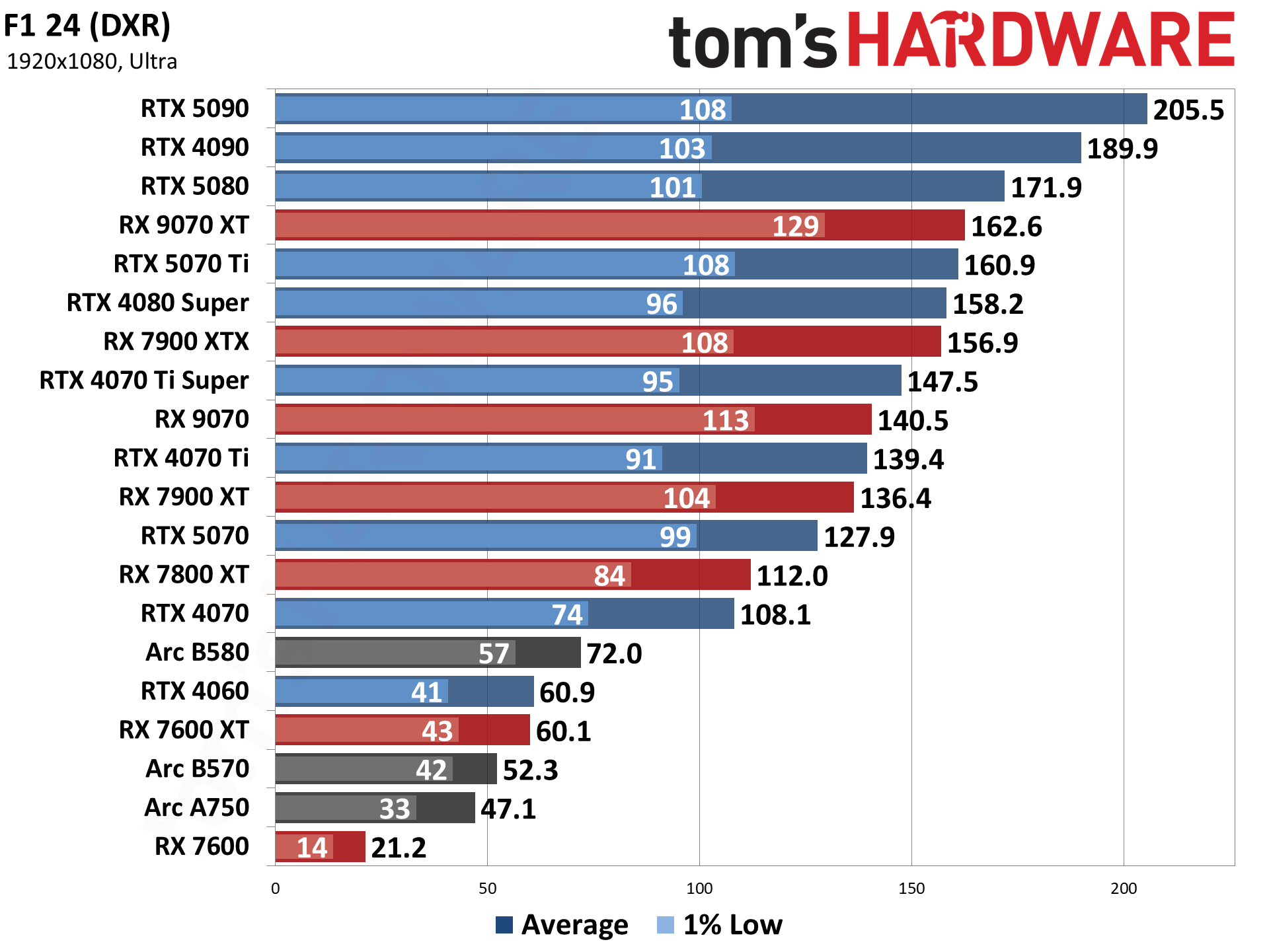
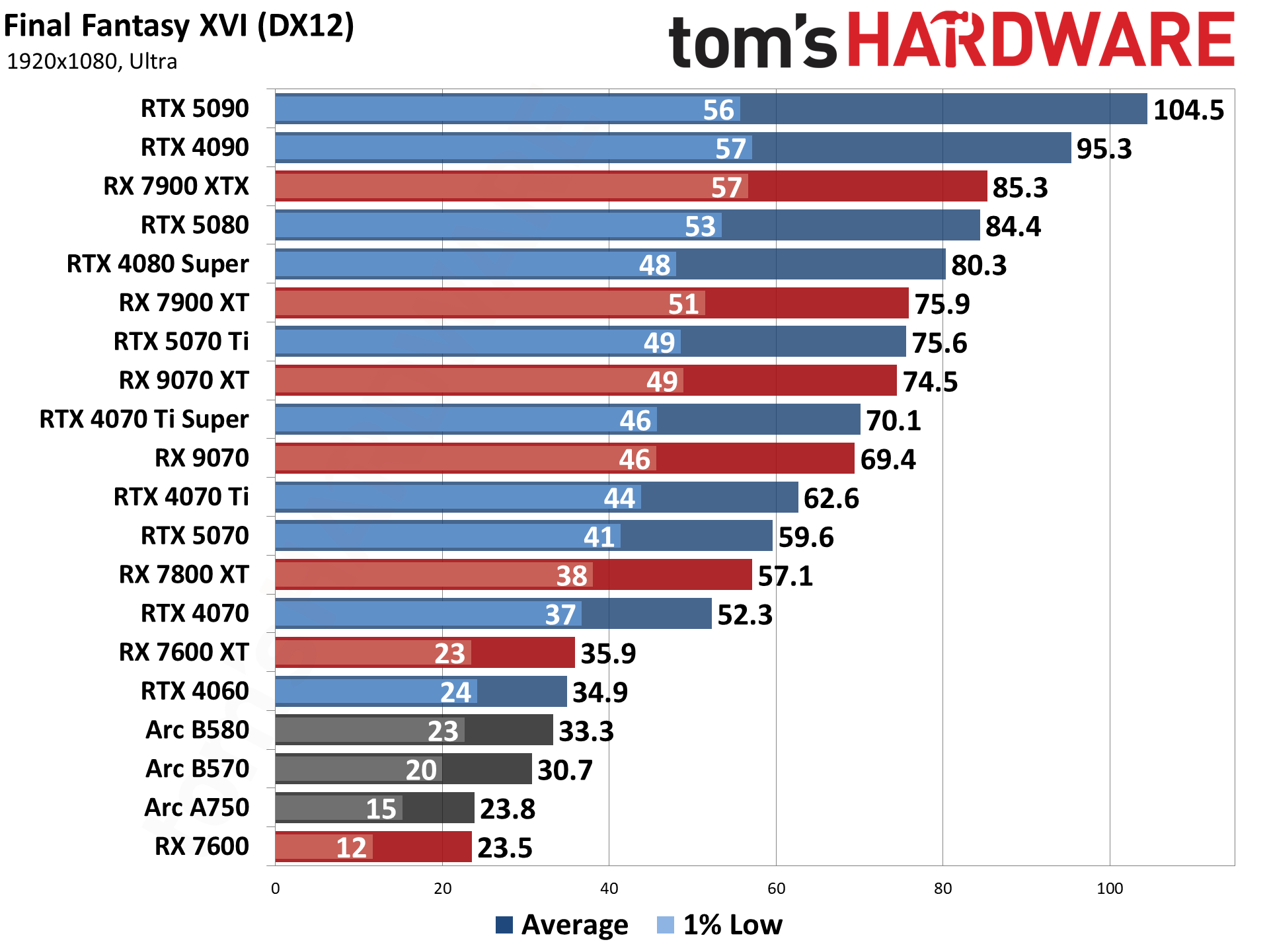
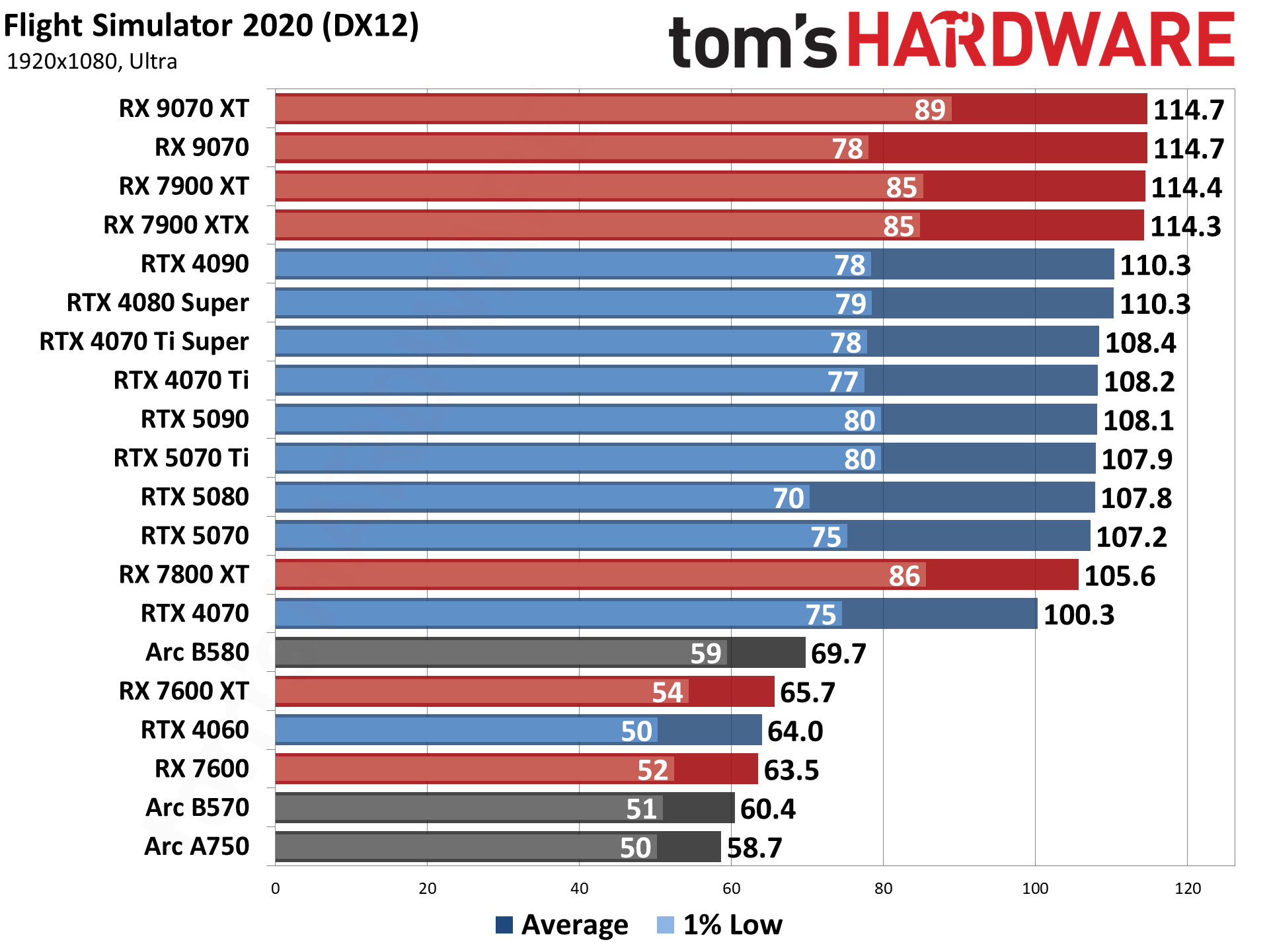
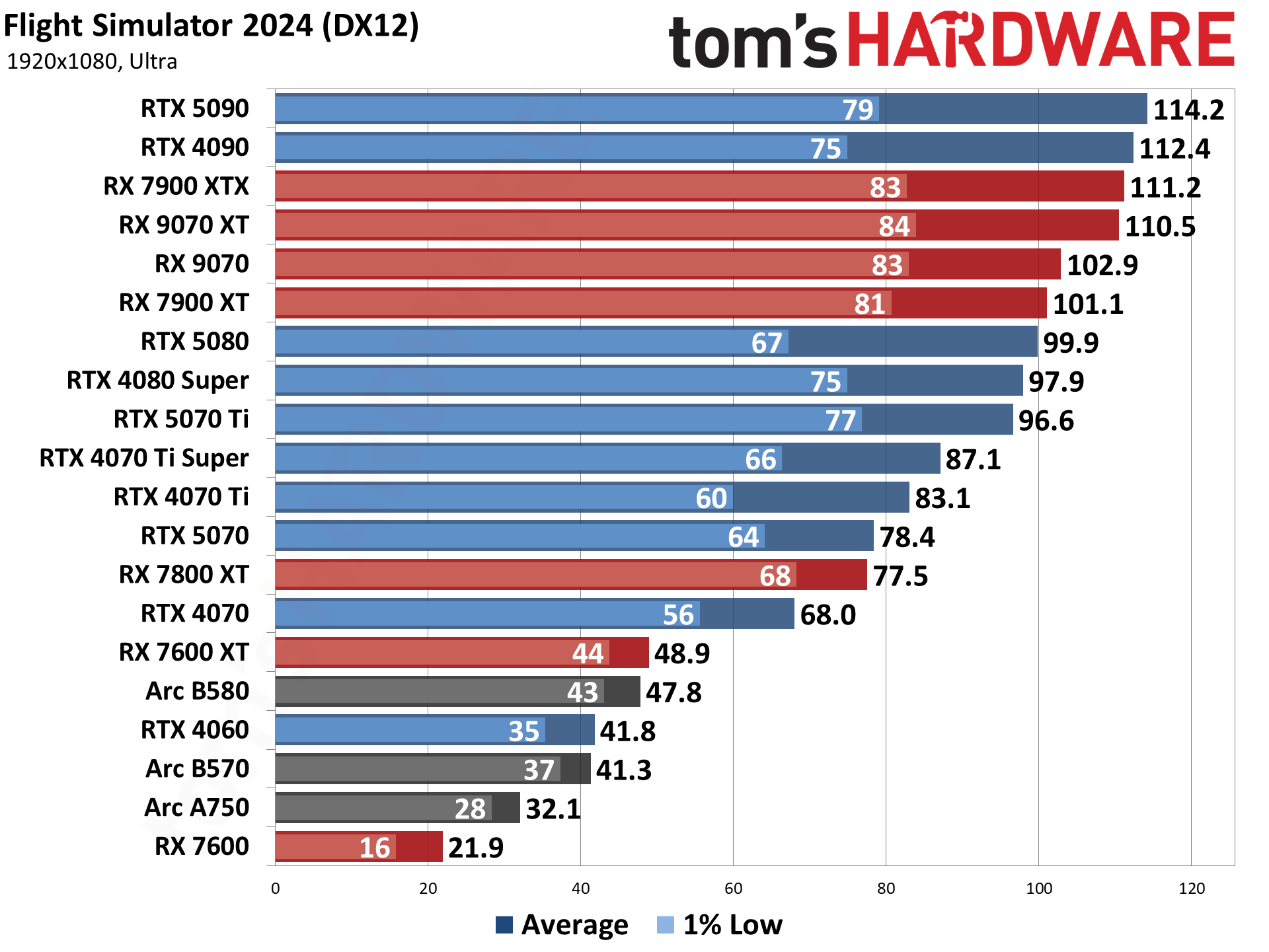
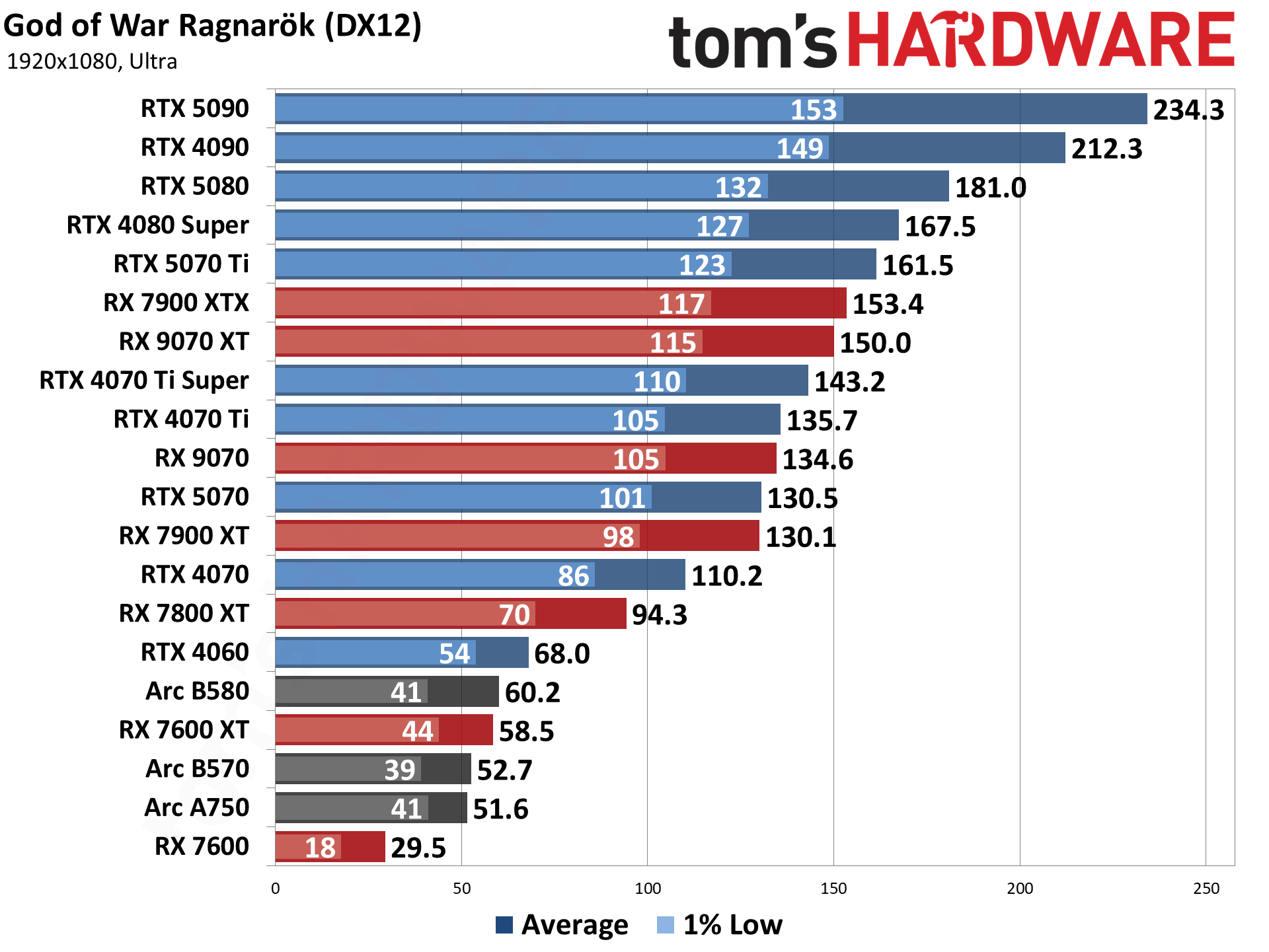
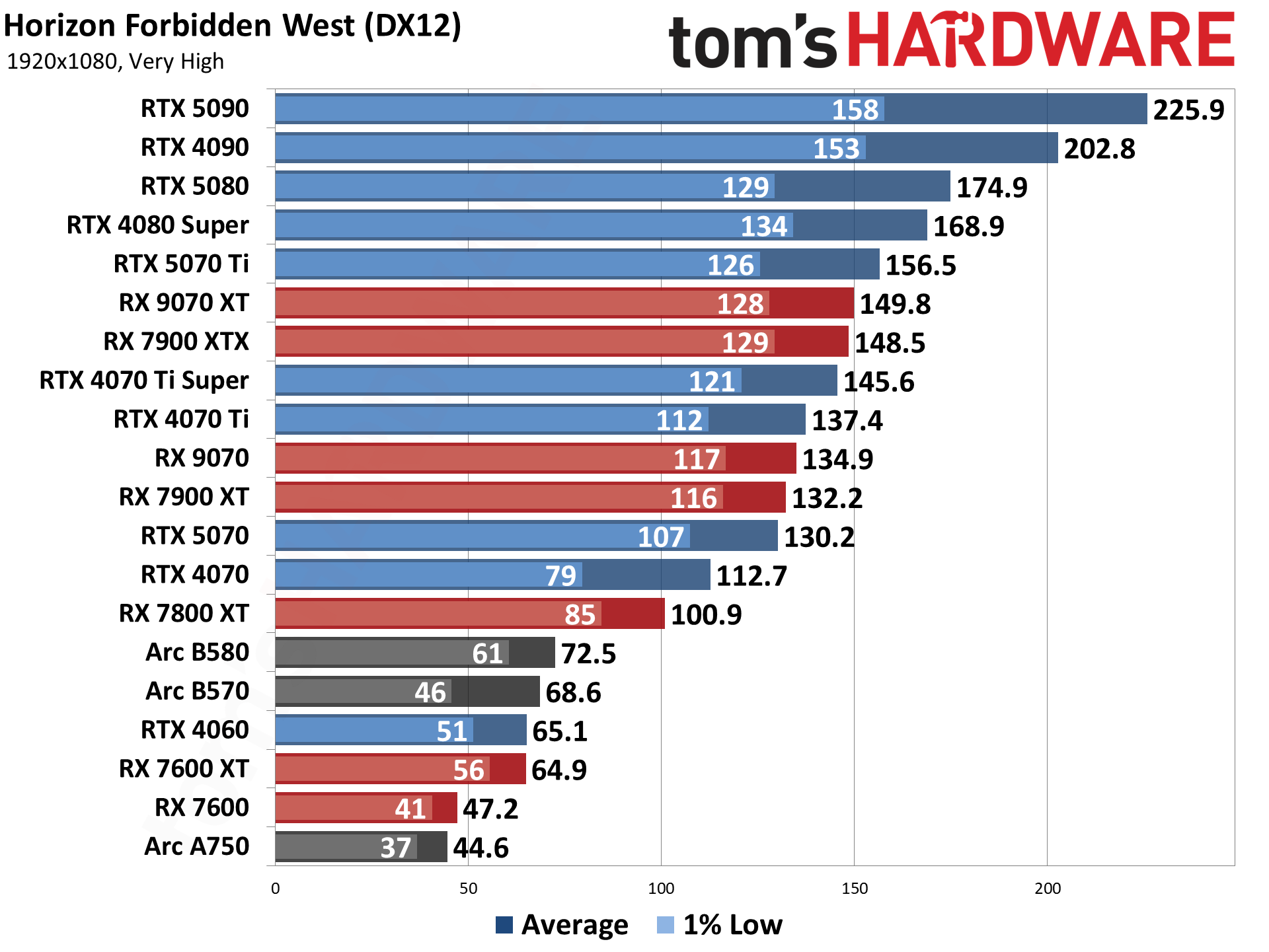
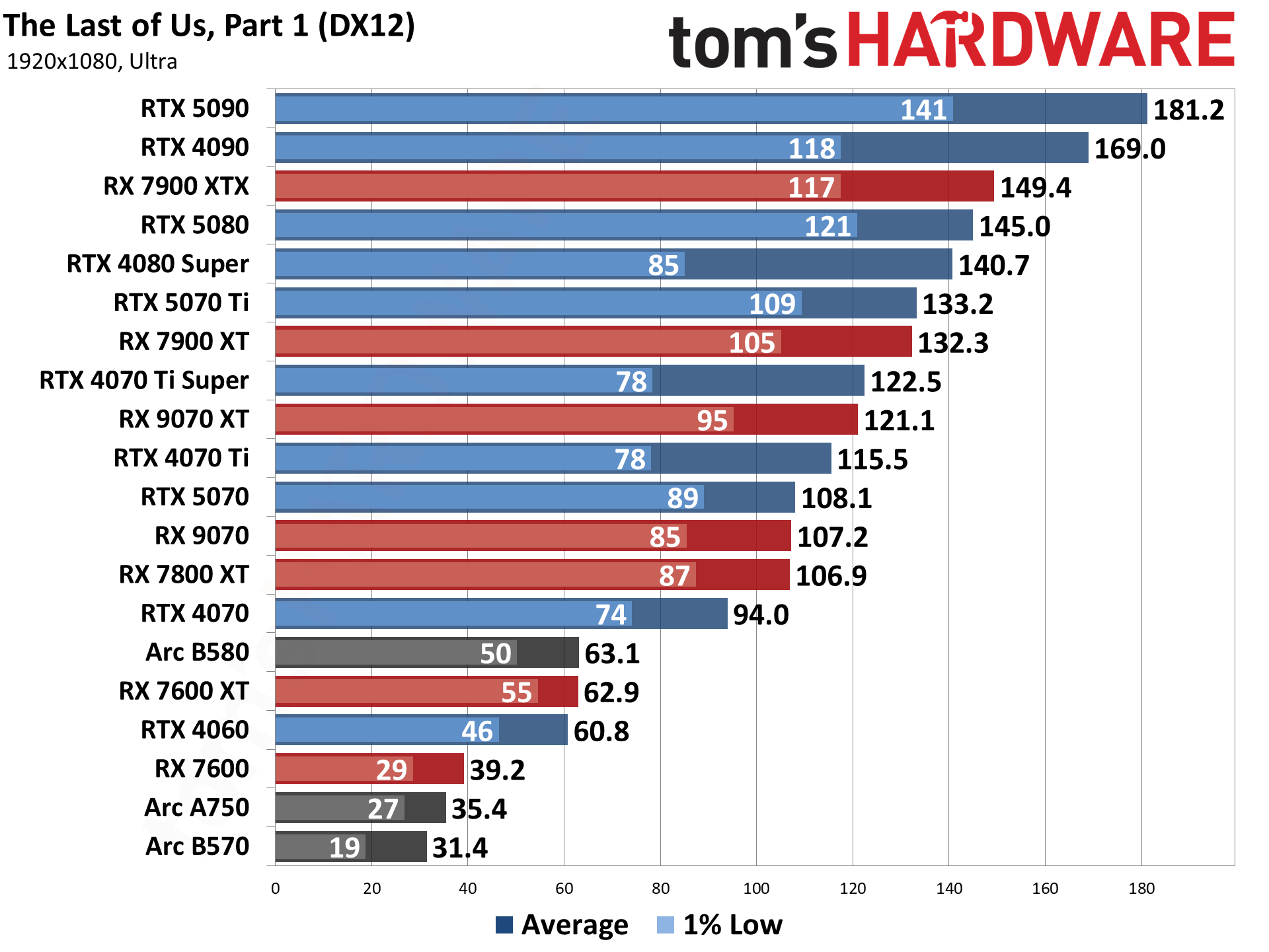
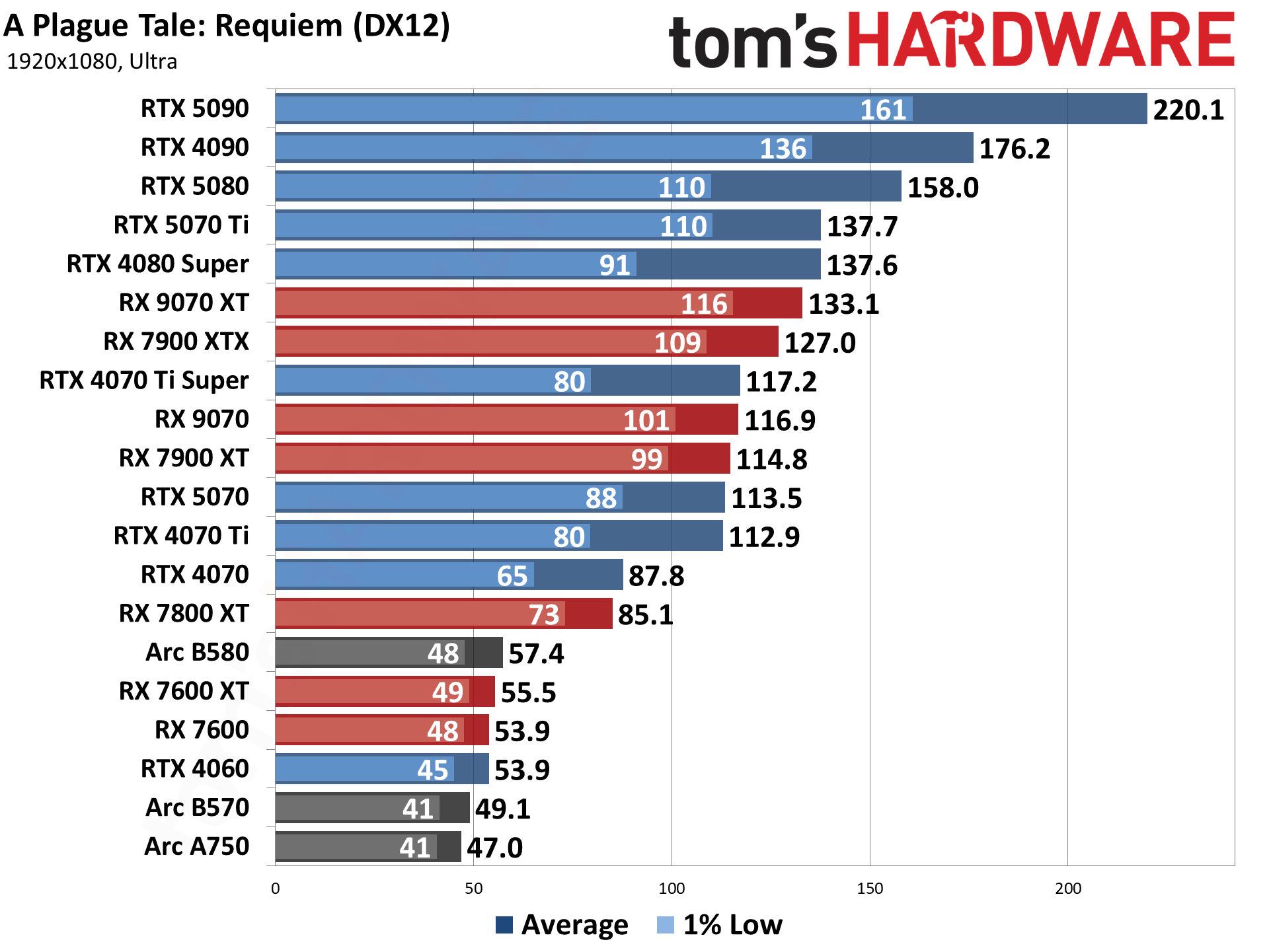
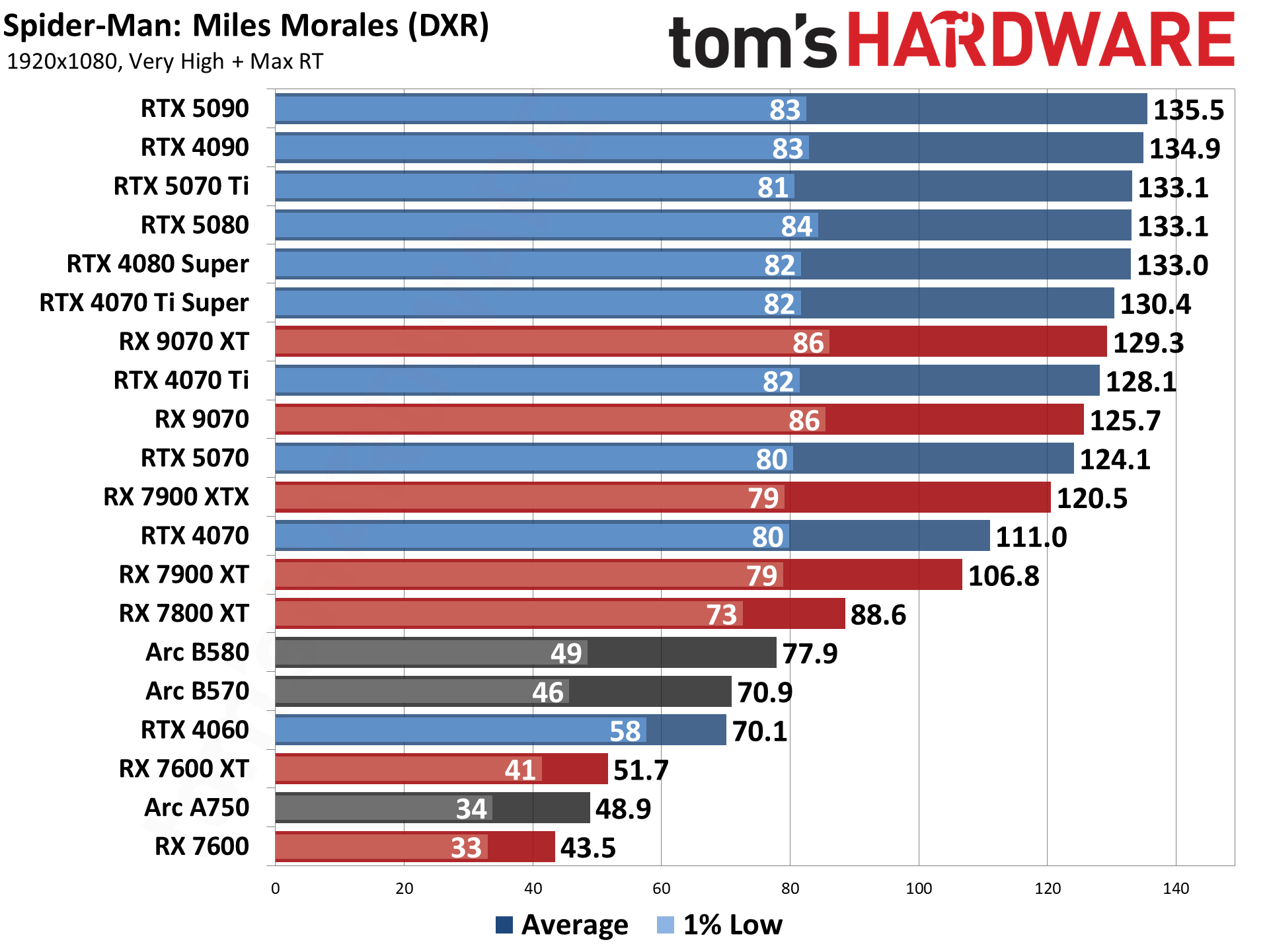
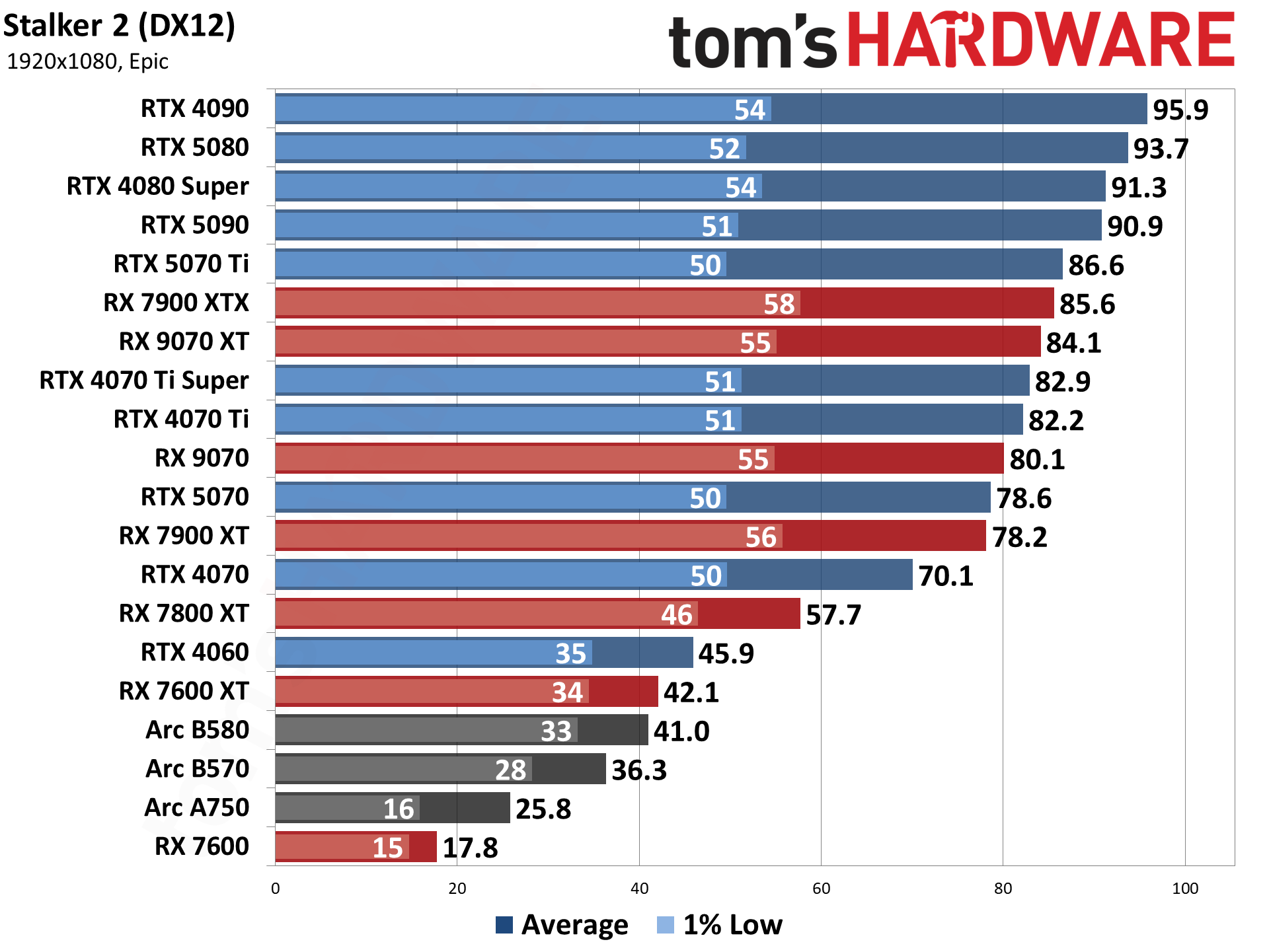
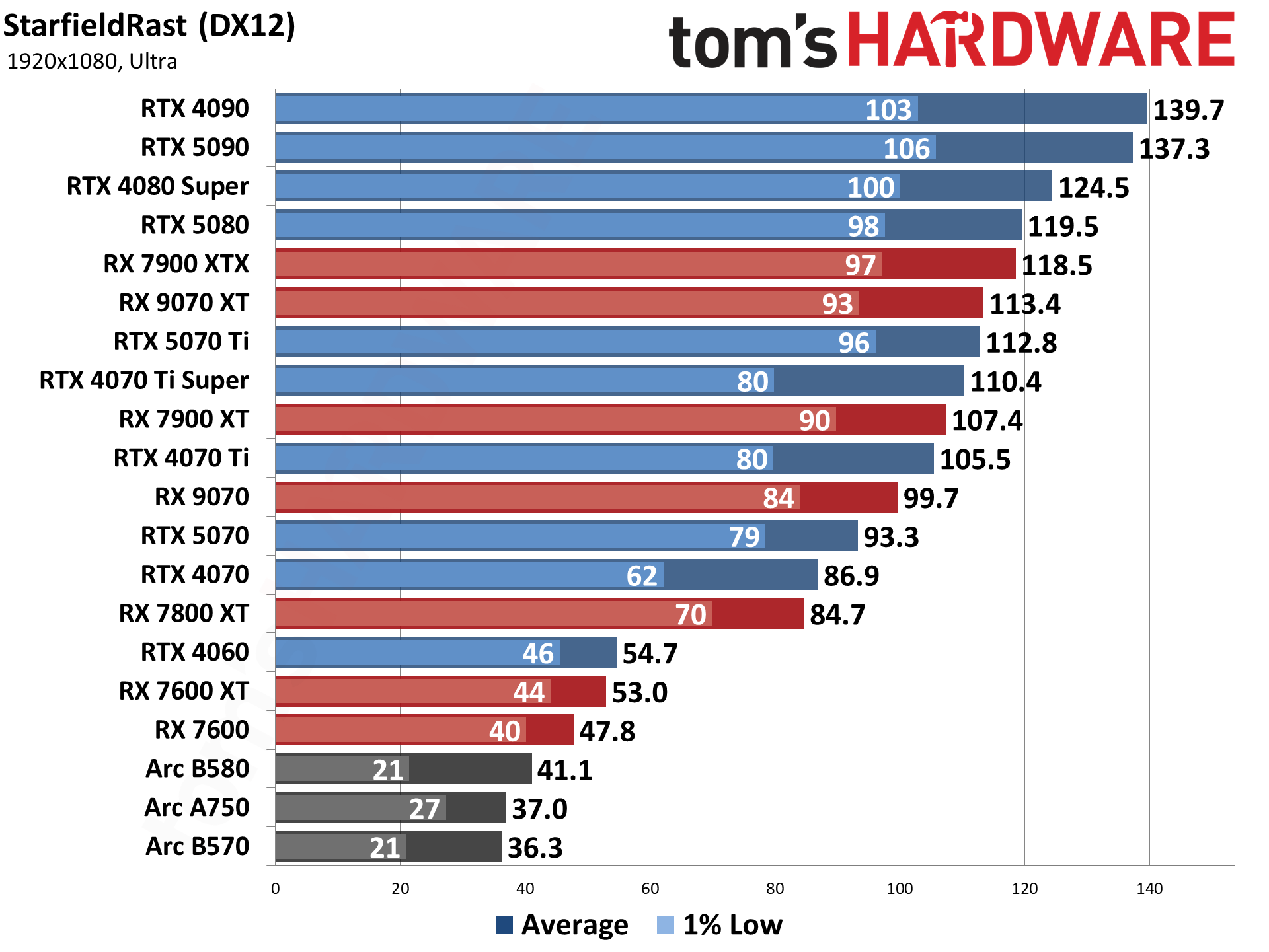
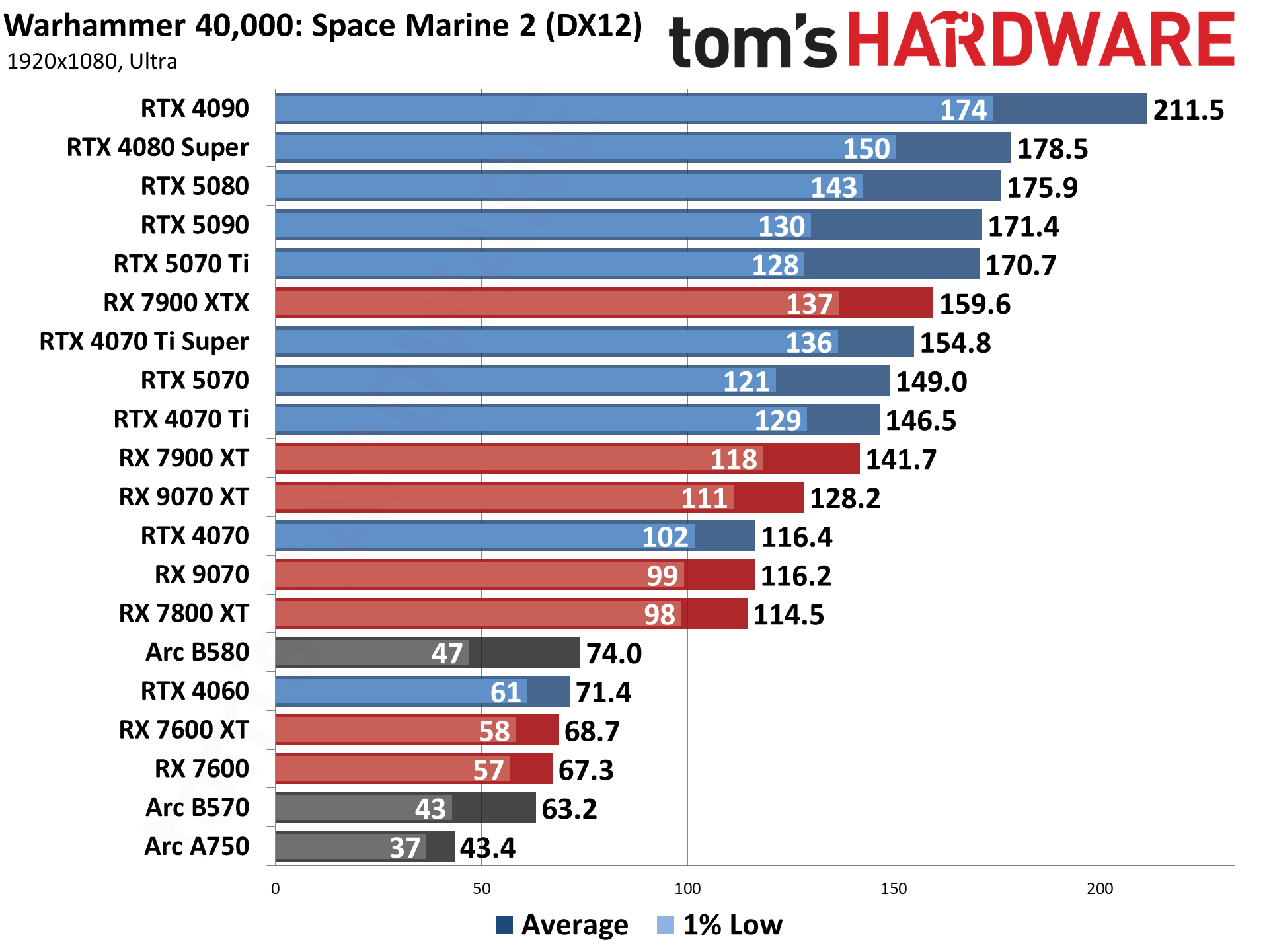
Best Graphics Cards — 1440p Ultra
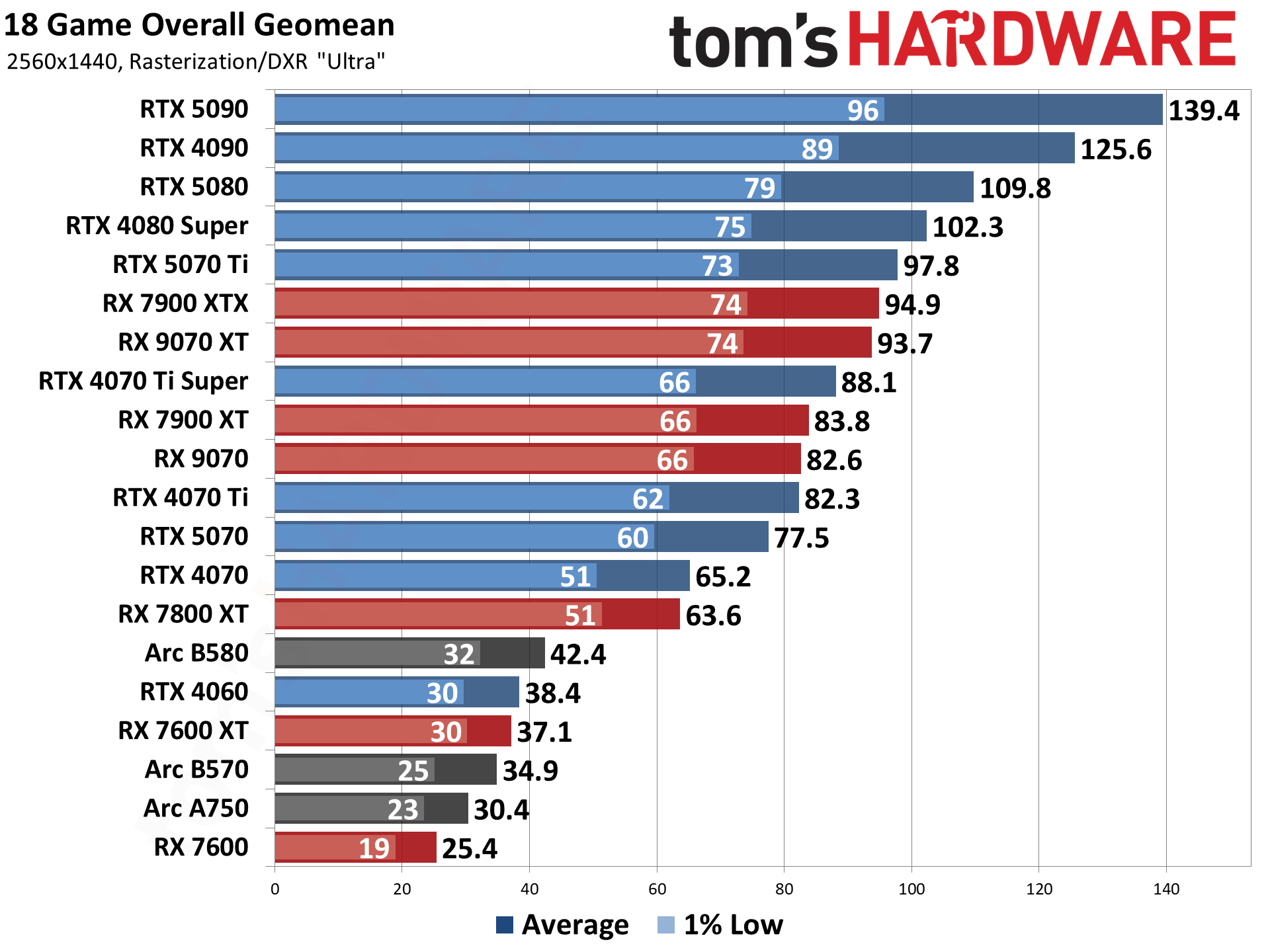
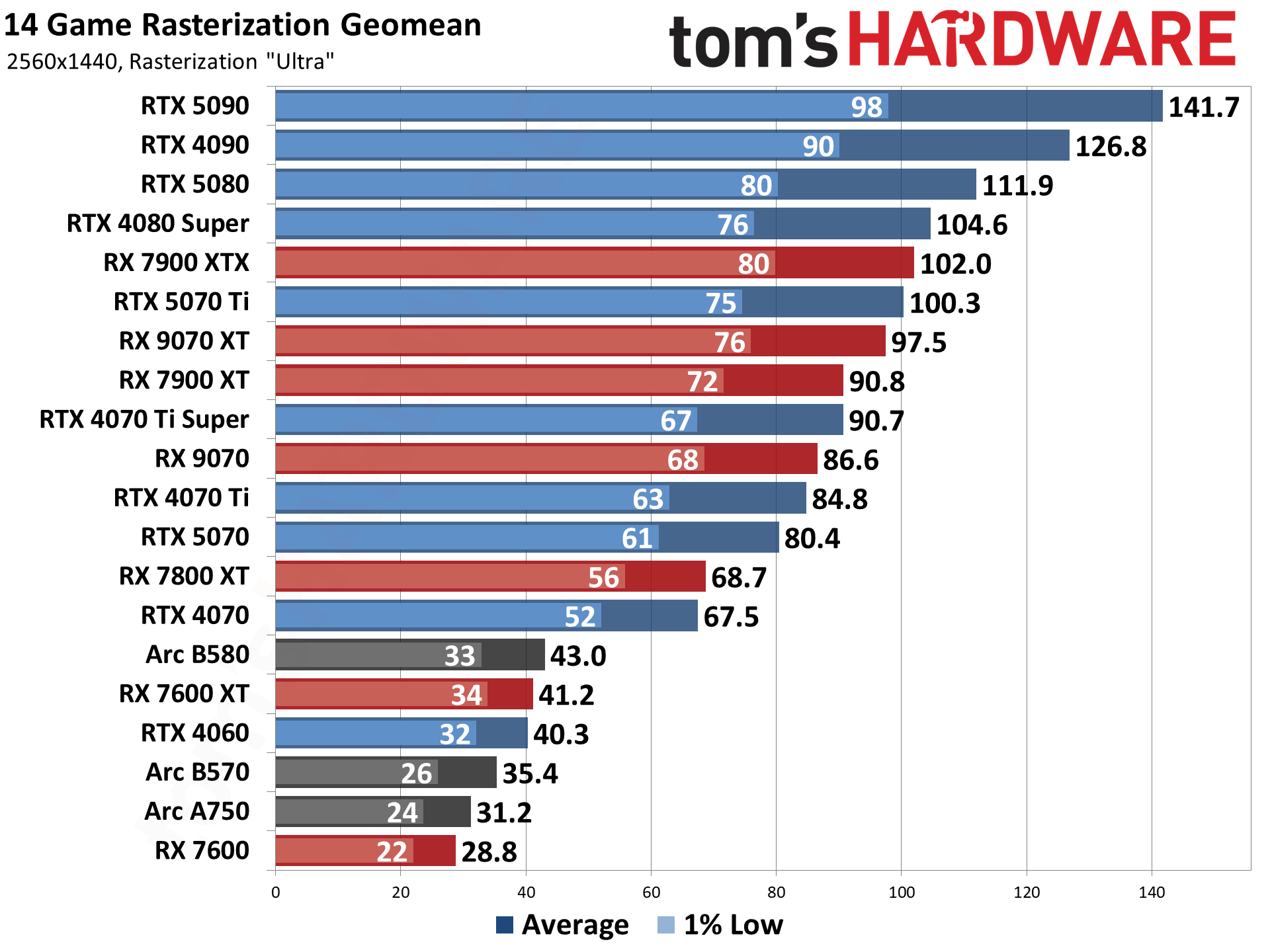
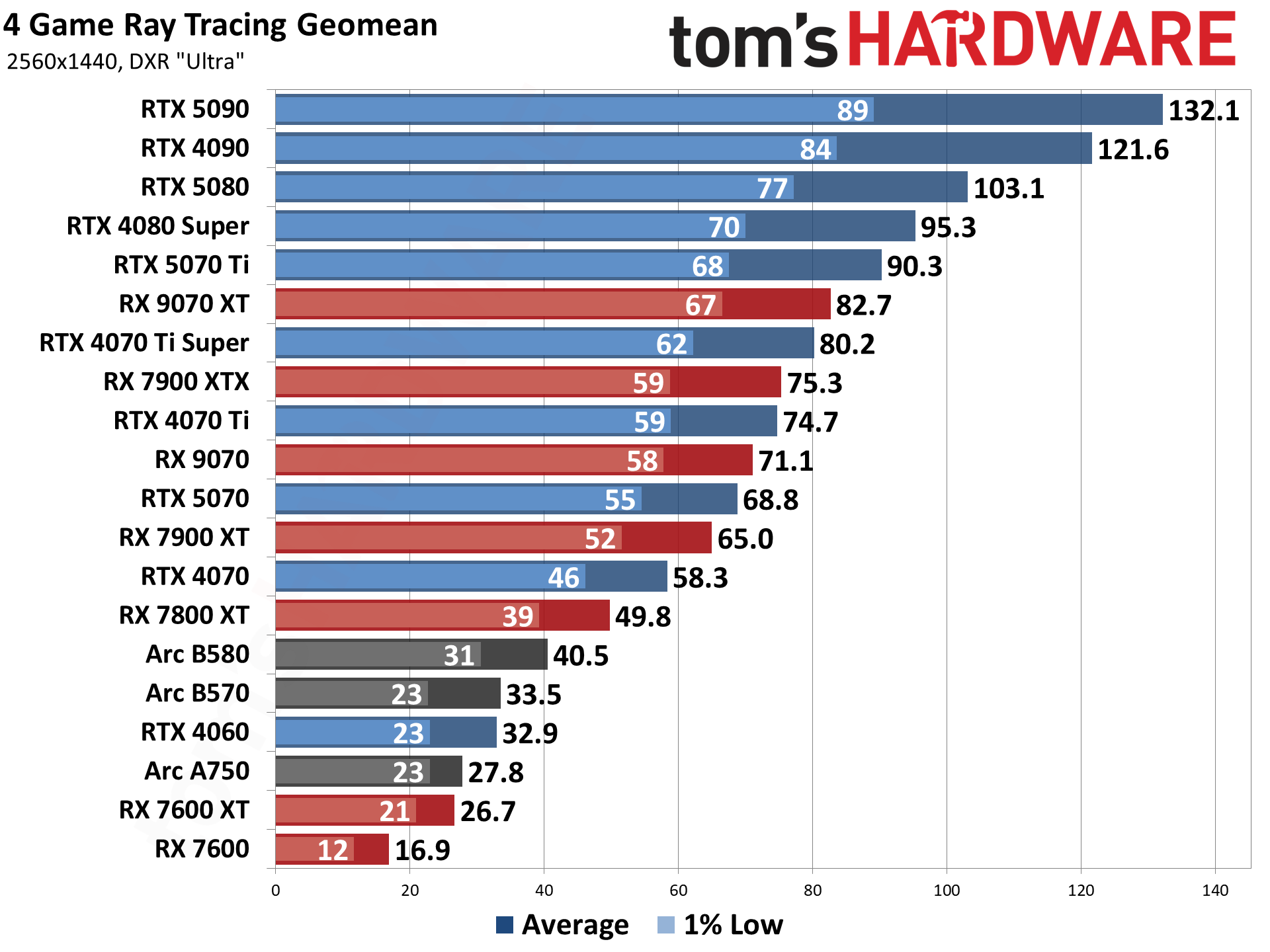
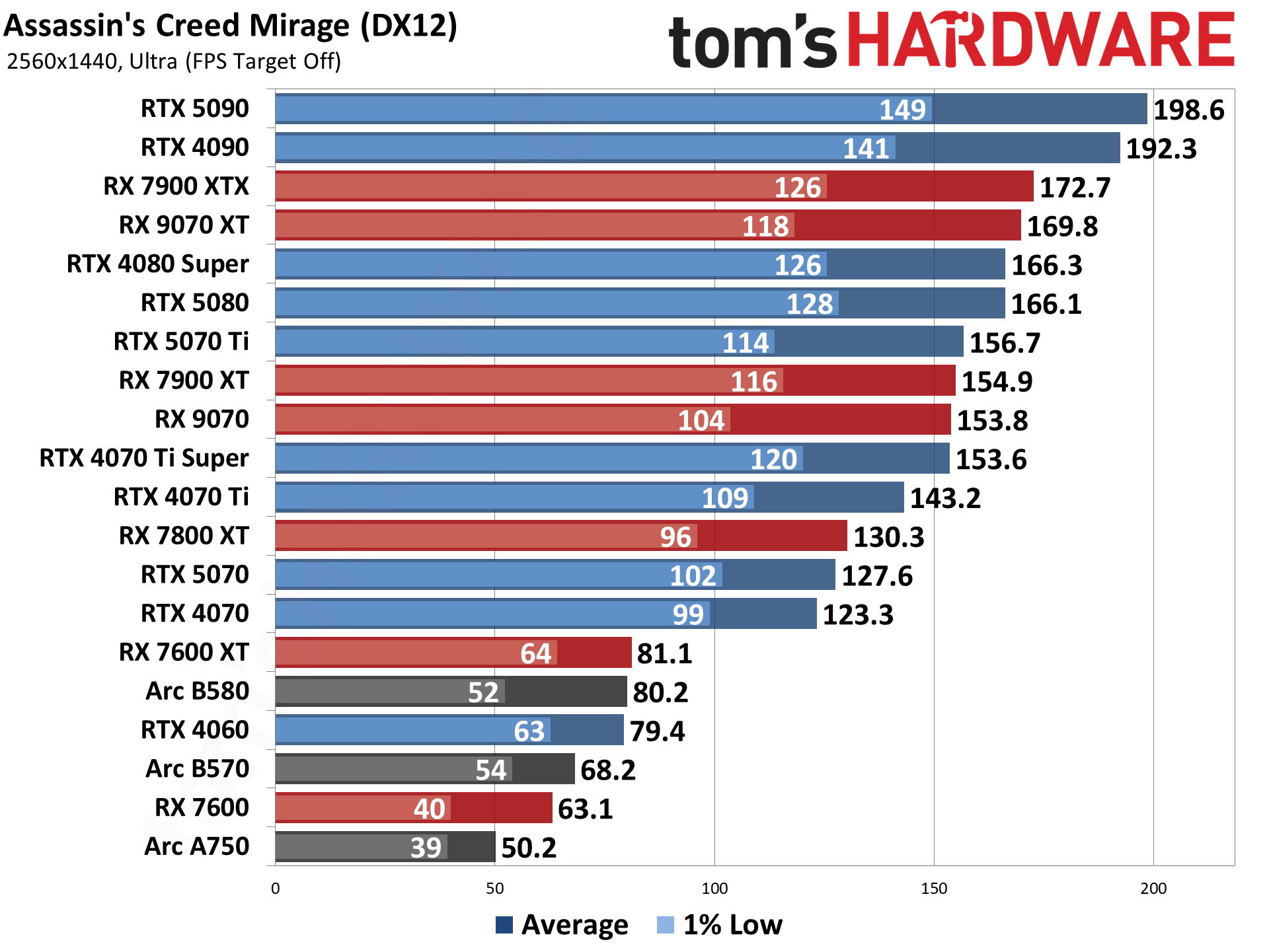
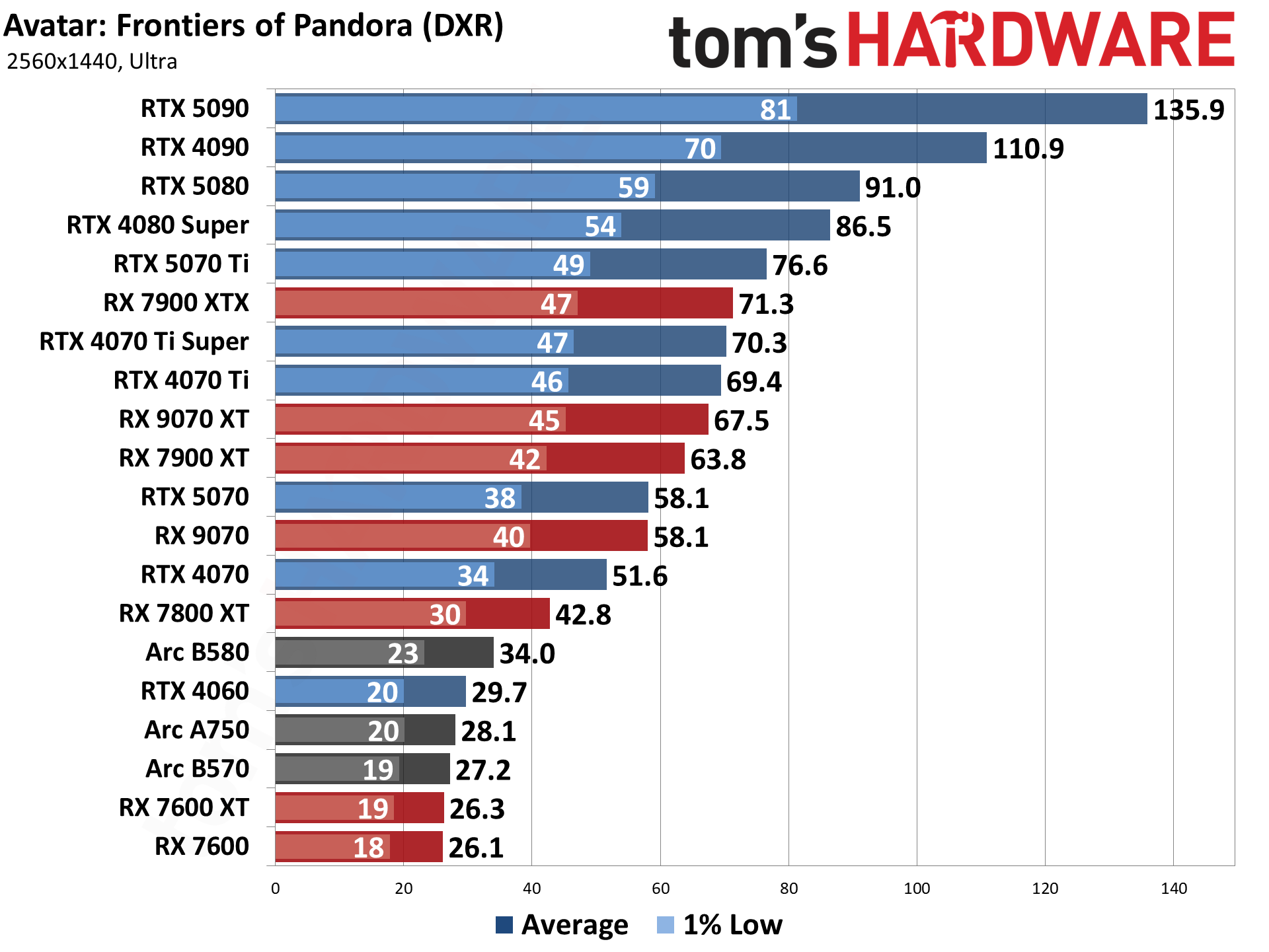
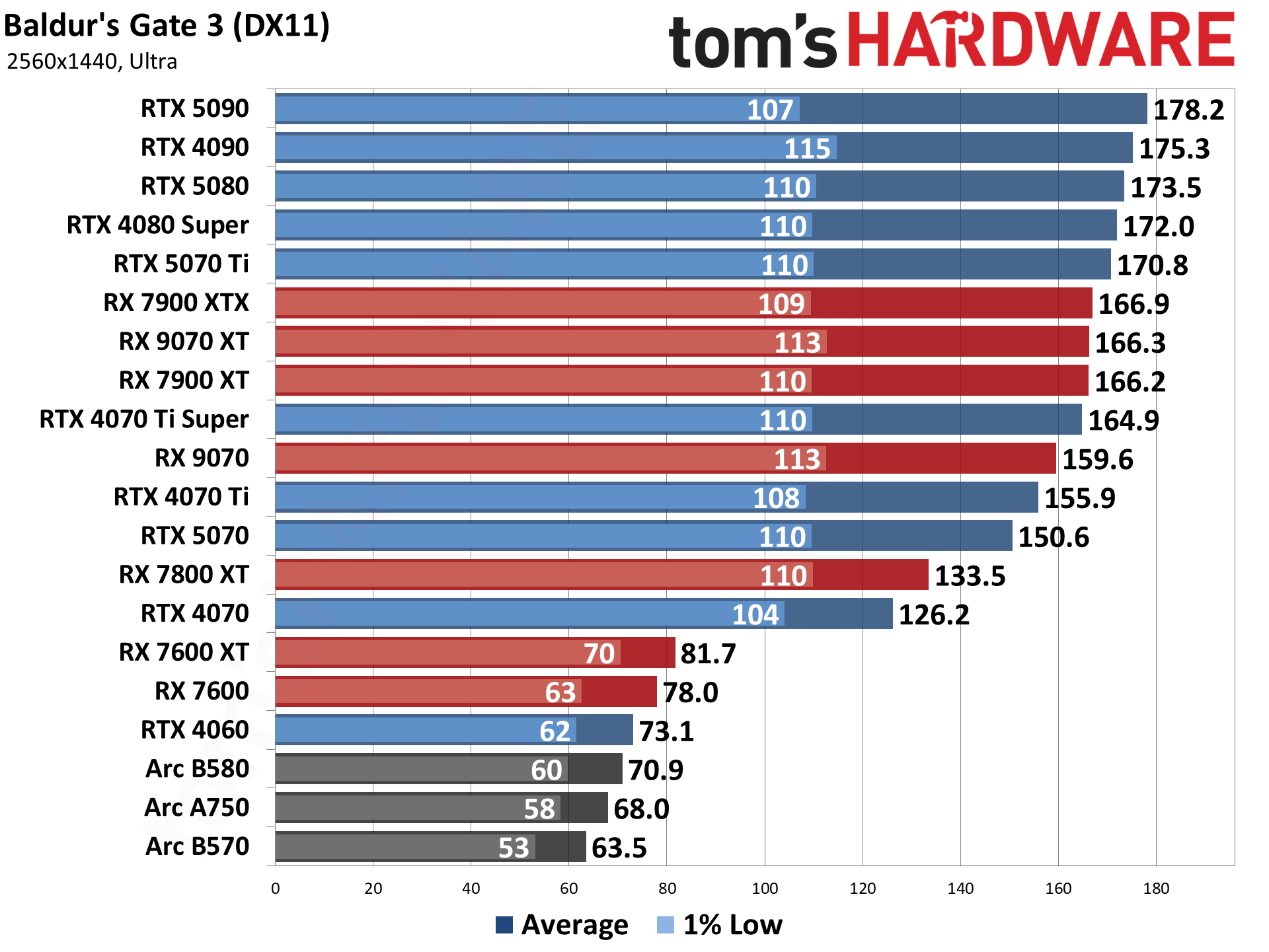
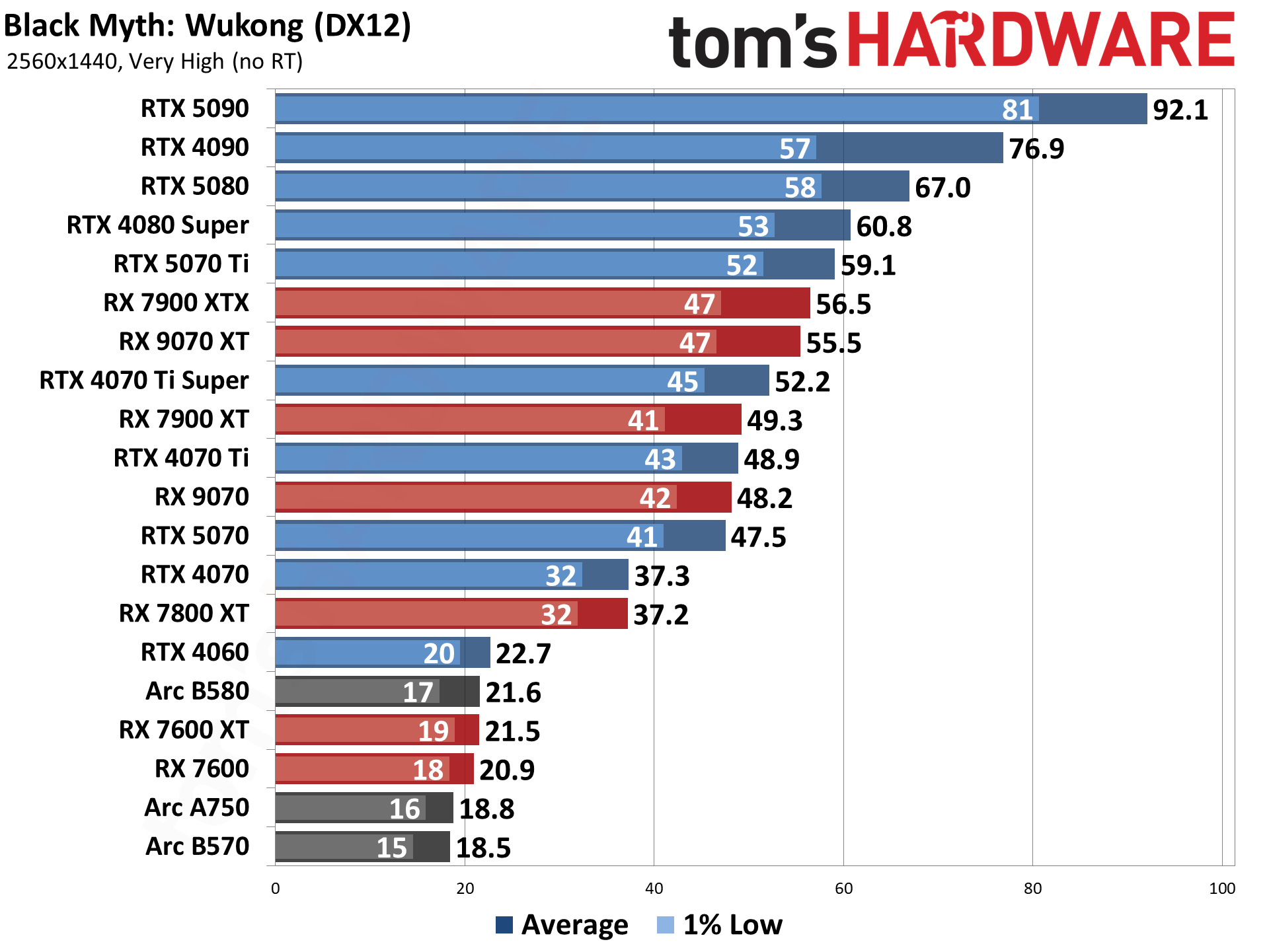
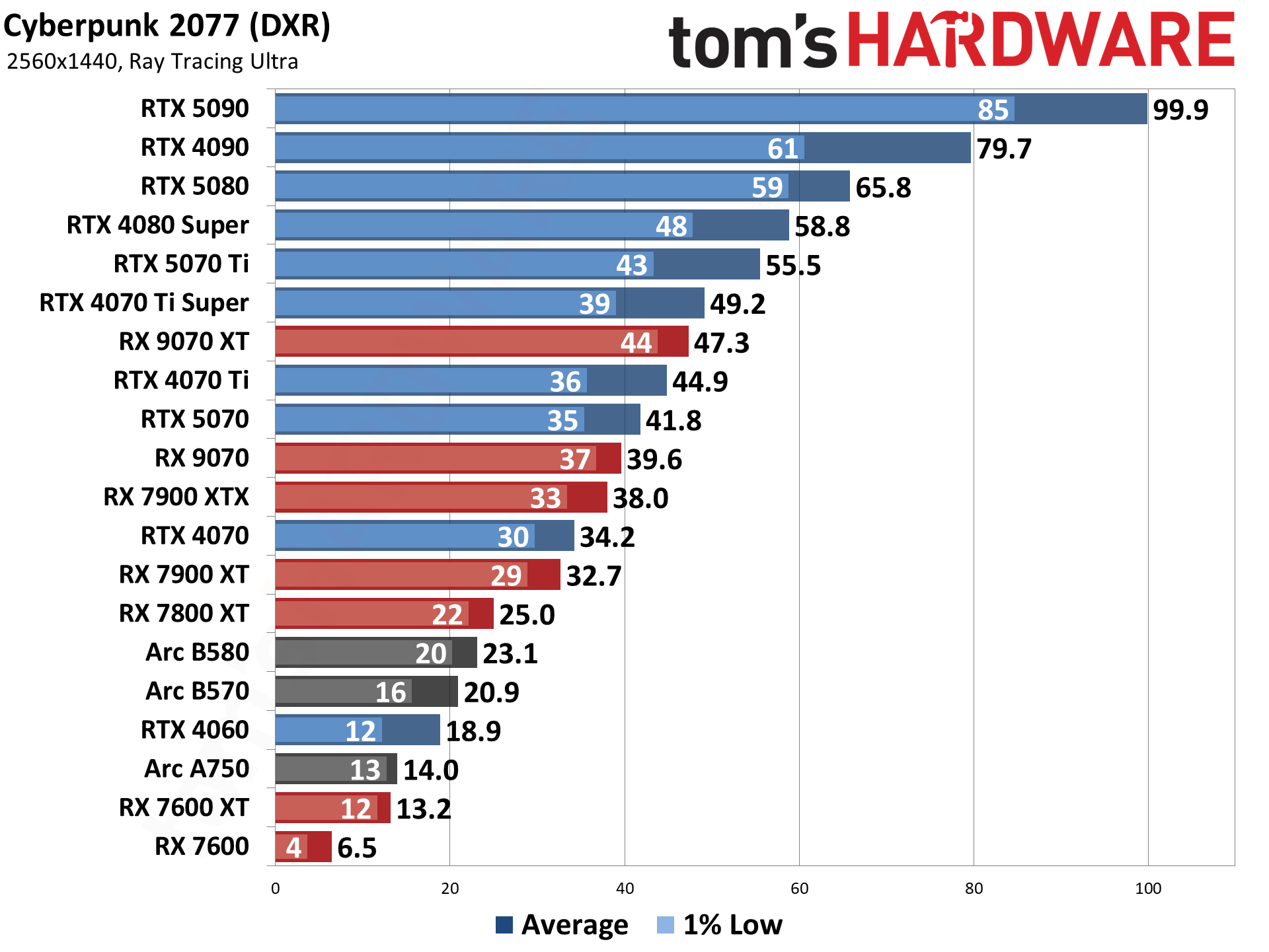
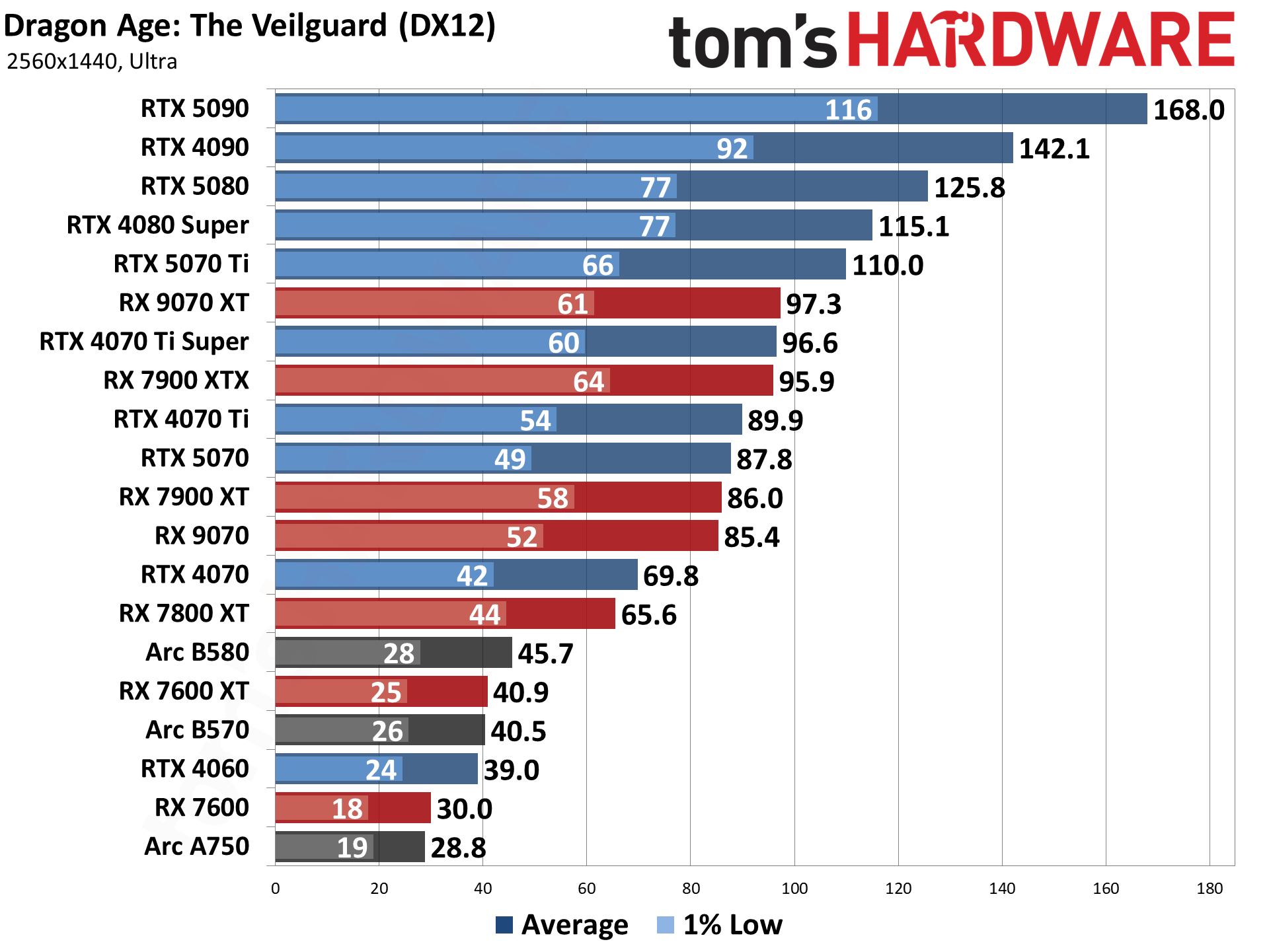
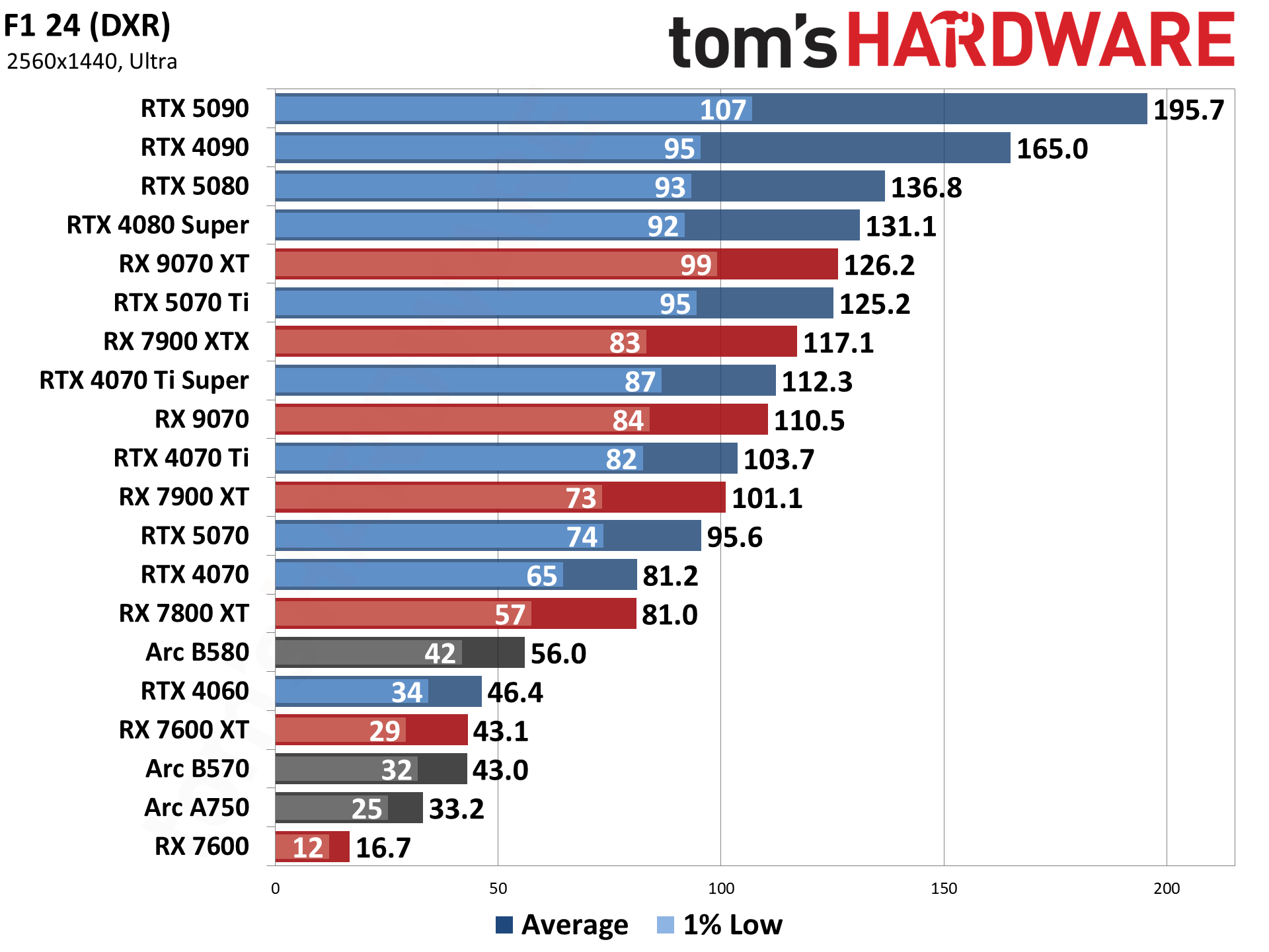
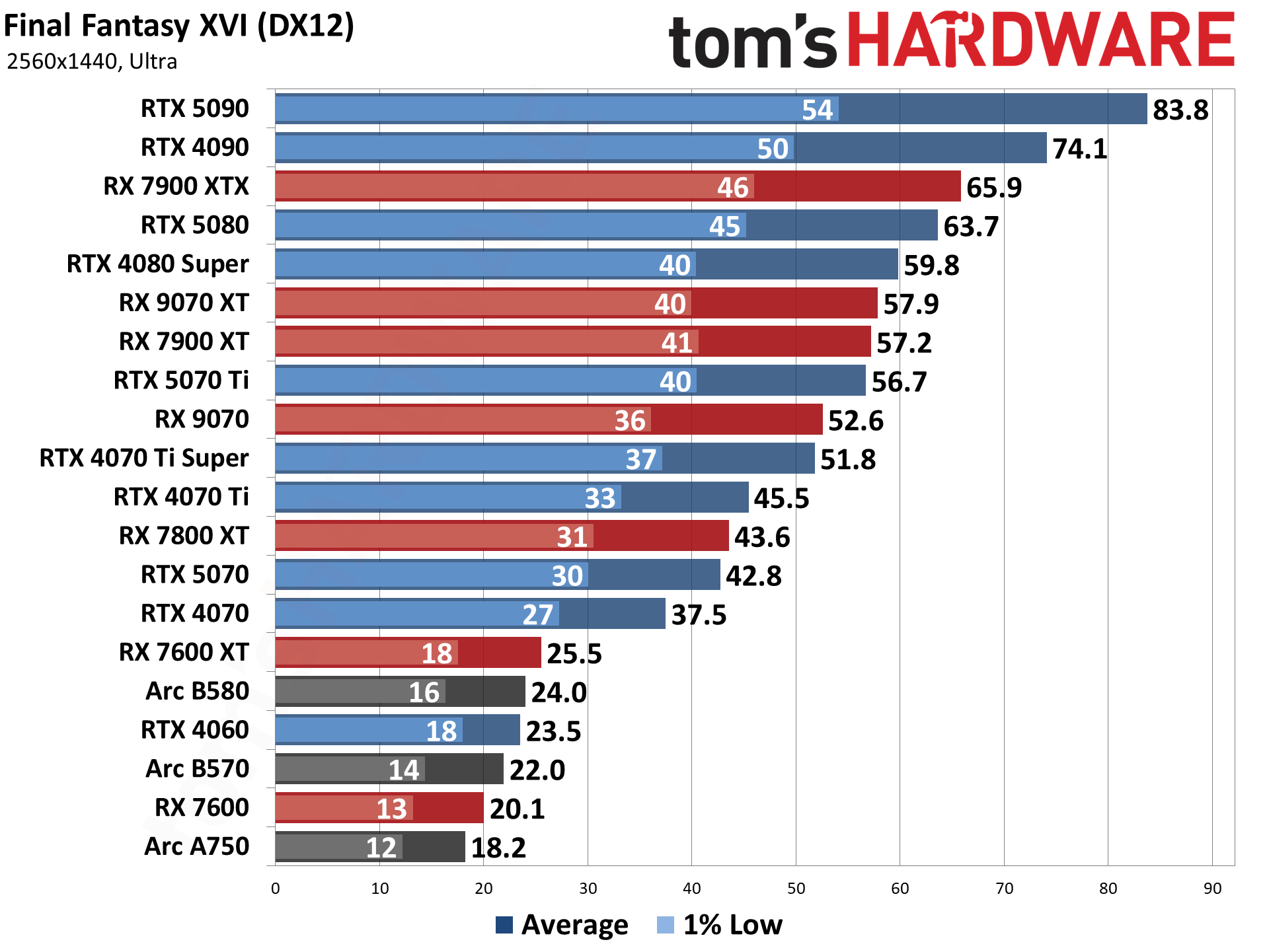
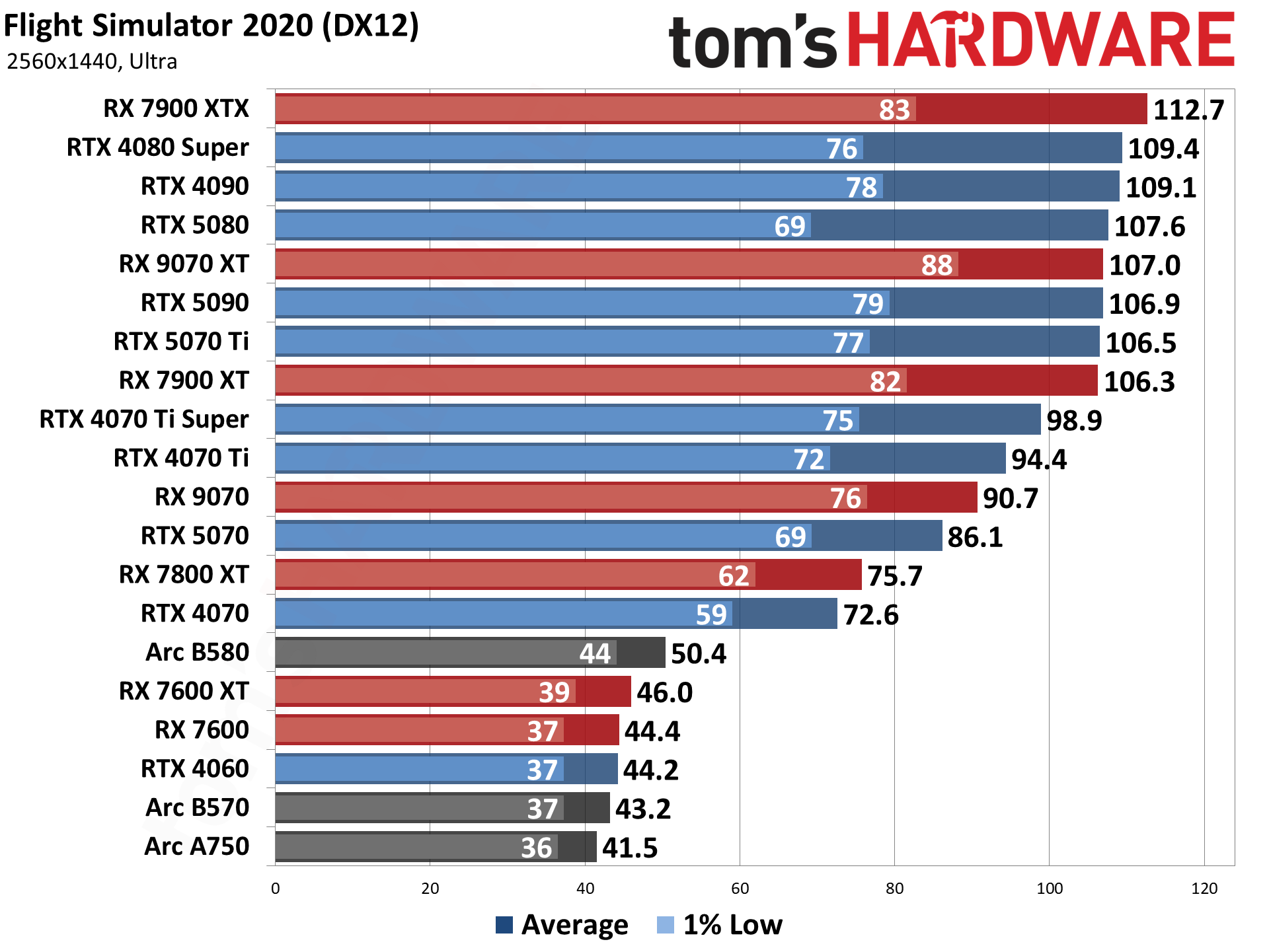
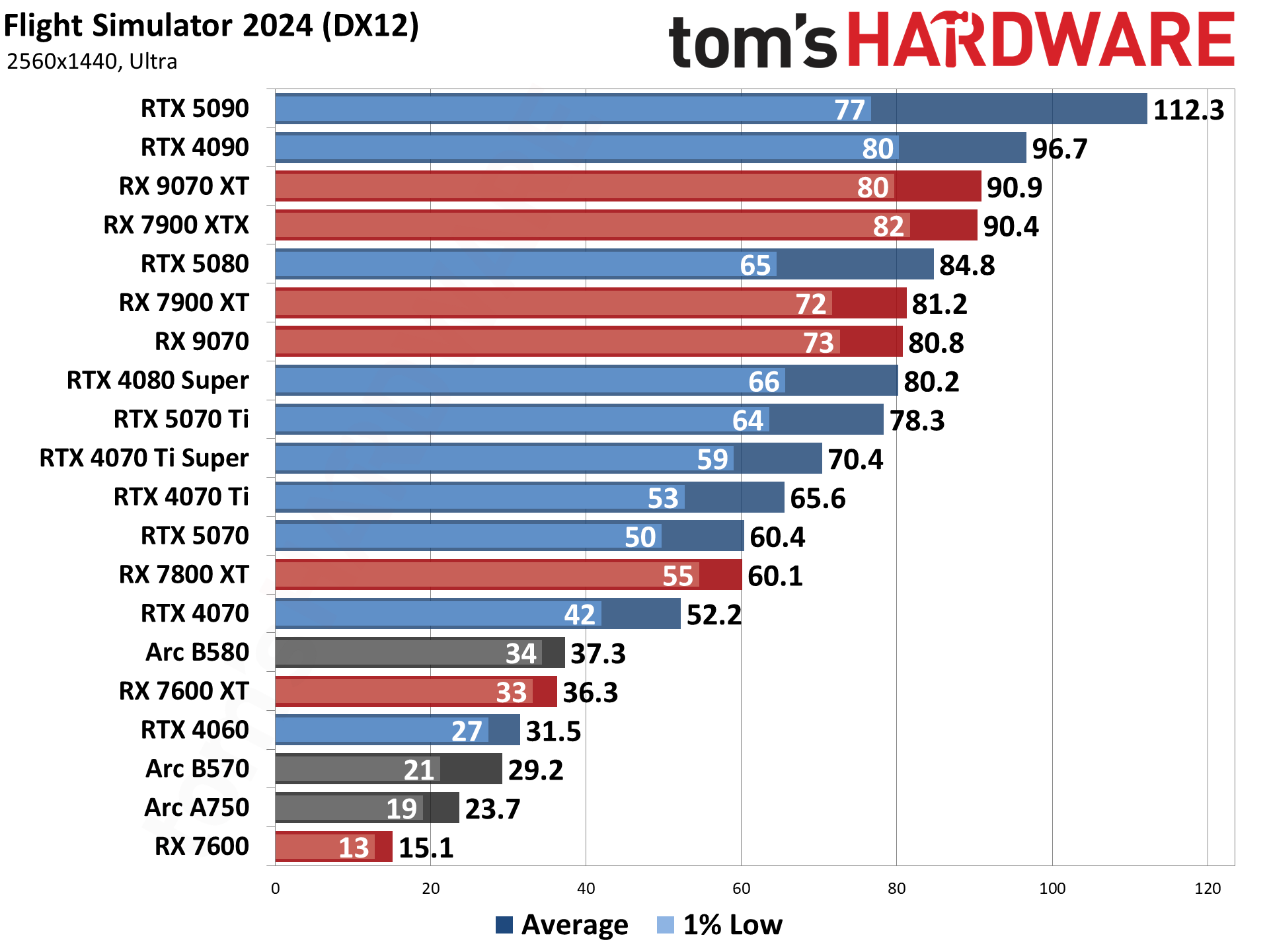
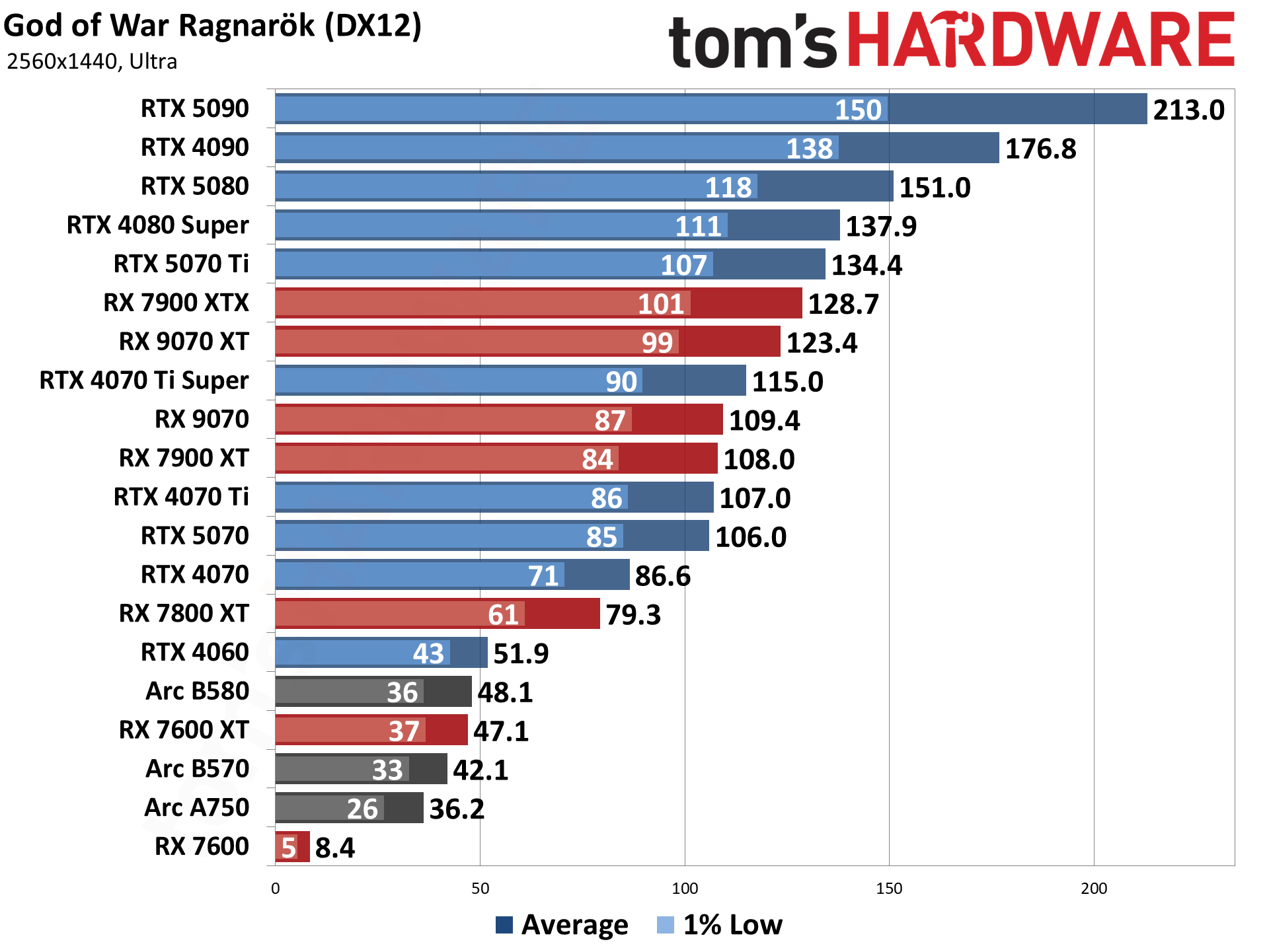
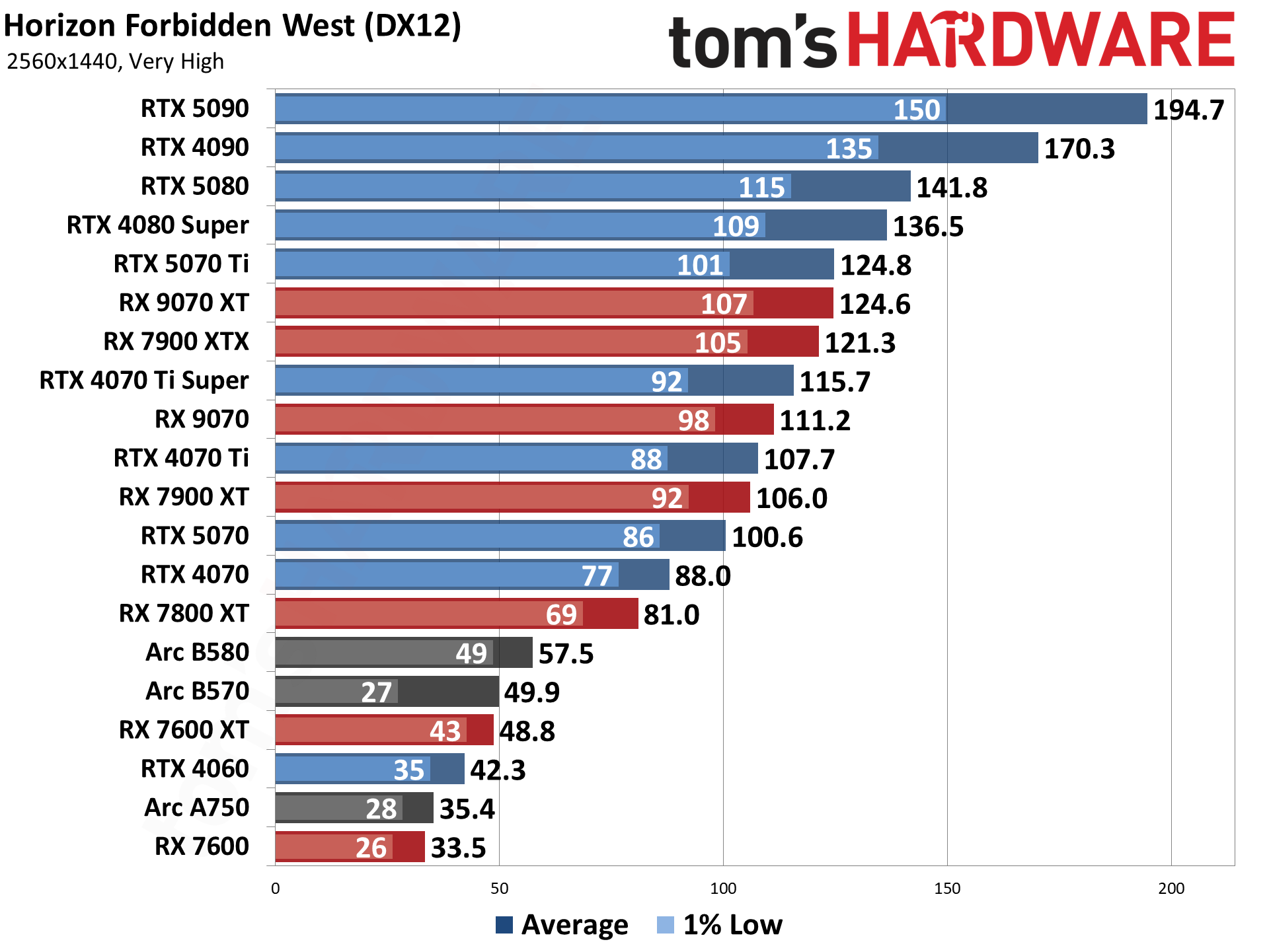
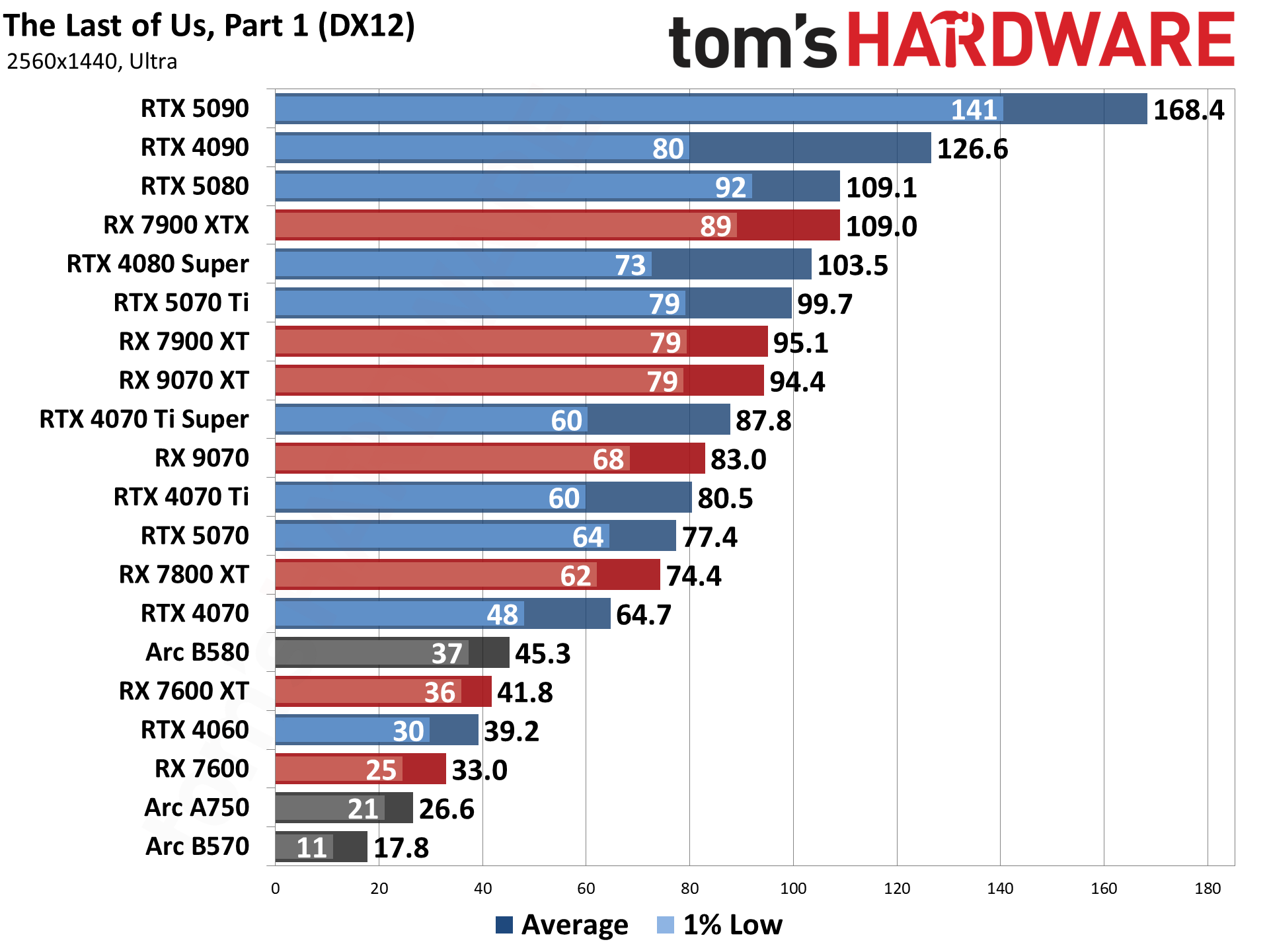
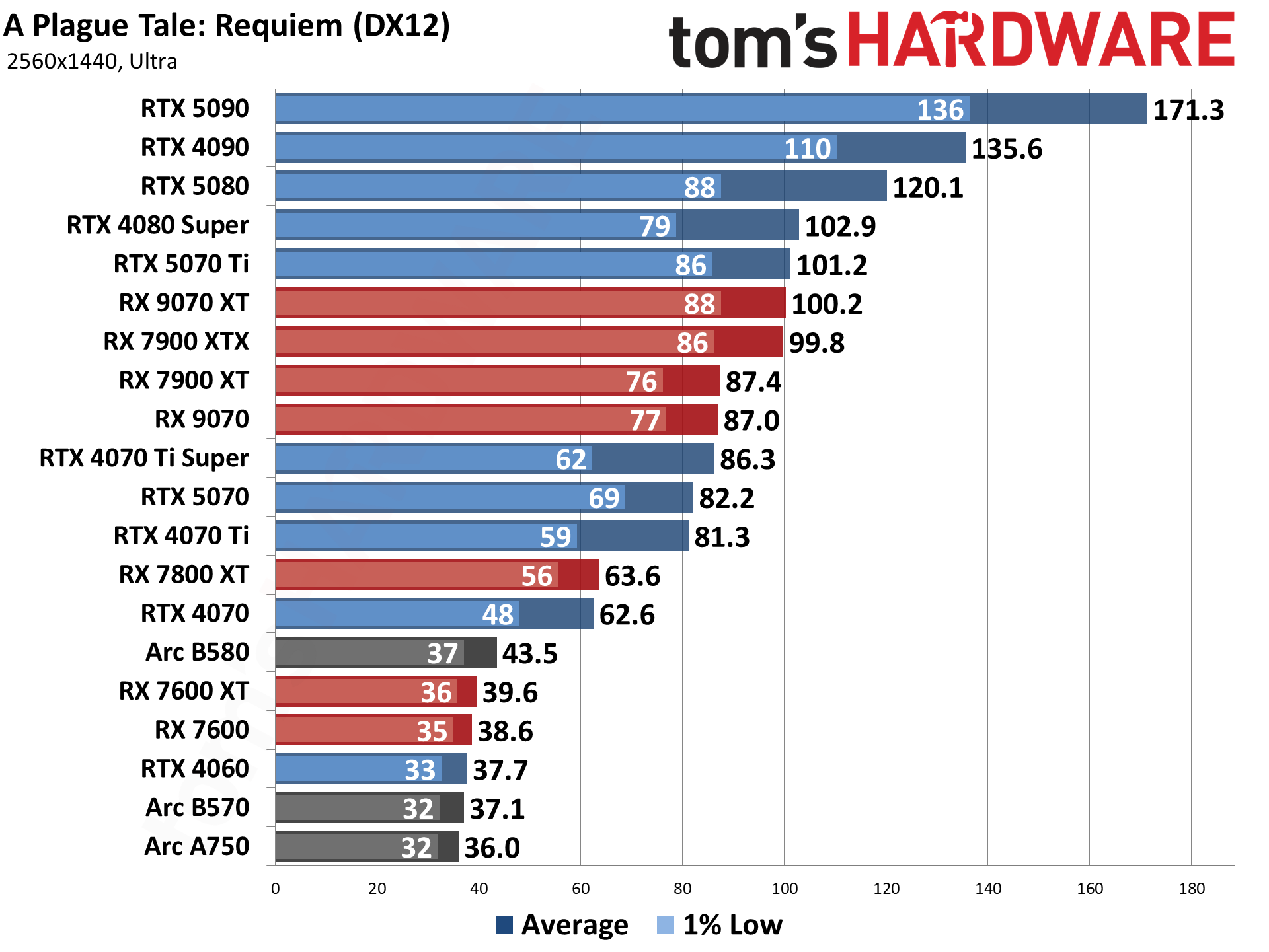
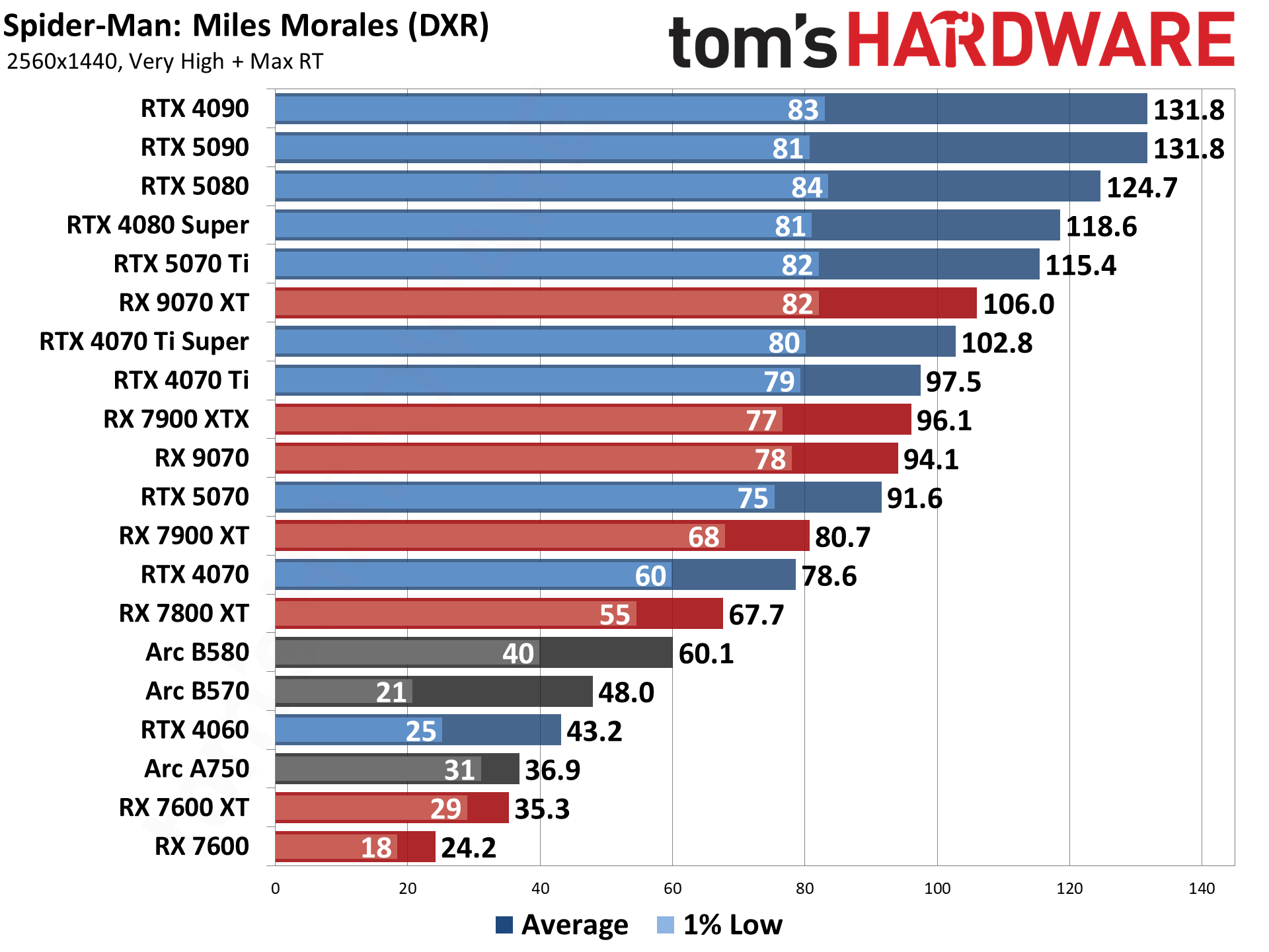
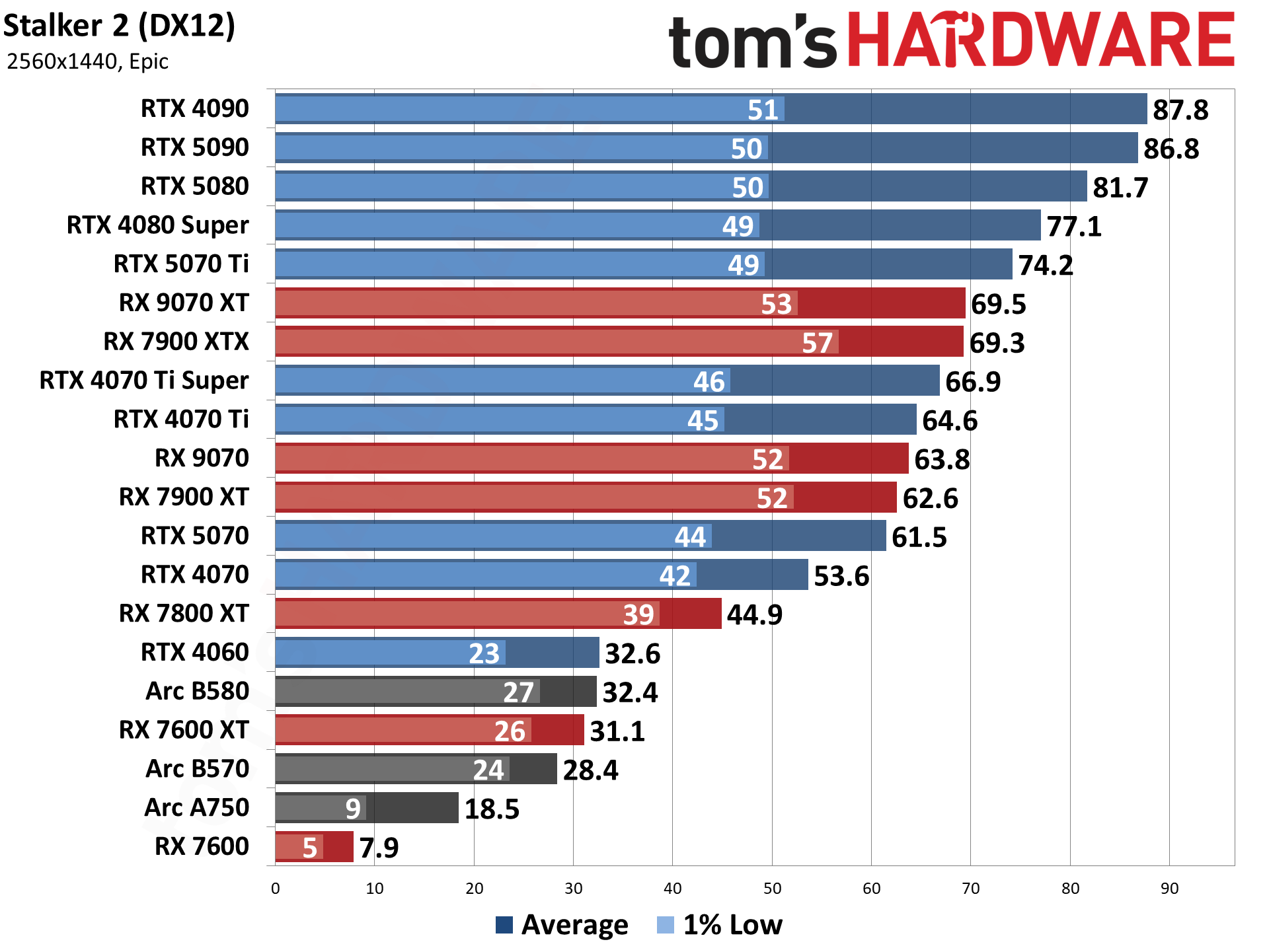
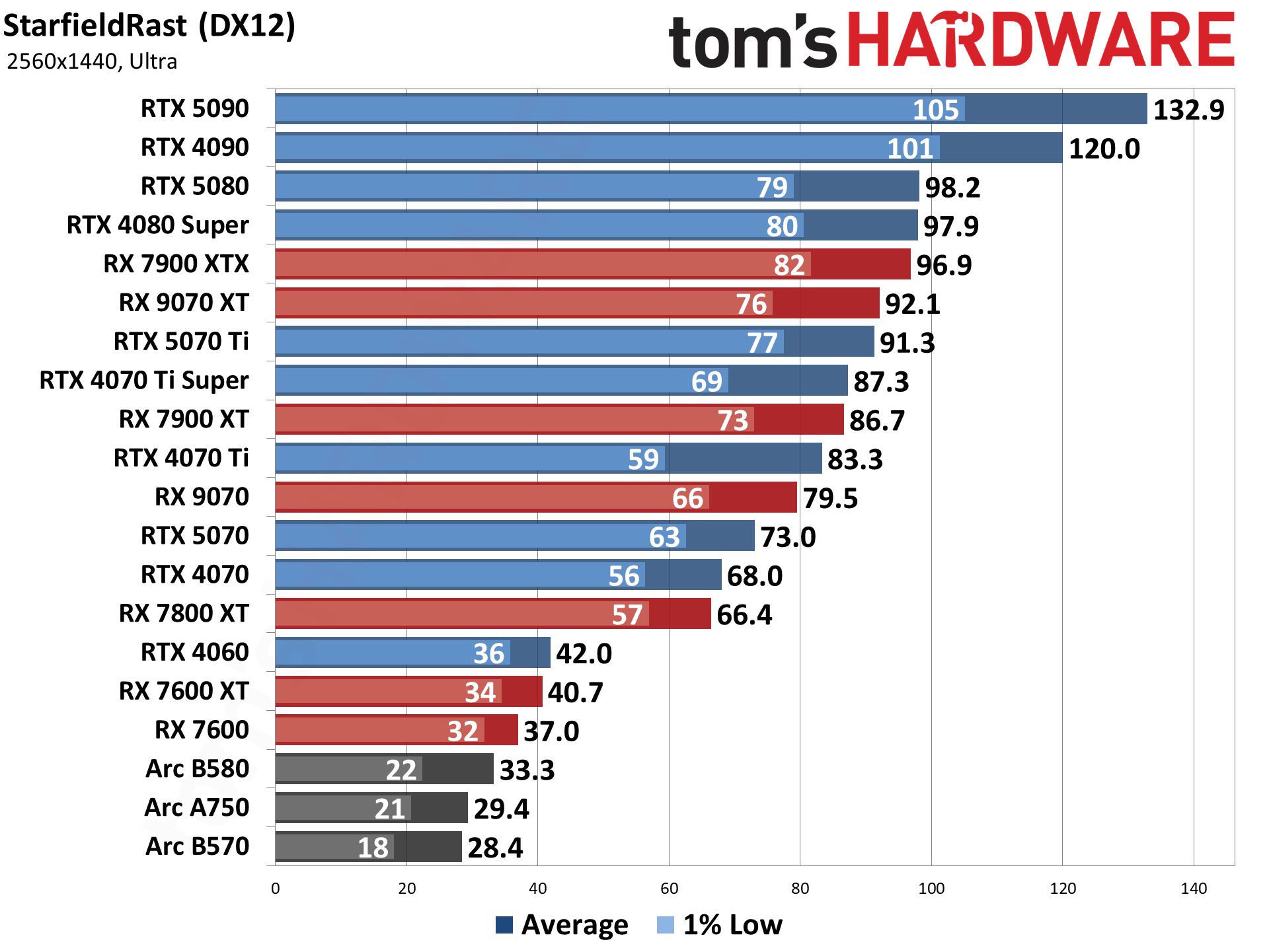
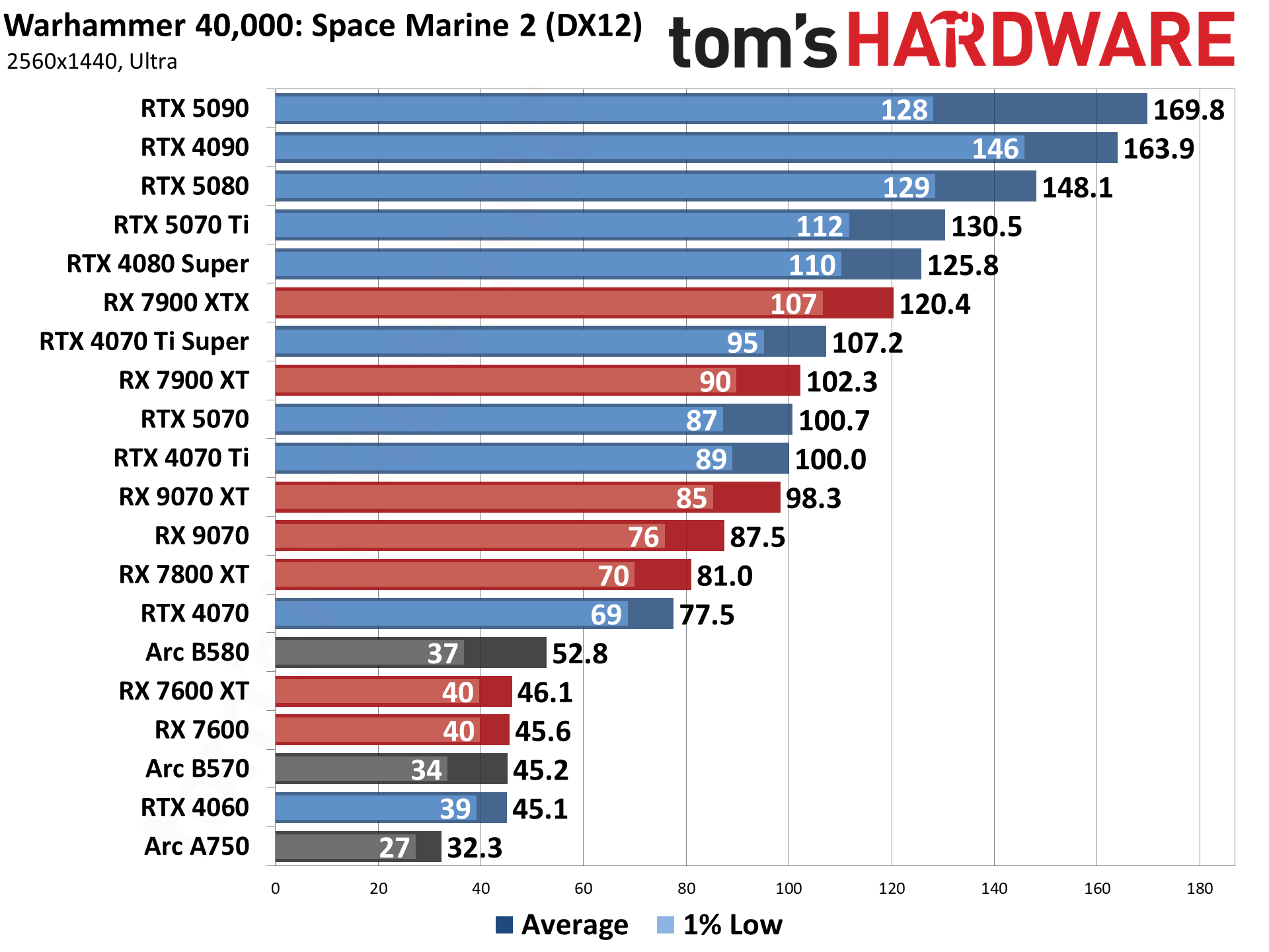
Best Graphics Cards — 4K Ultra
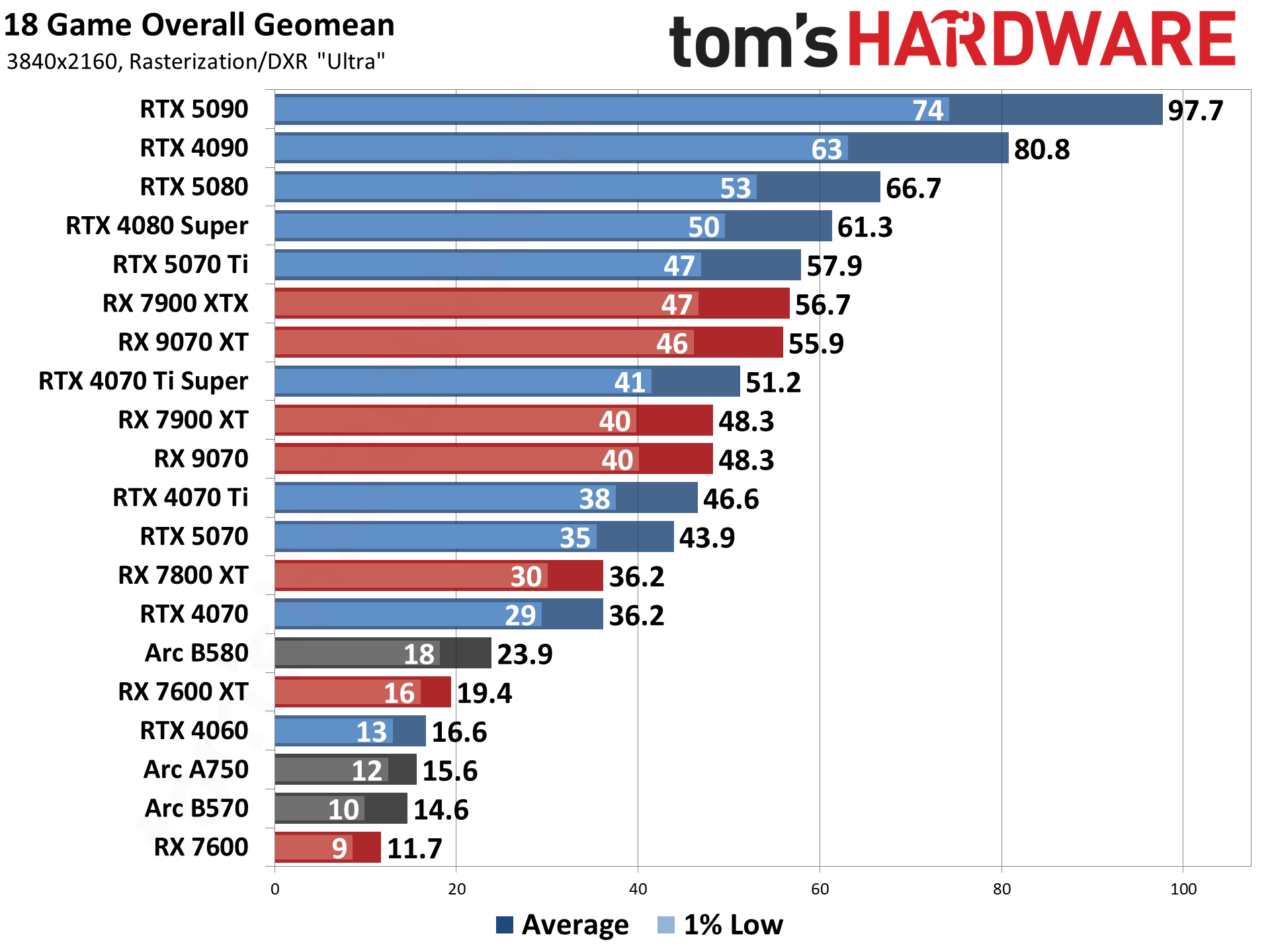
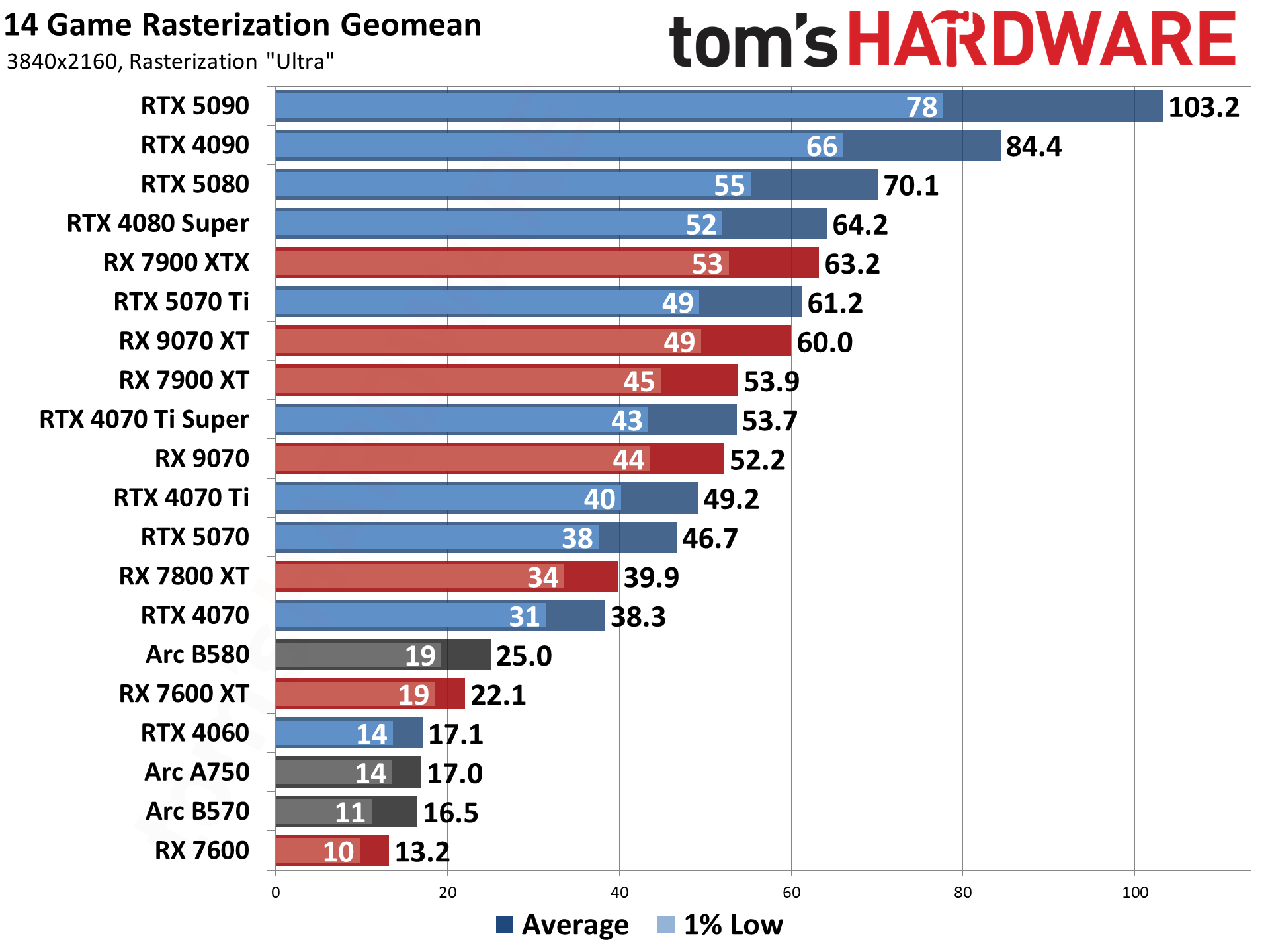
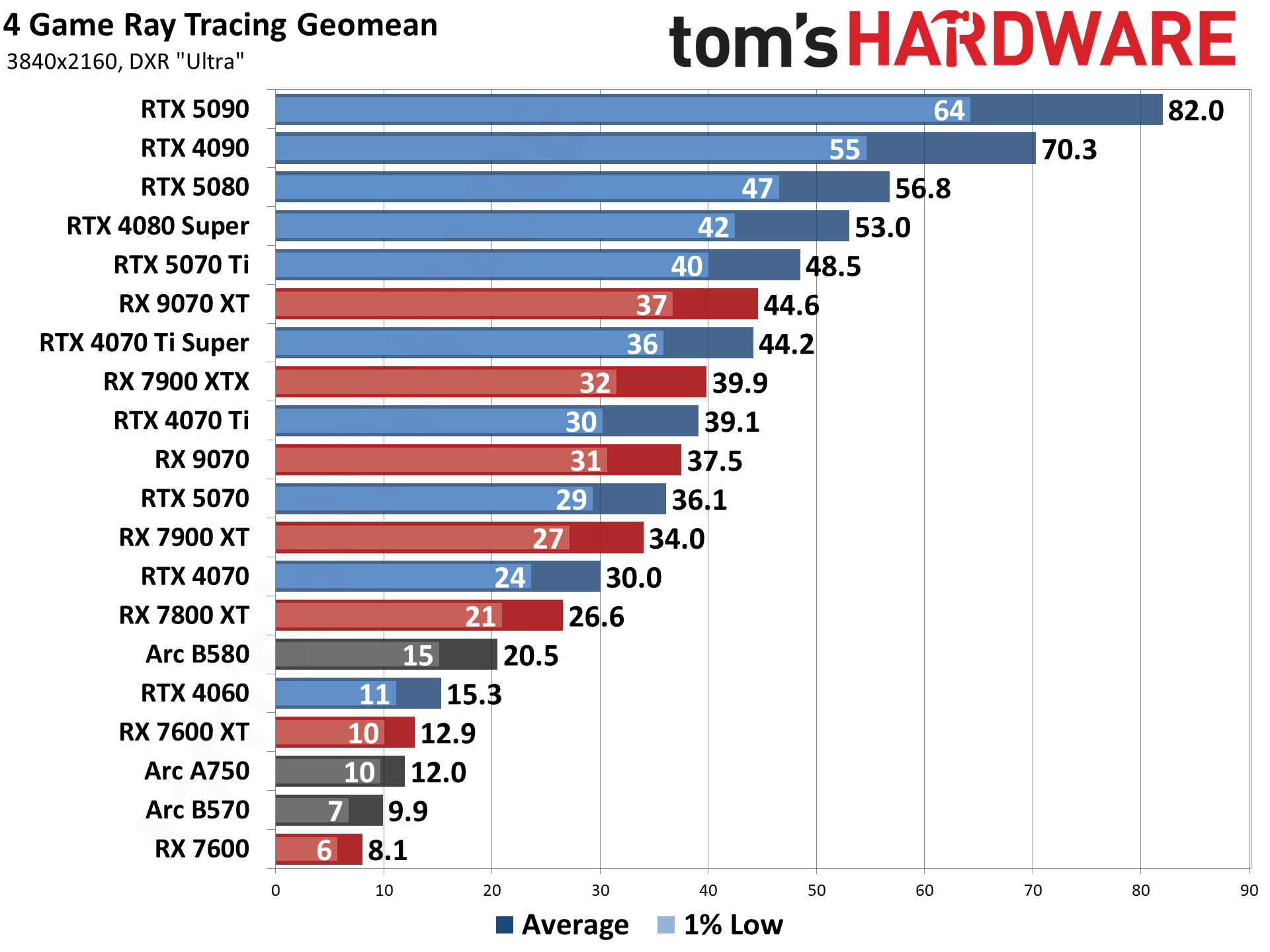
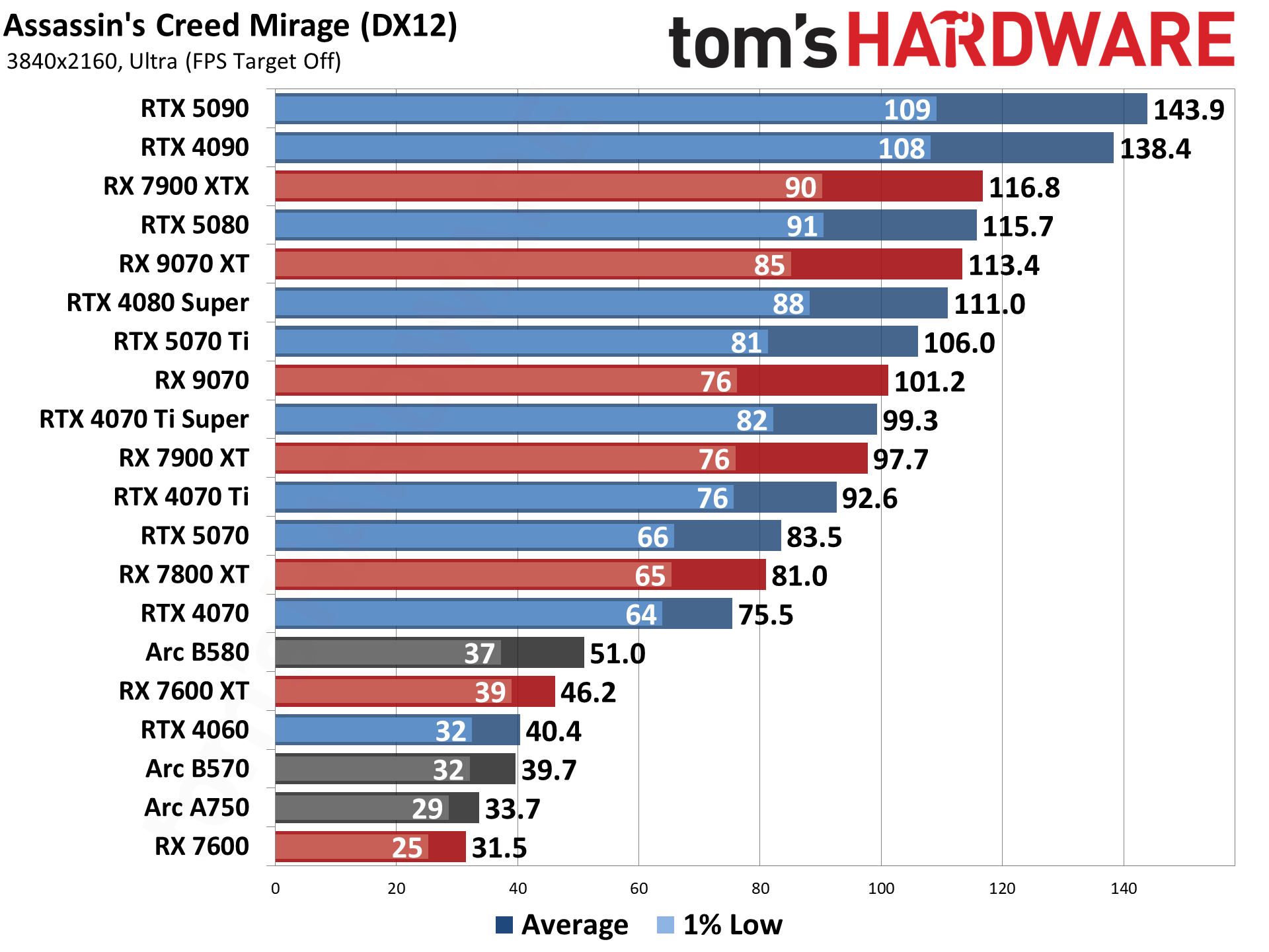
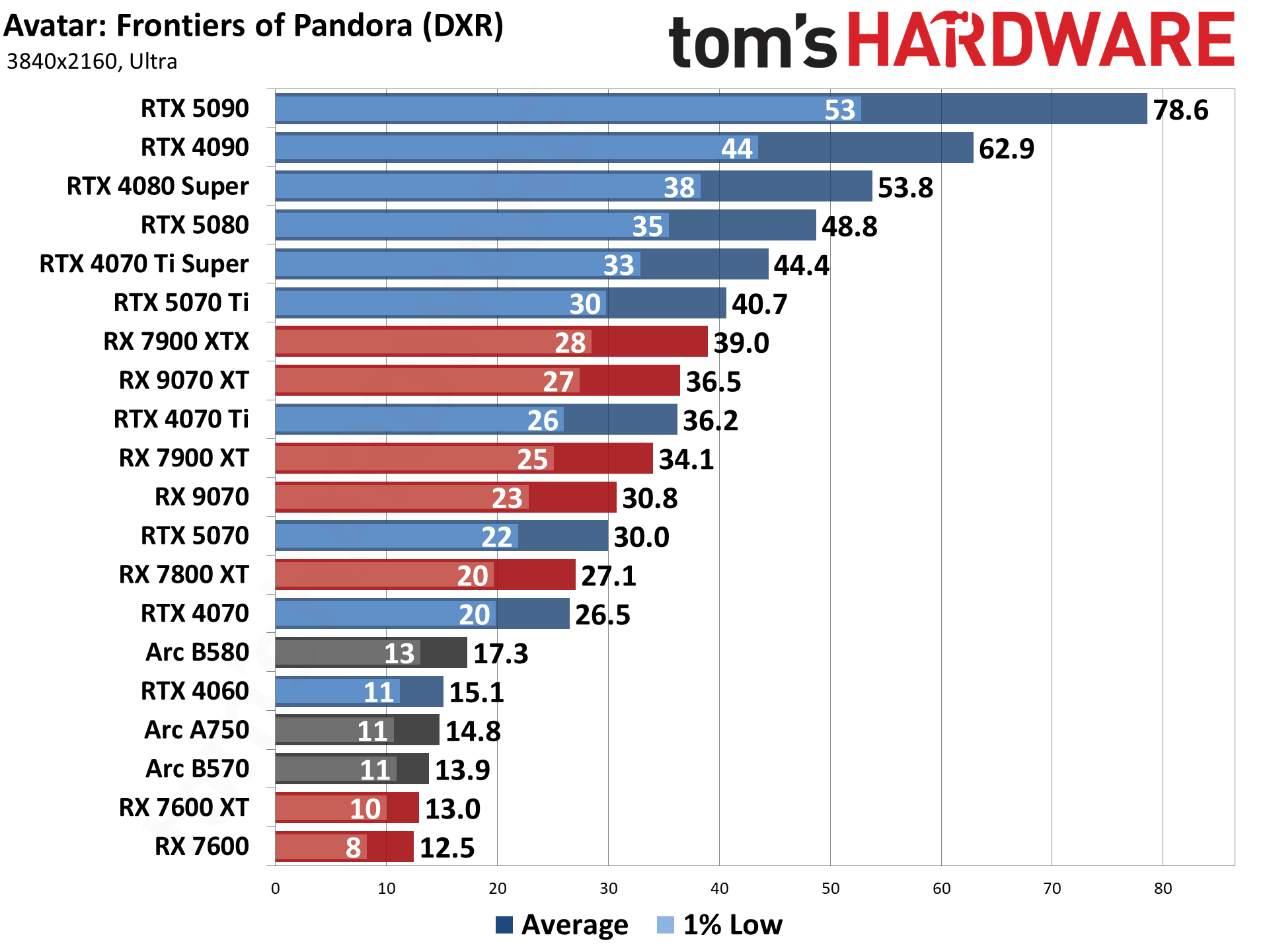
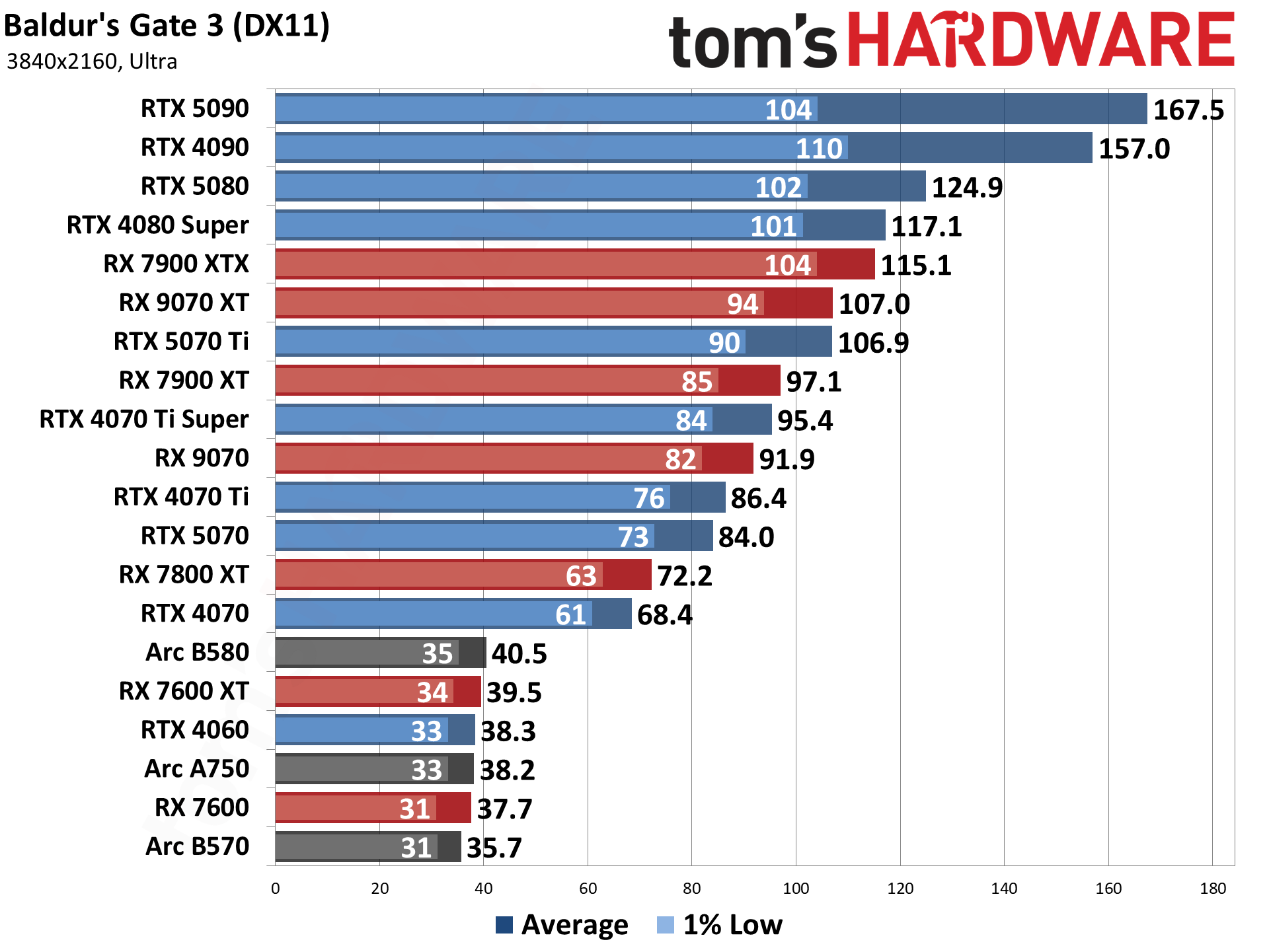
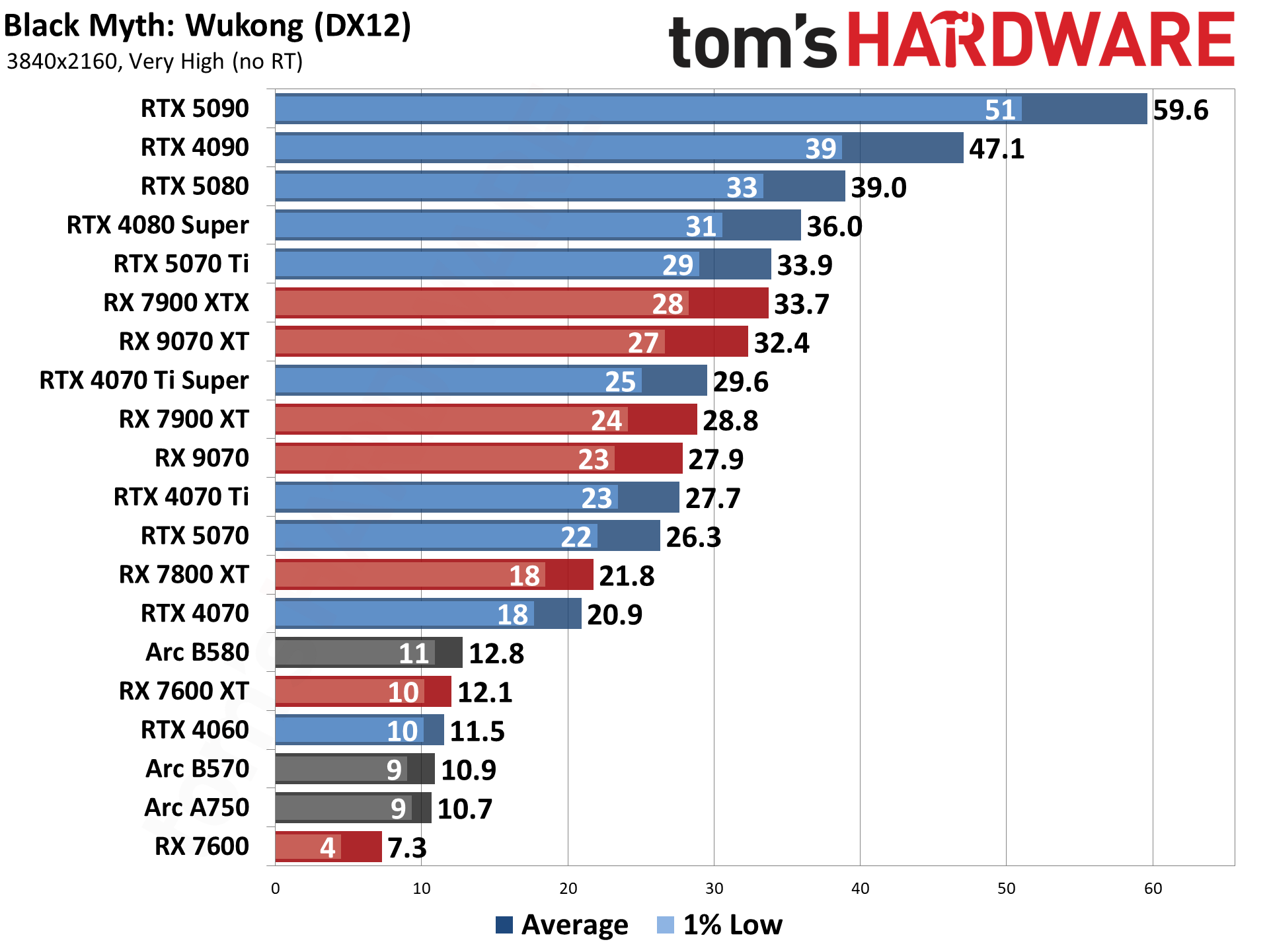
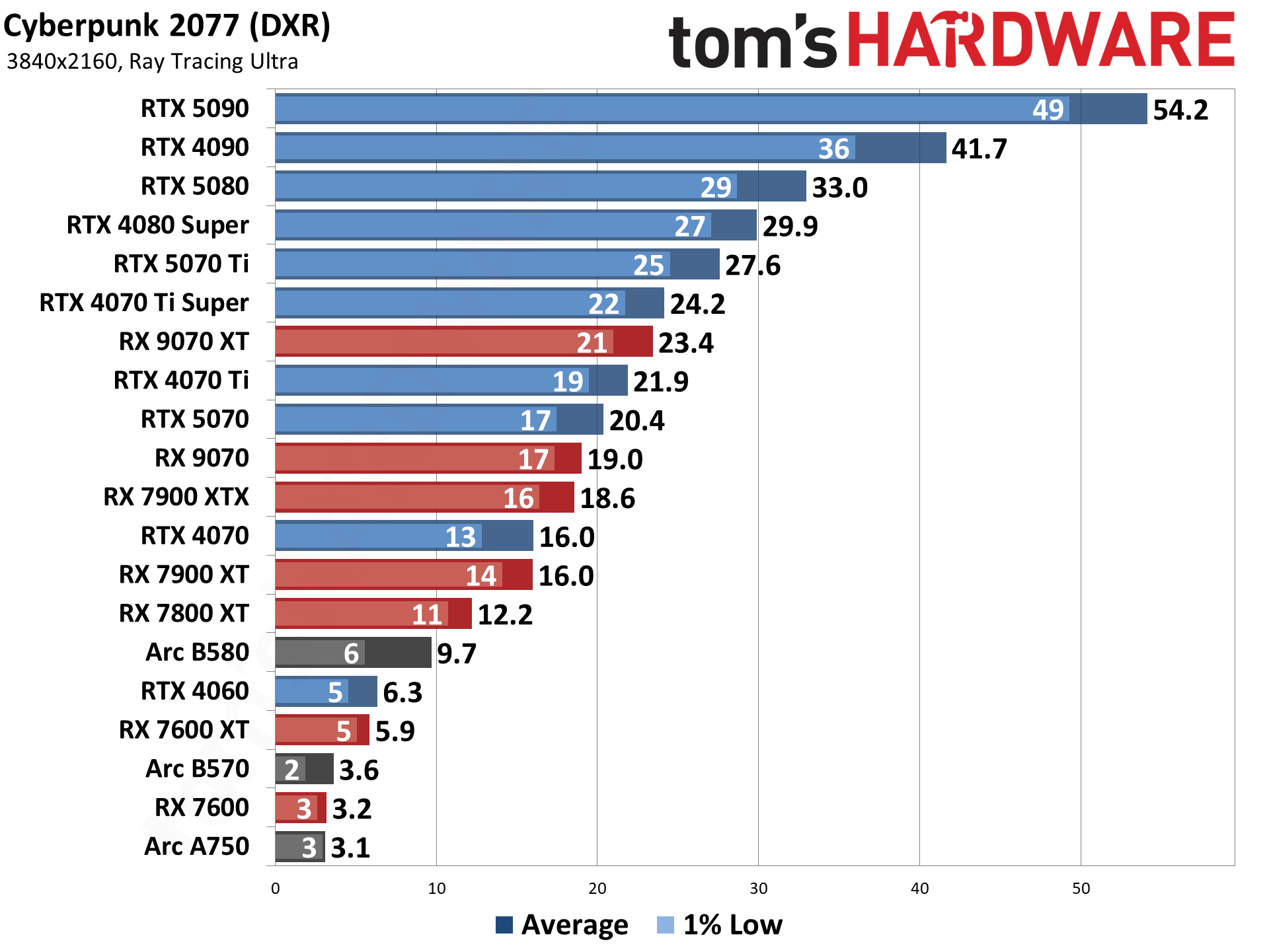
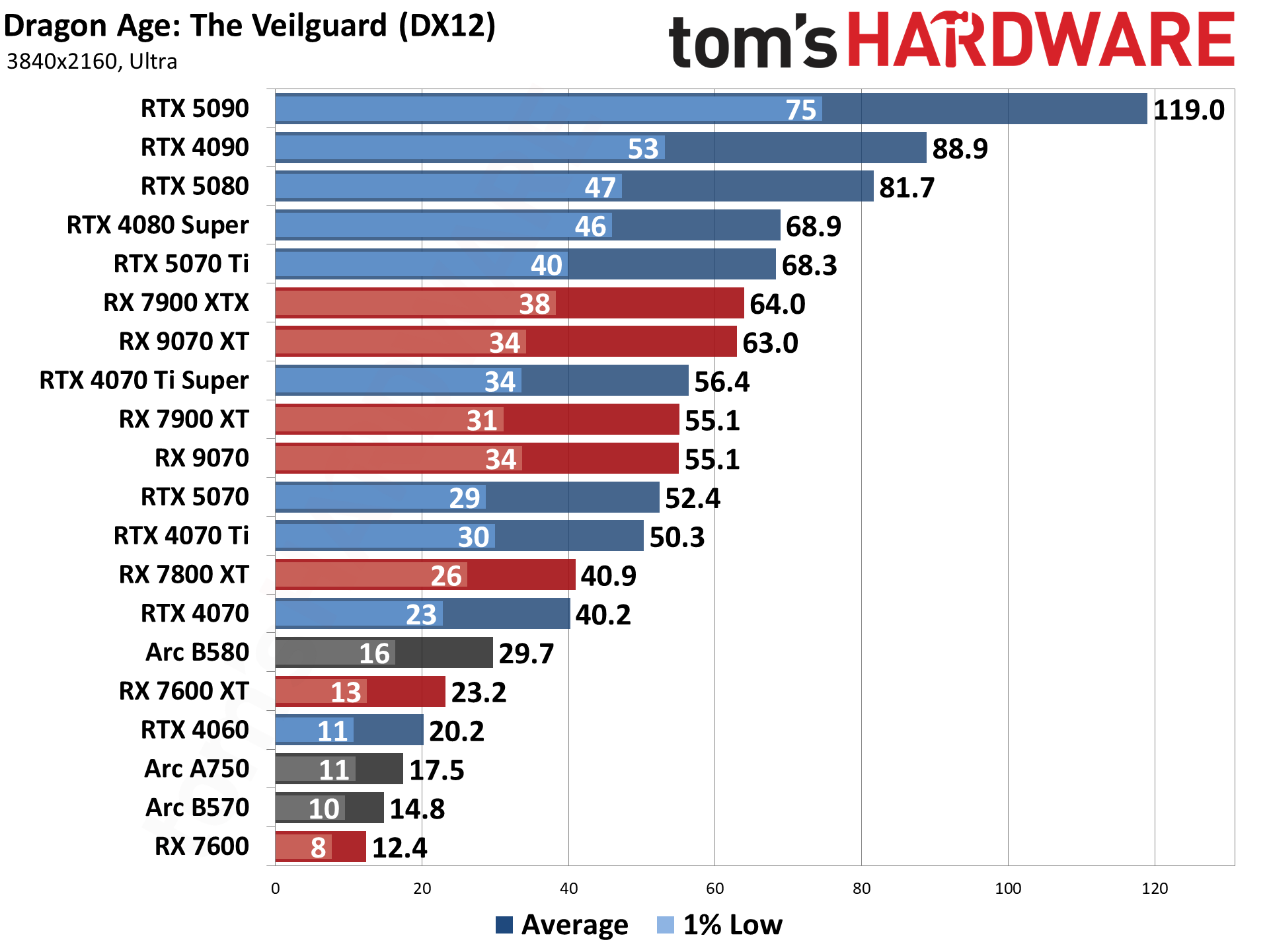
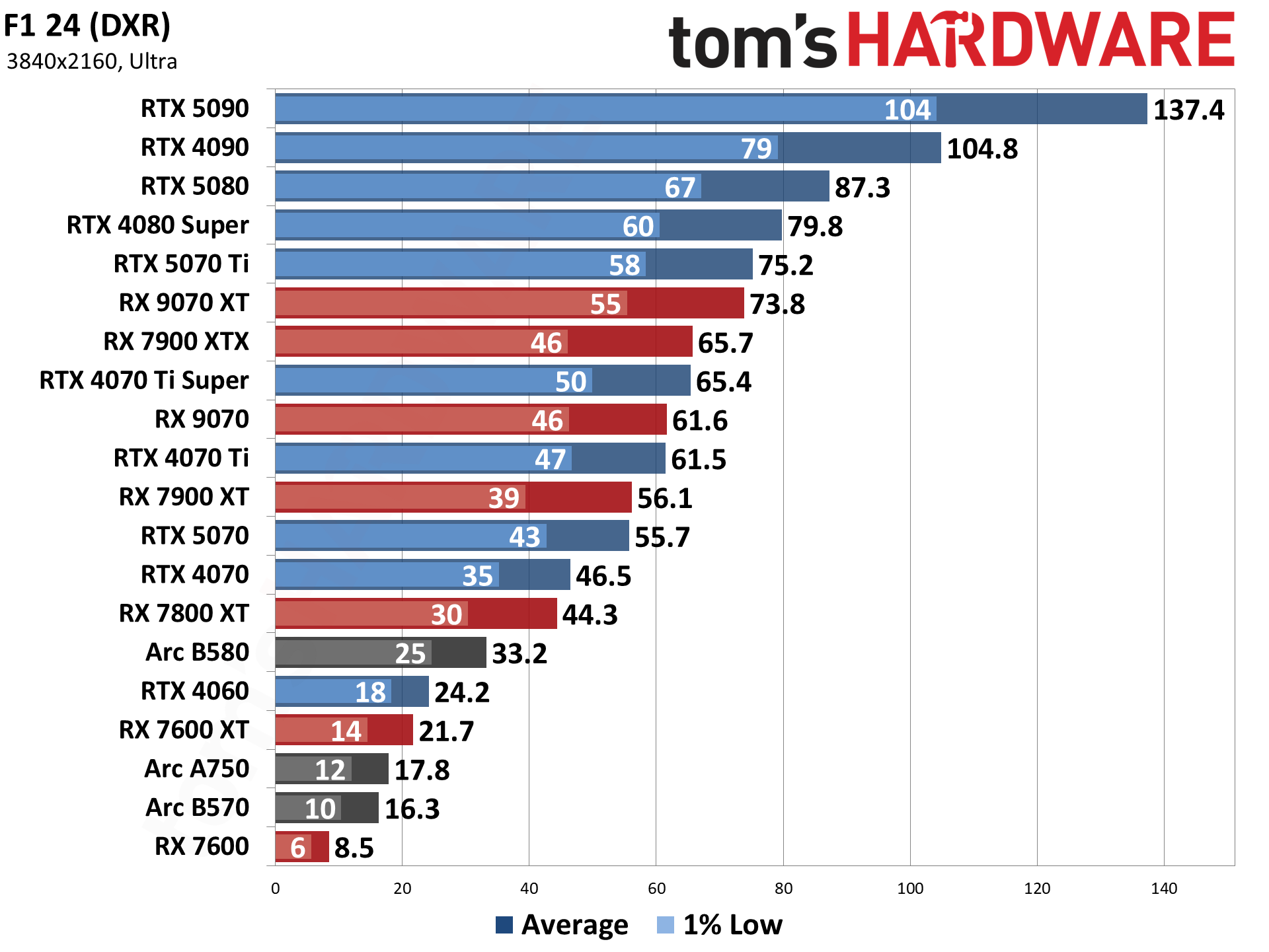
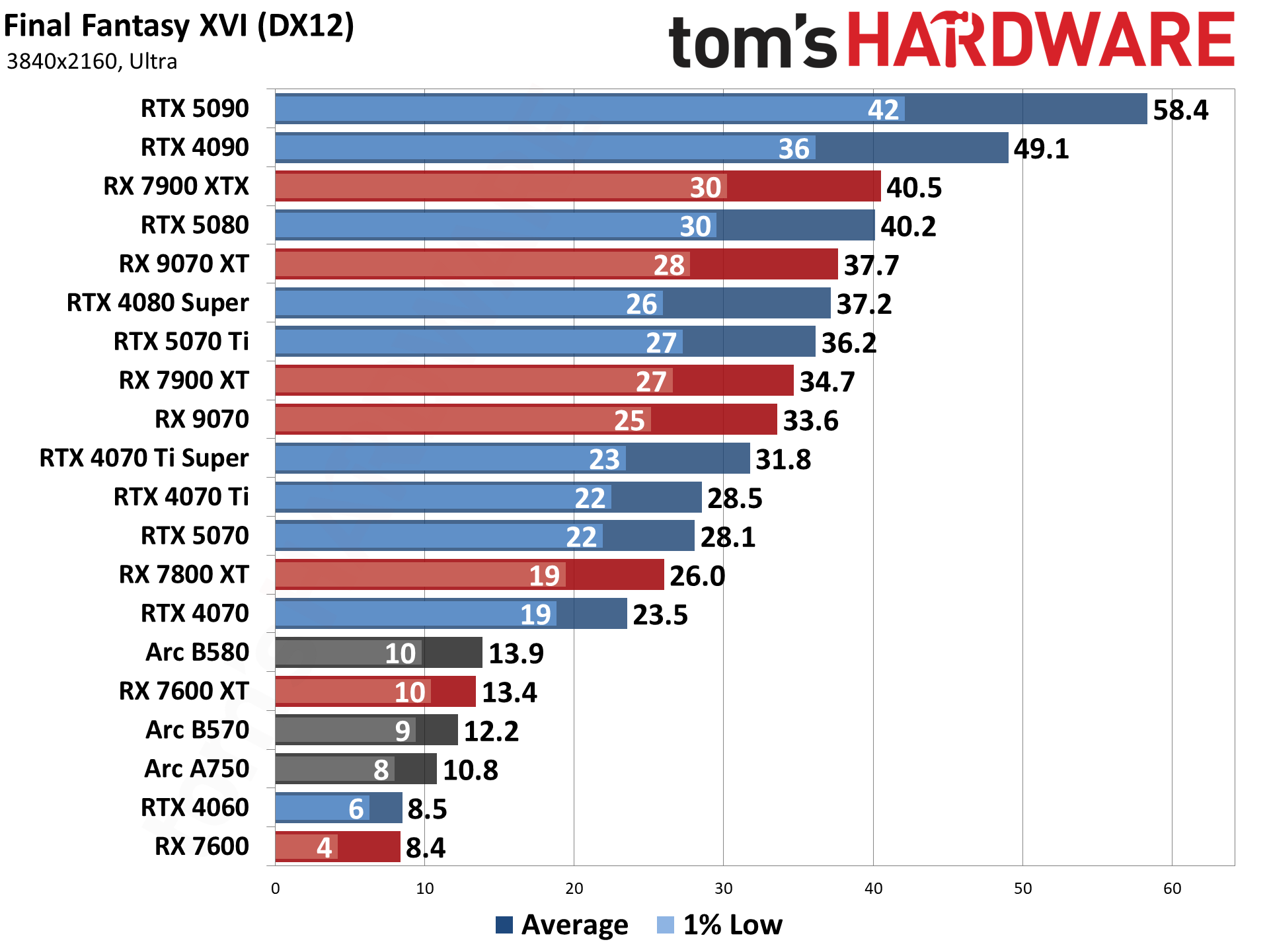
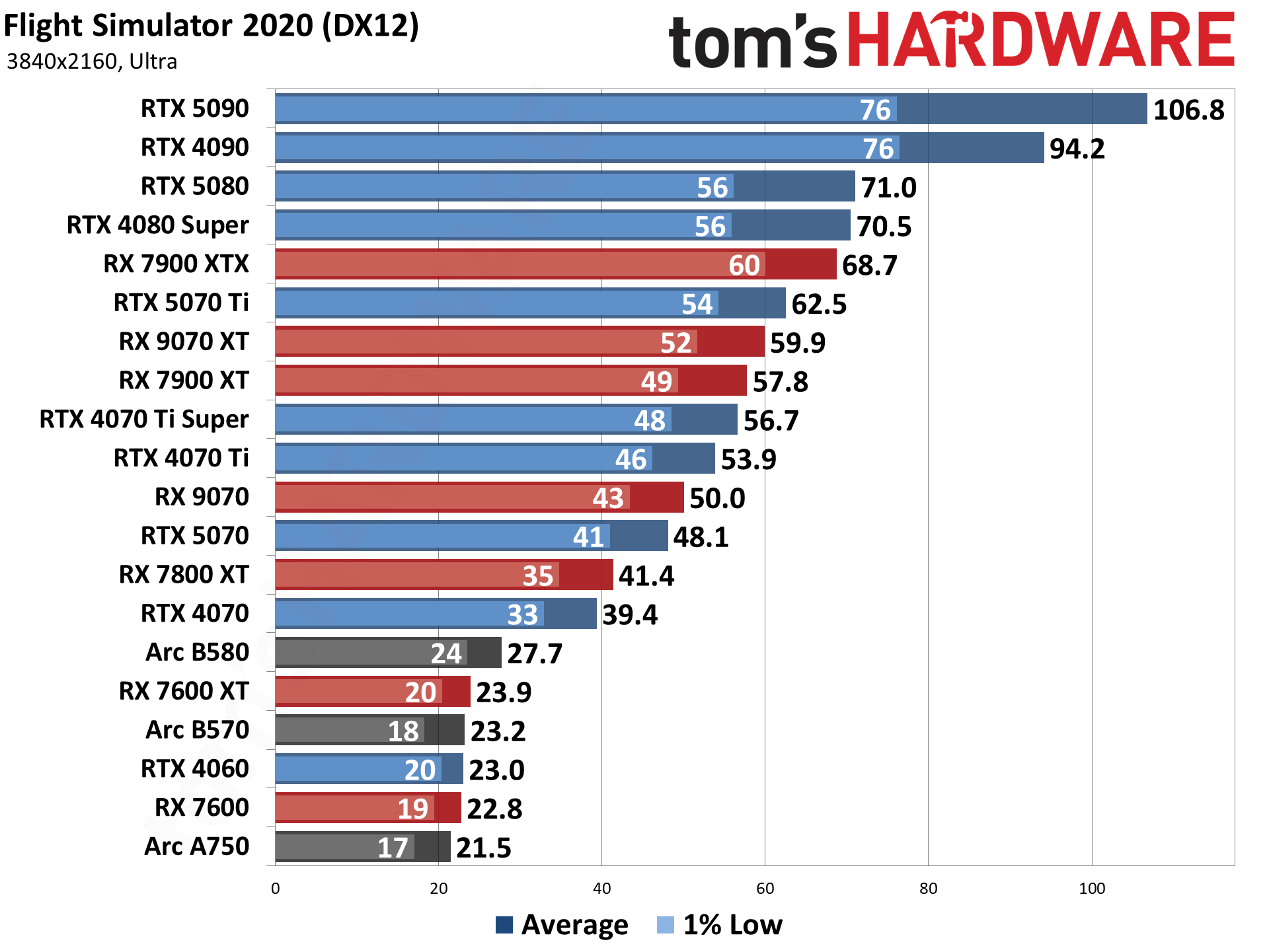
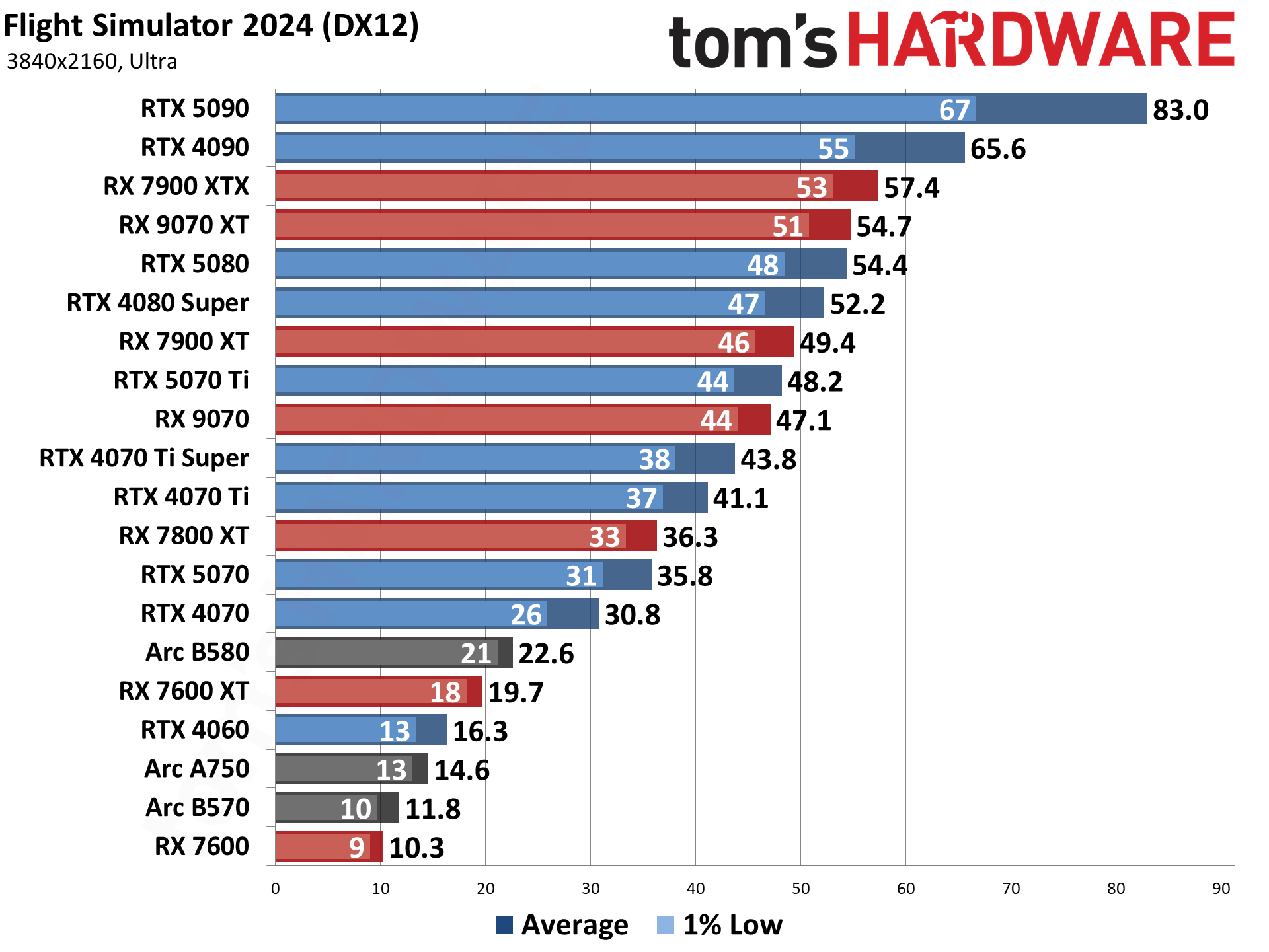
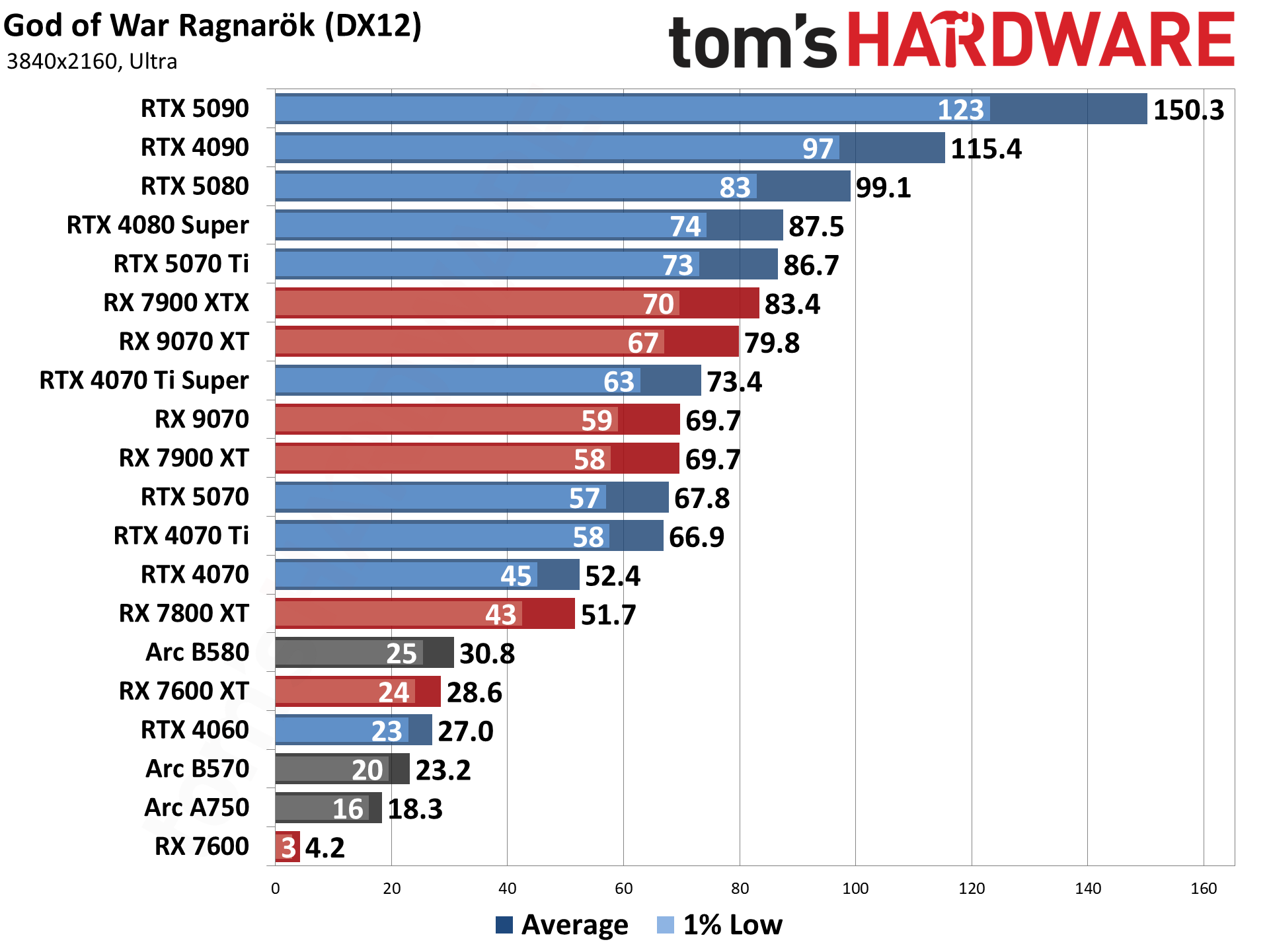
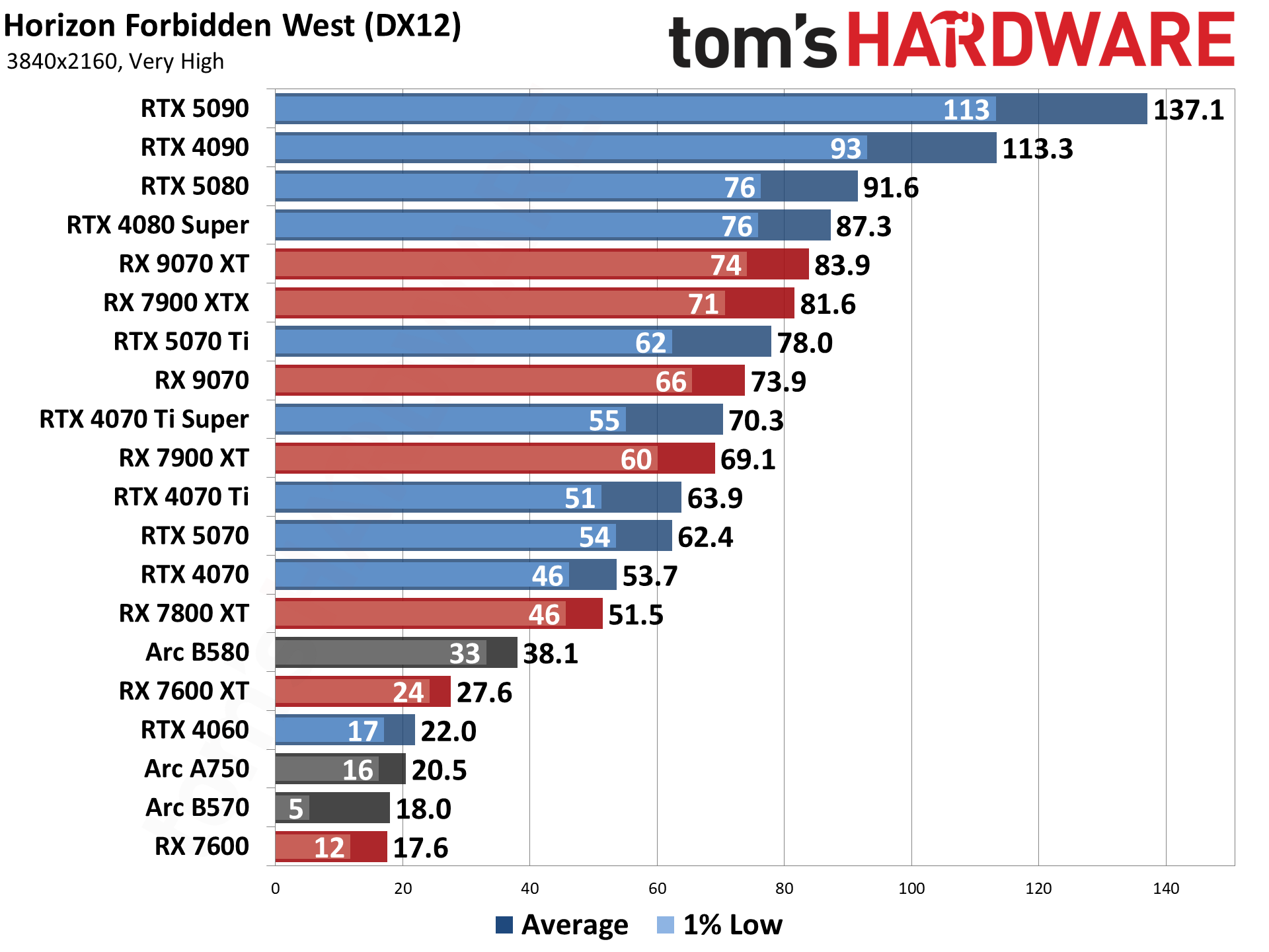
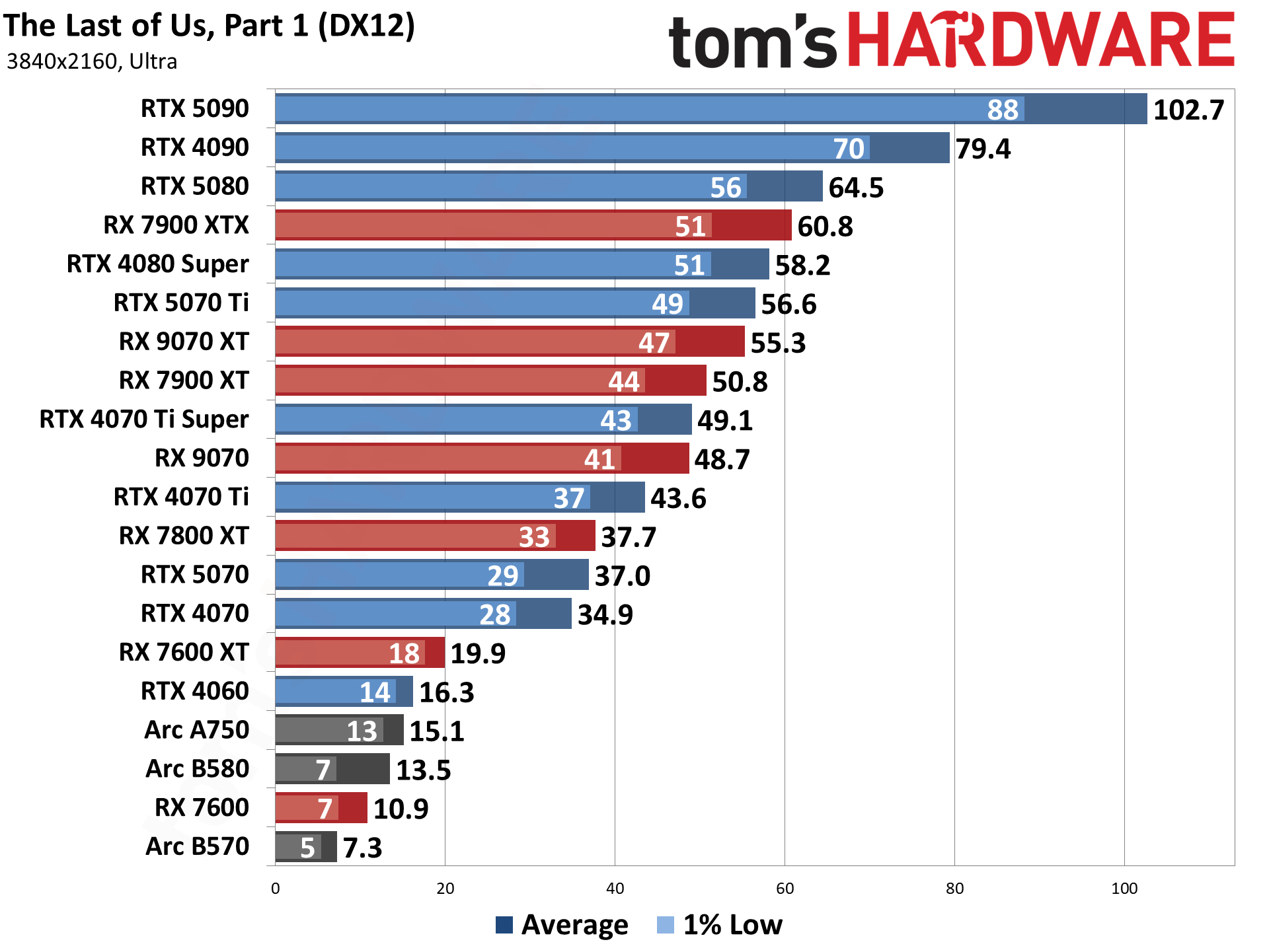
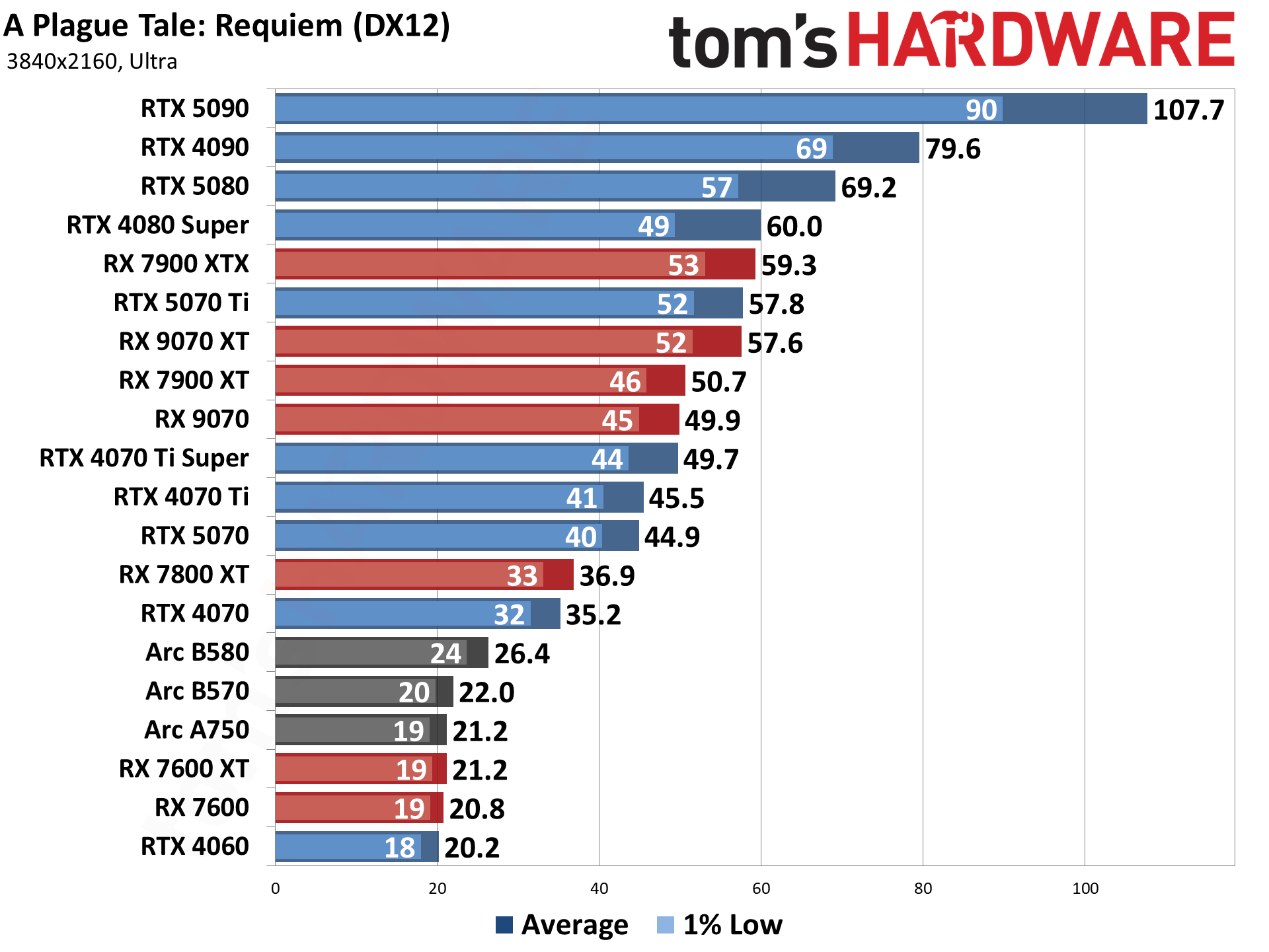
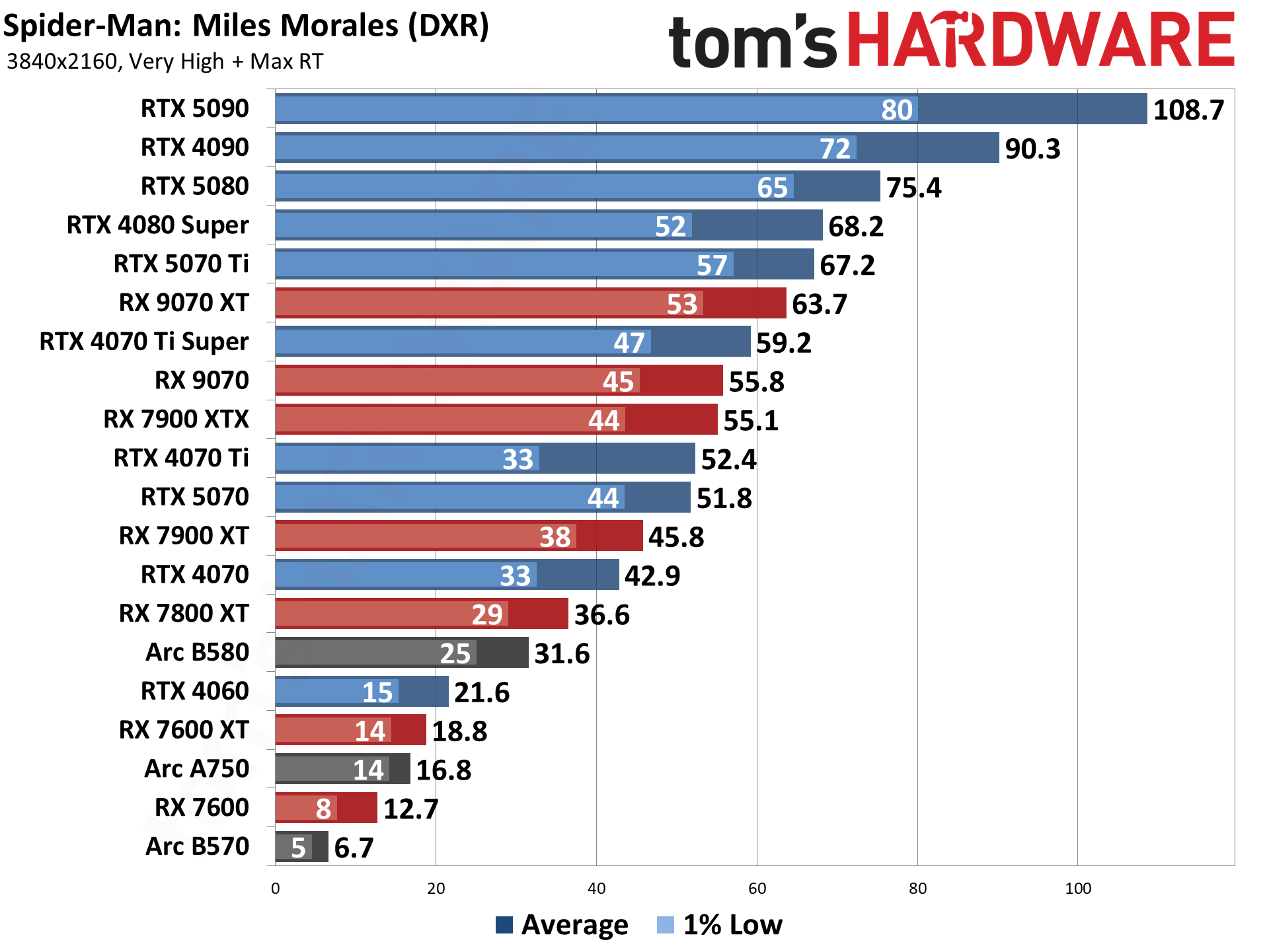
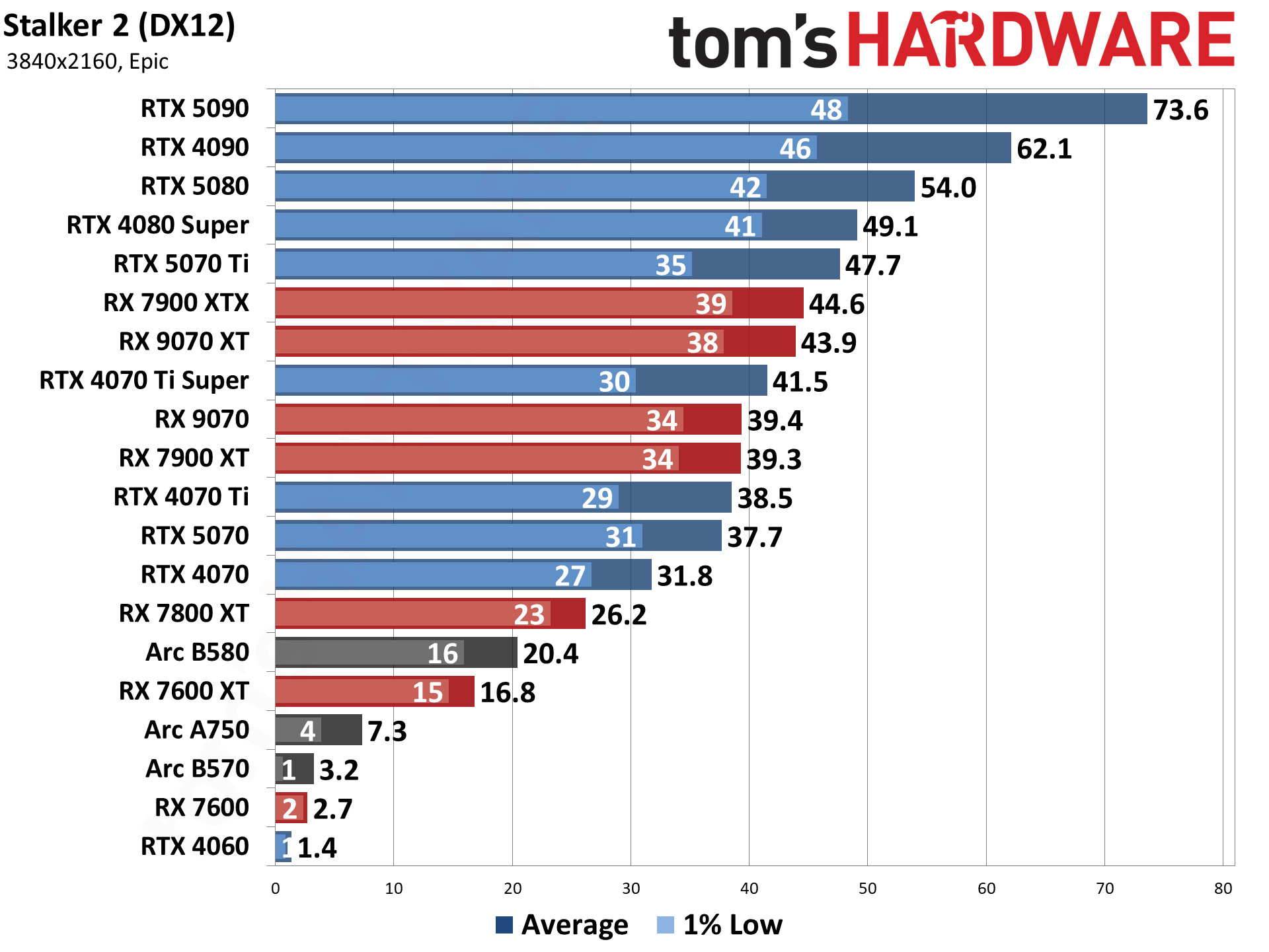
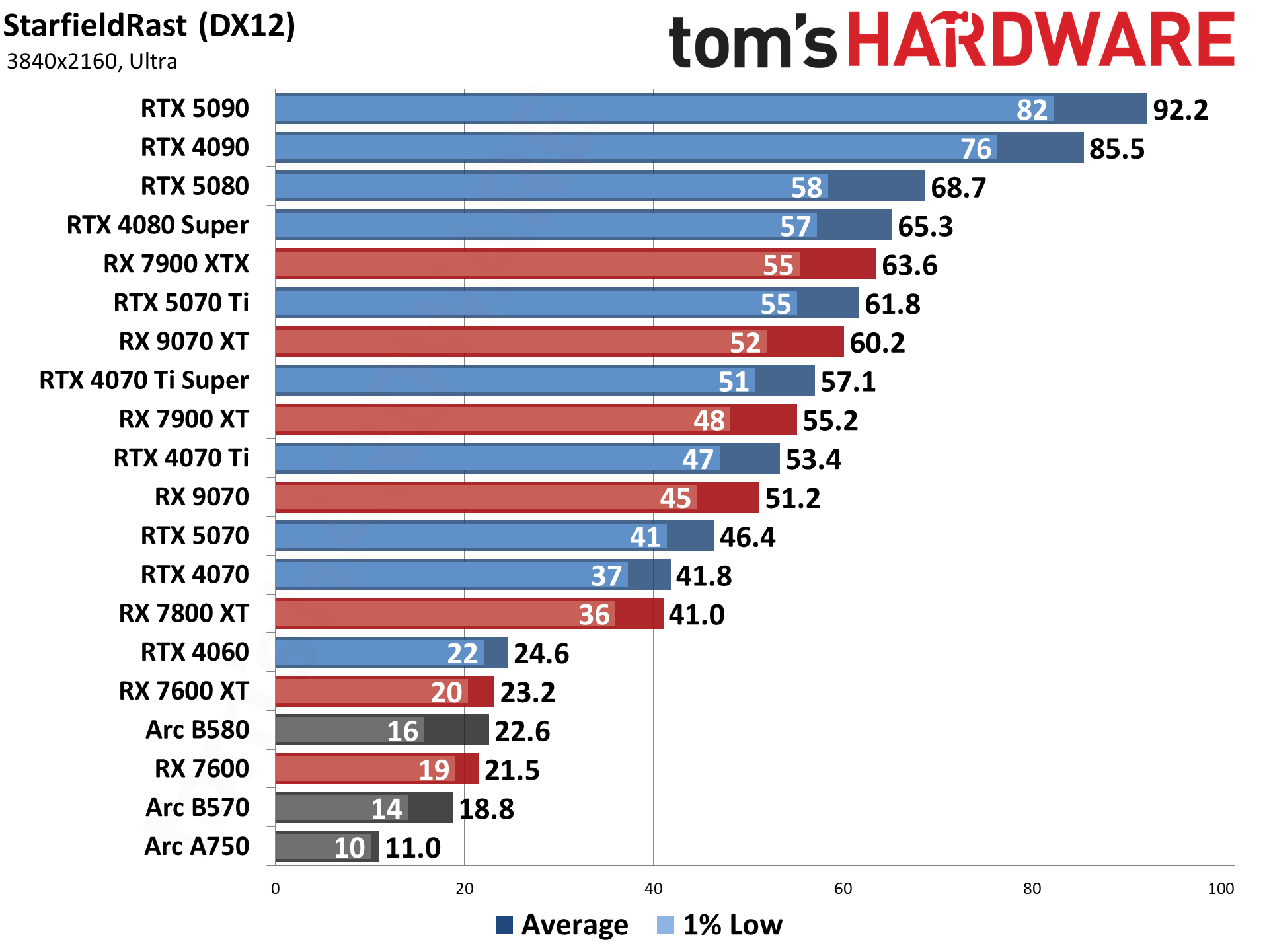
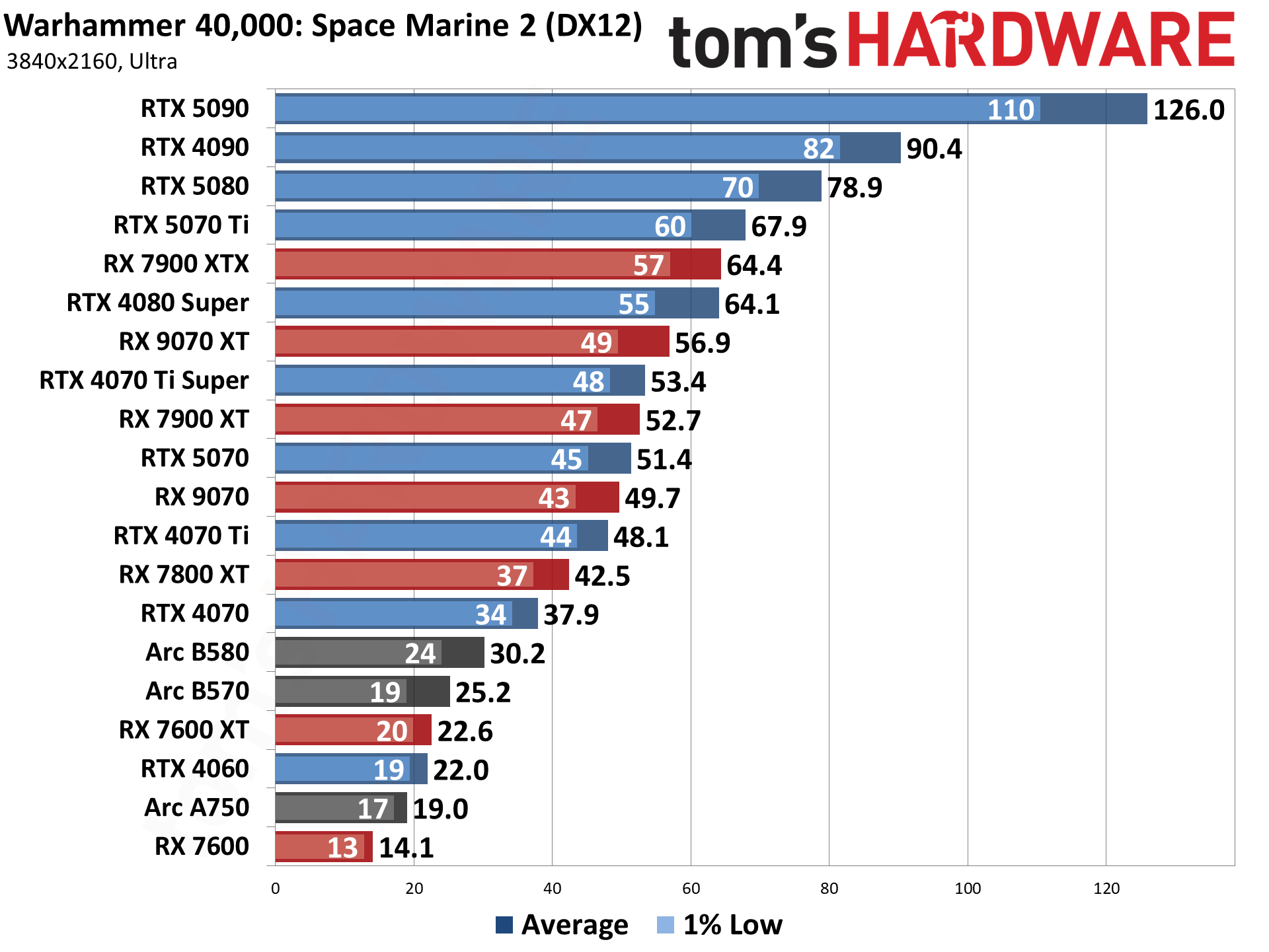
Best Graphics Cards — Power, Clocks, and Temperatures
Most of our discussion has focused on performance, but for those interested in power and other aspects of the GPUs, here are the appropriate charts. We'll run these from highest to lowest settings, as 4K ultra tends to be the most strenuous workload on most of these GPUs.
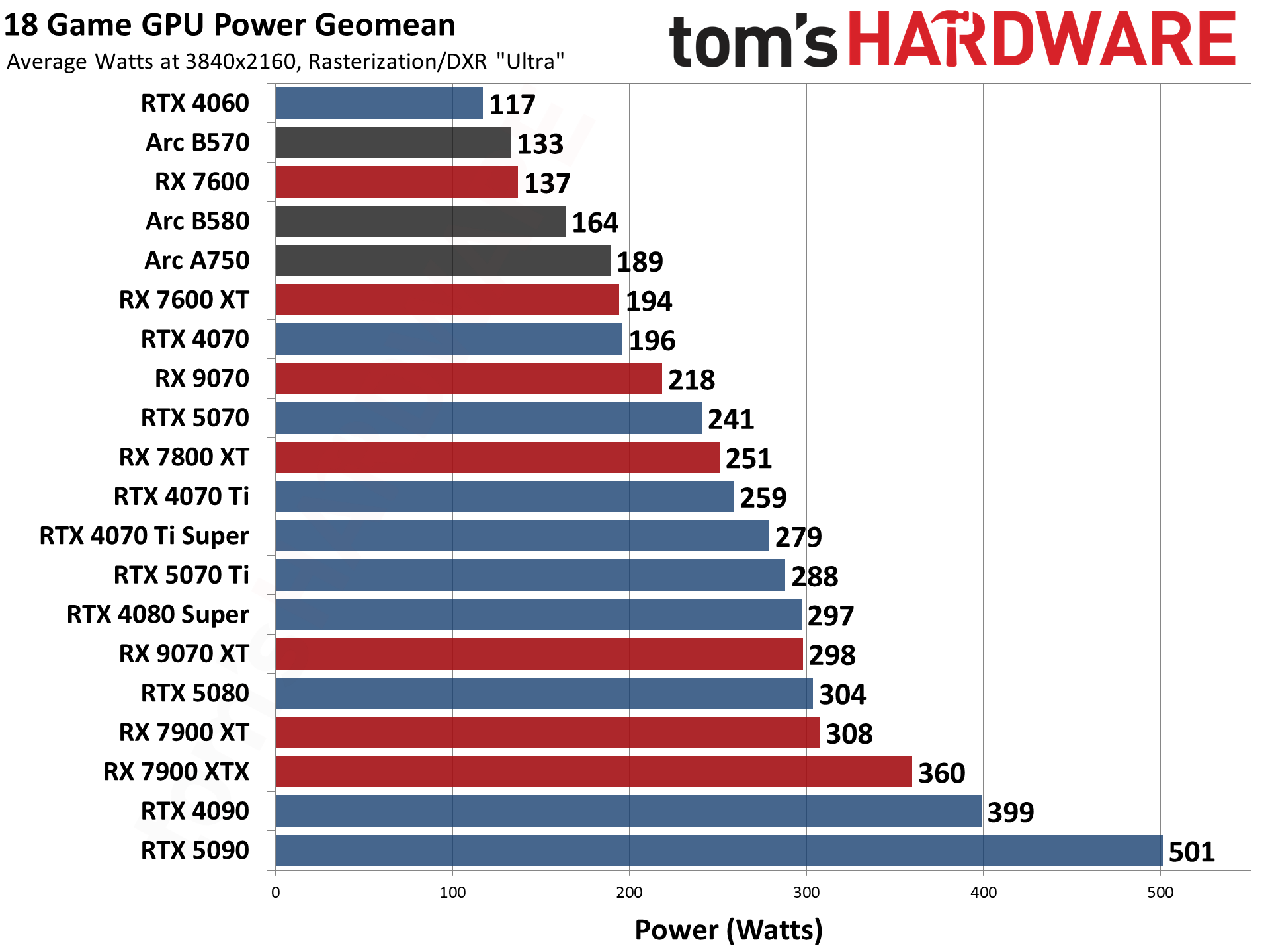
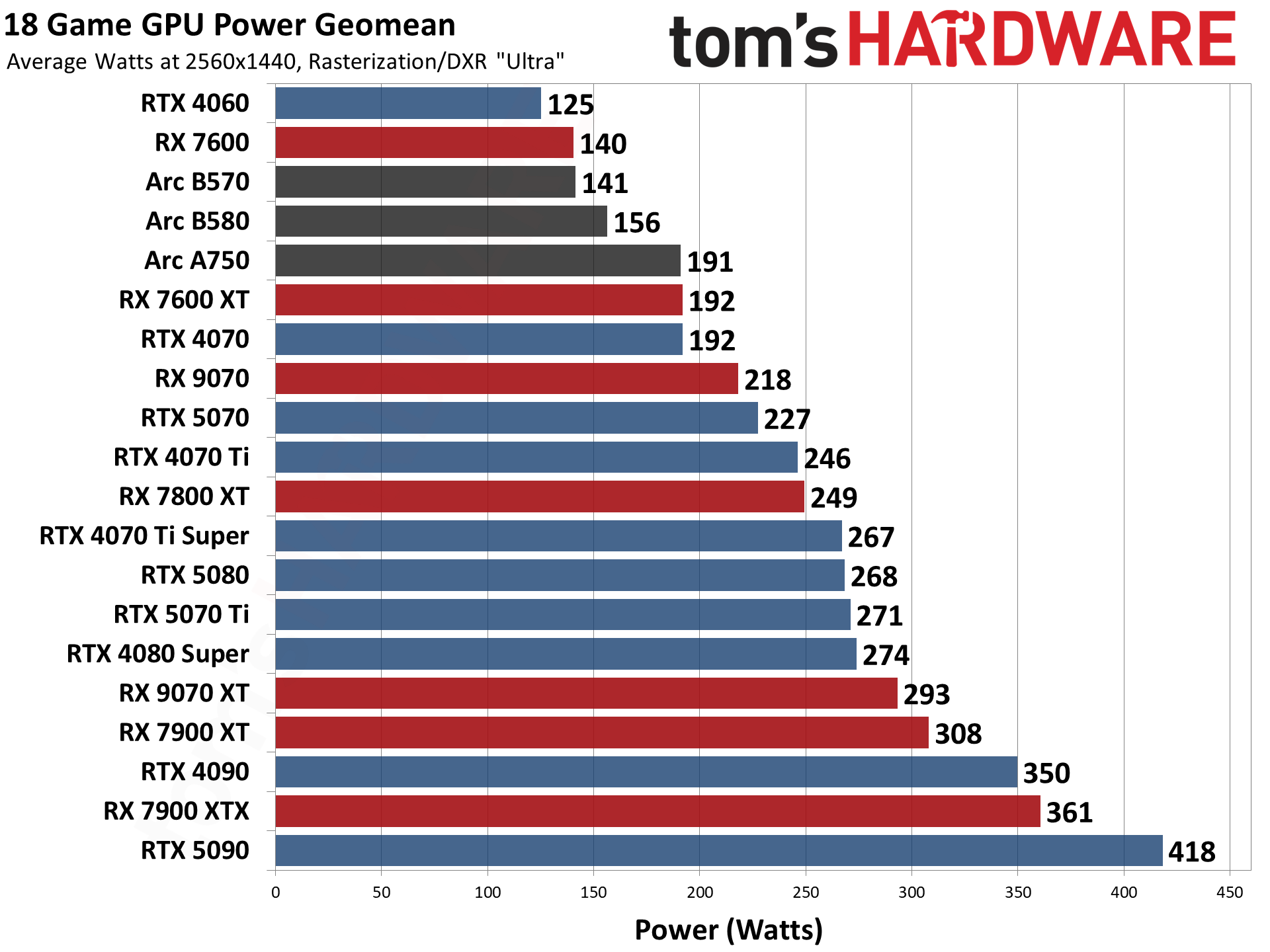
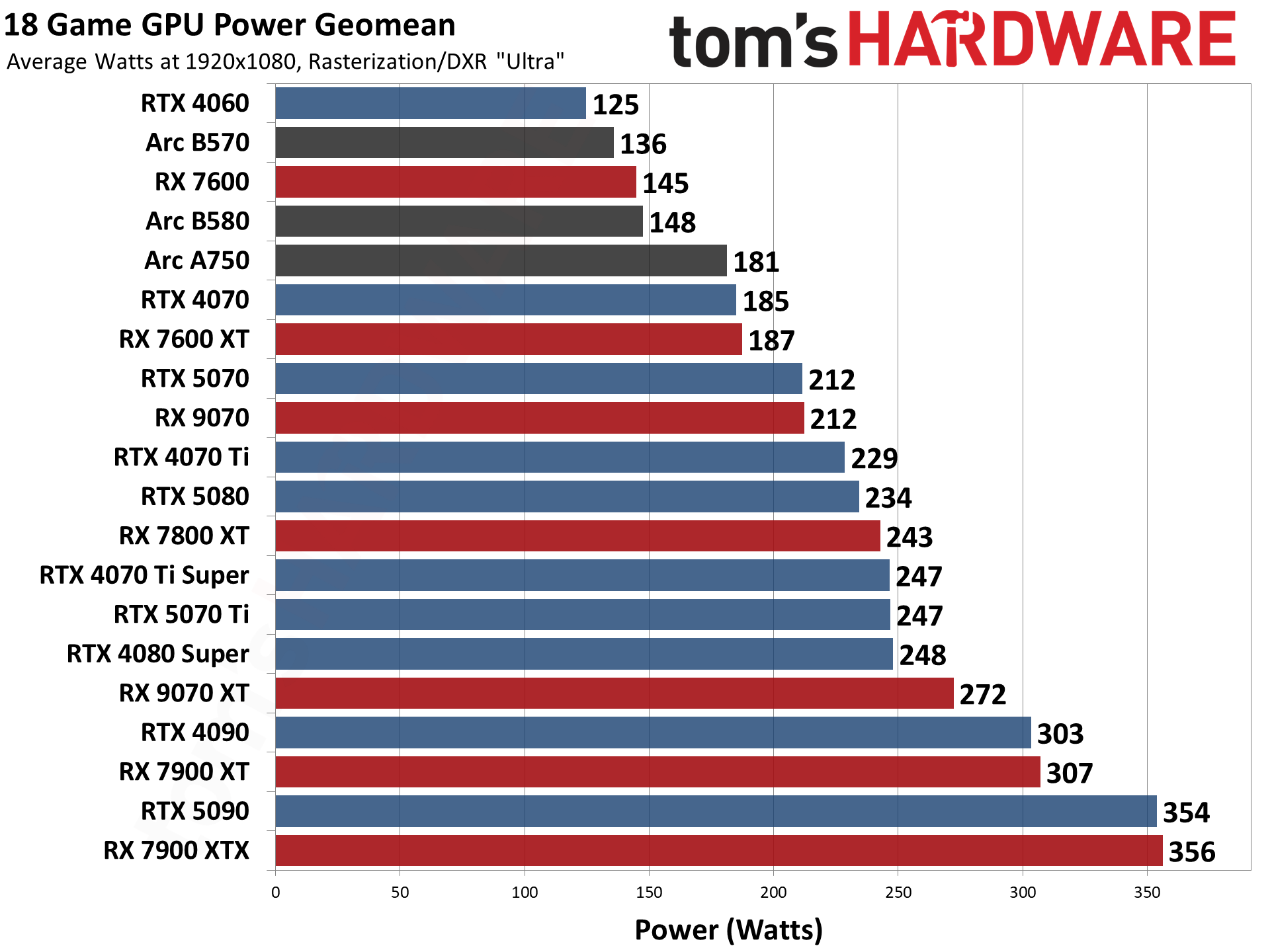
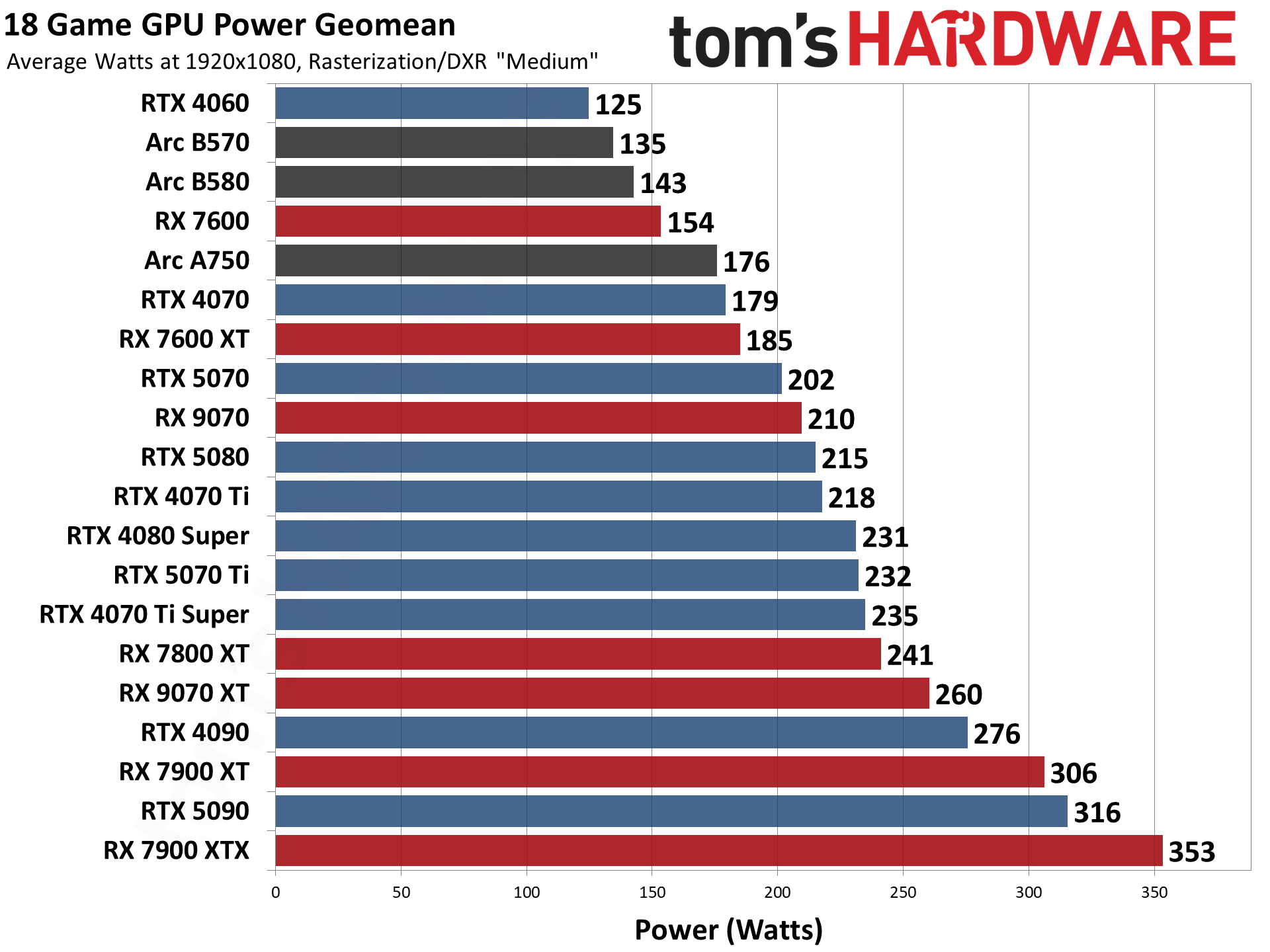
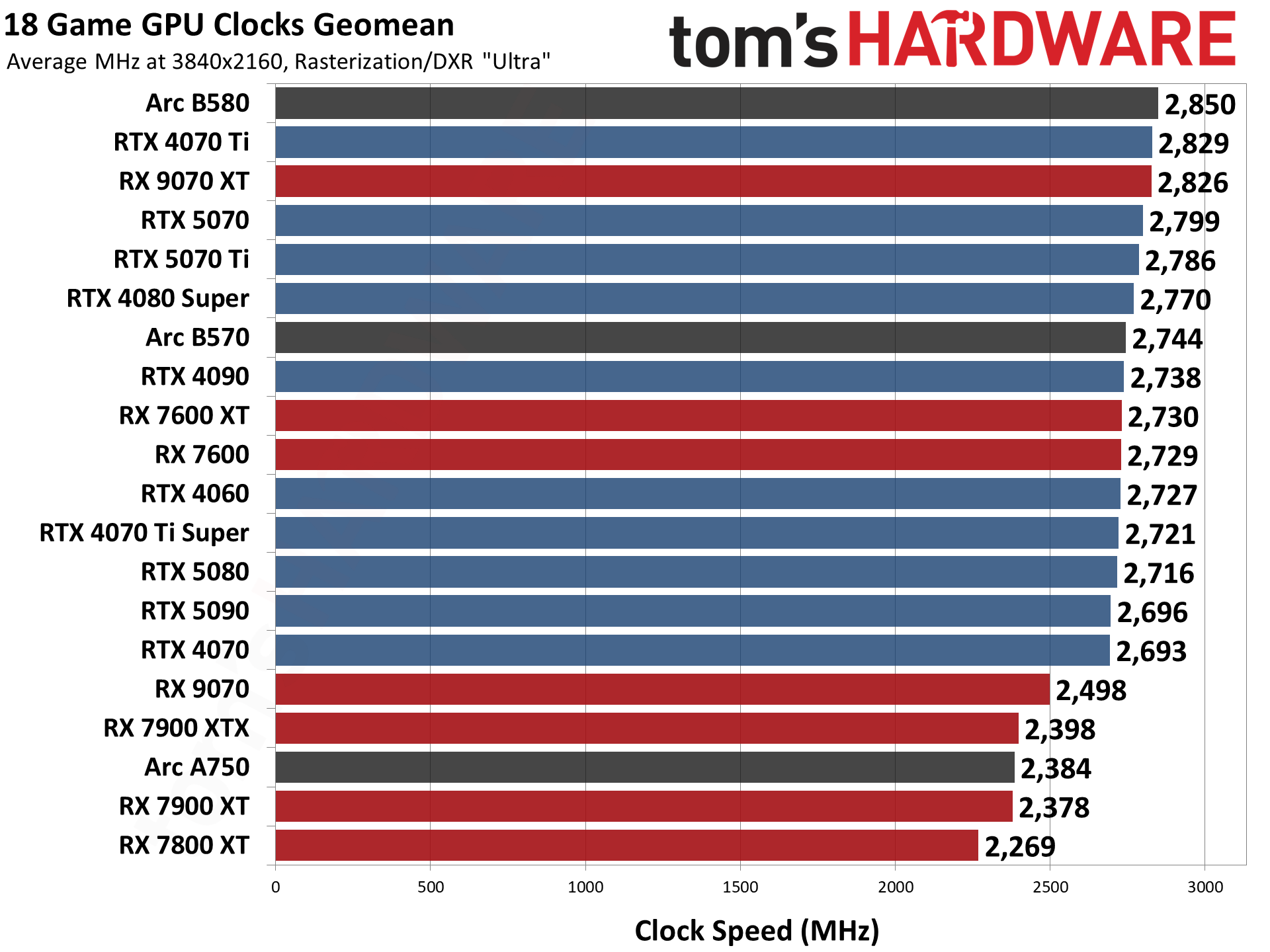
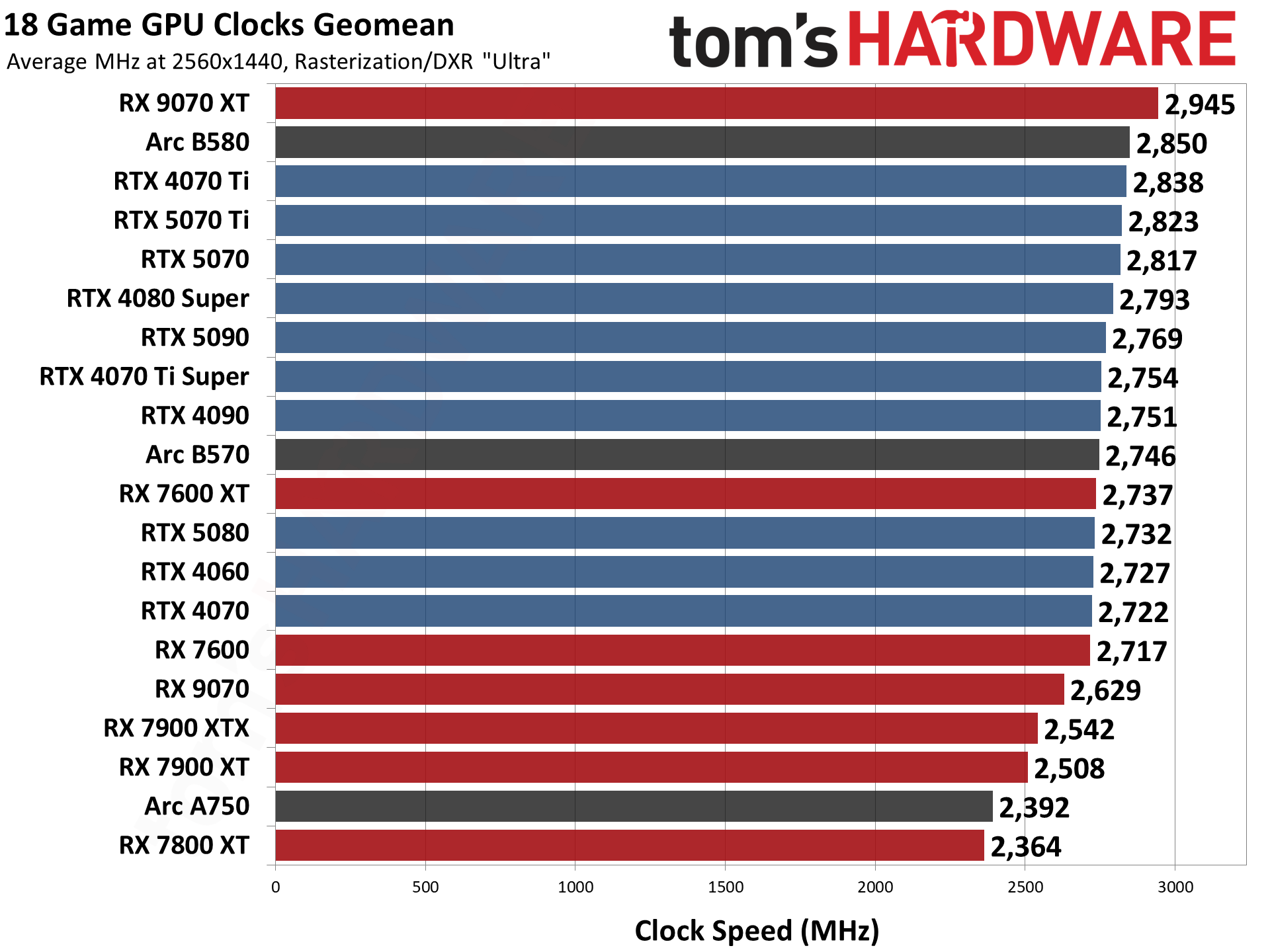
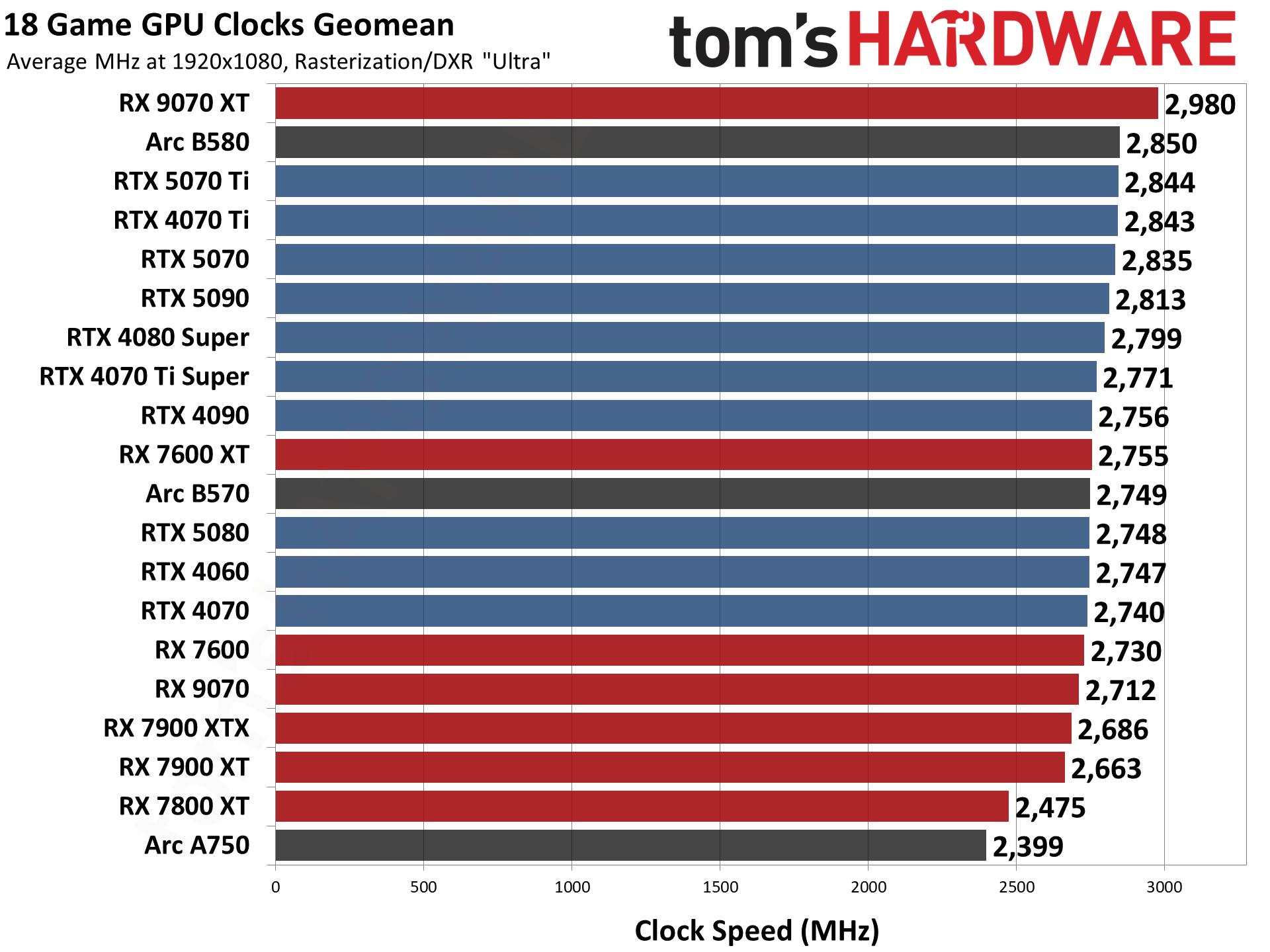
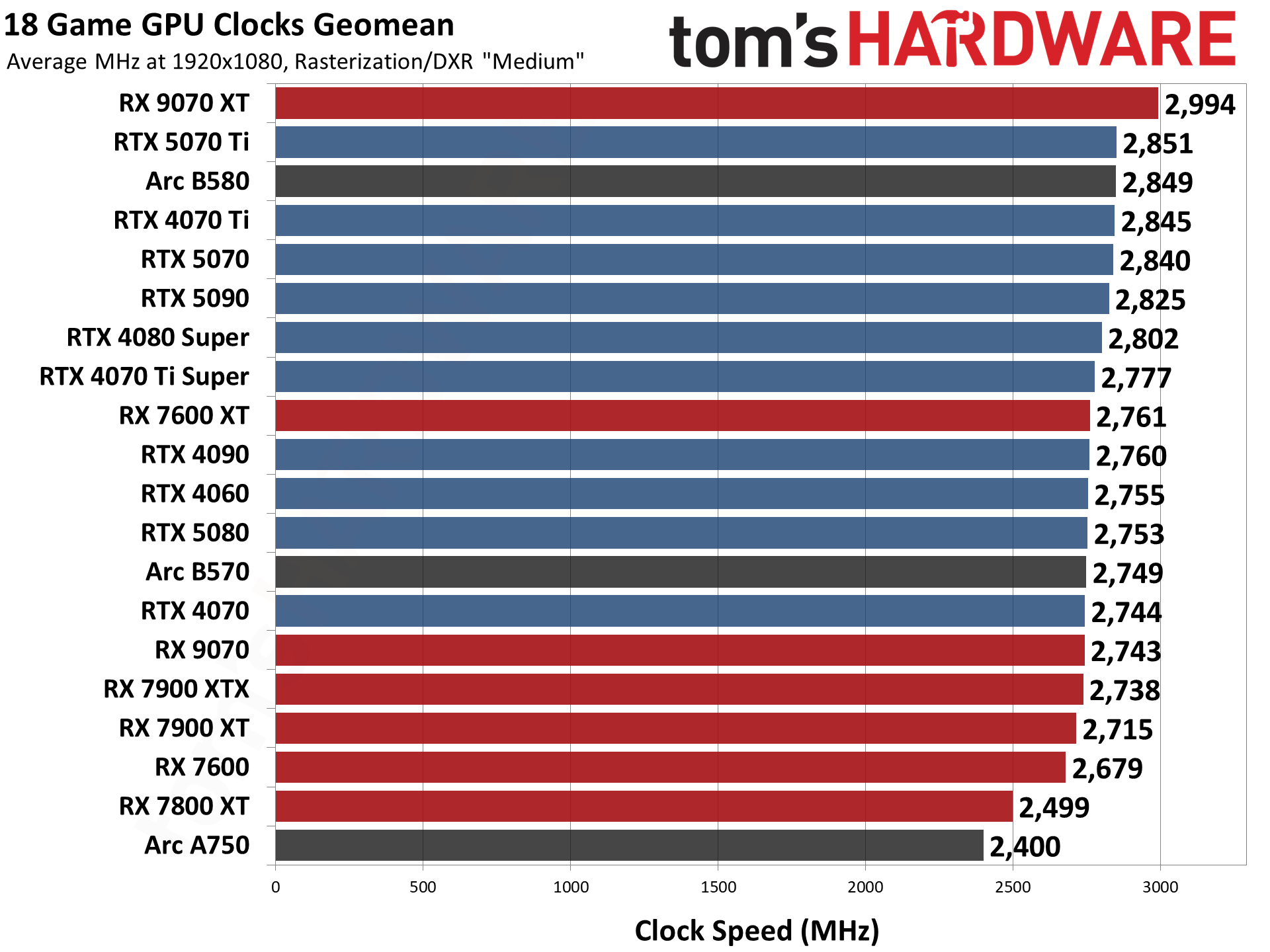
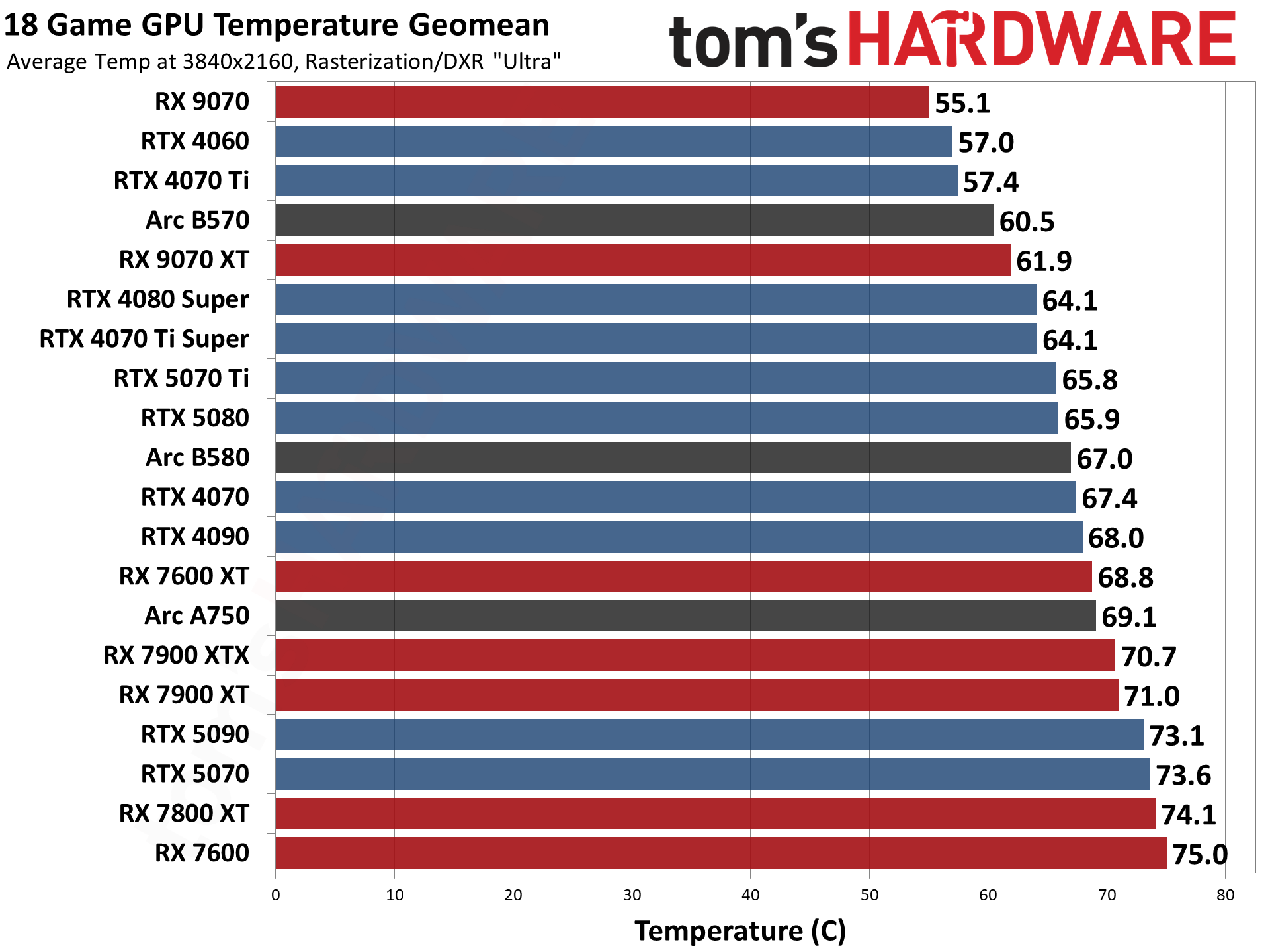
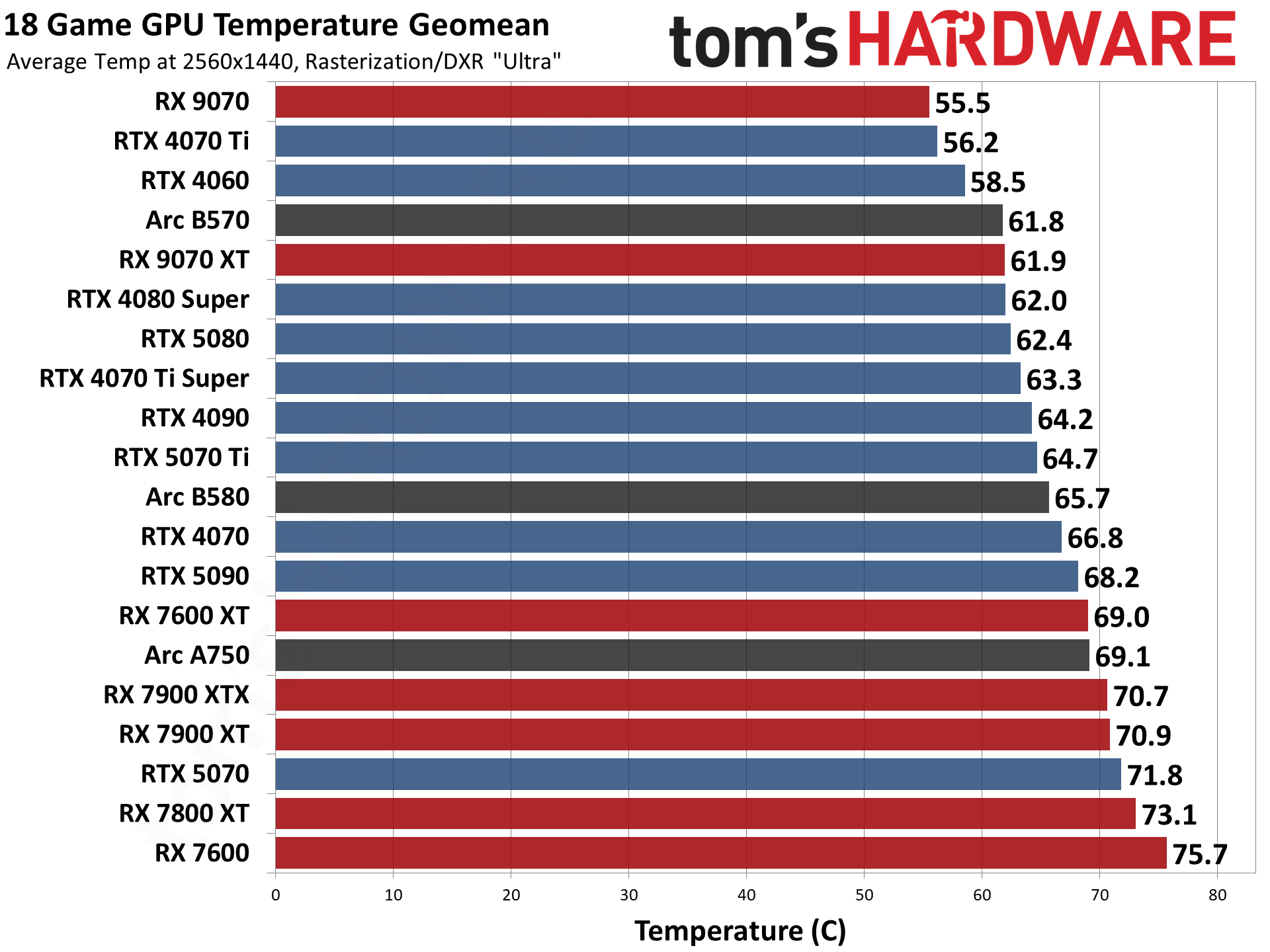
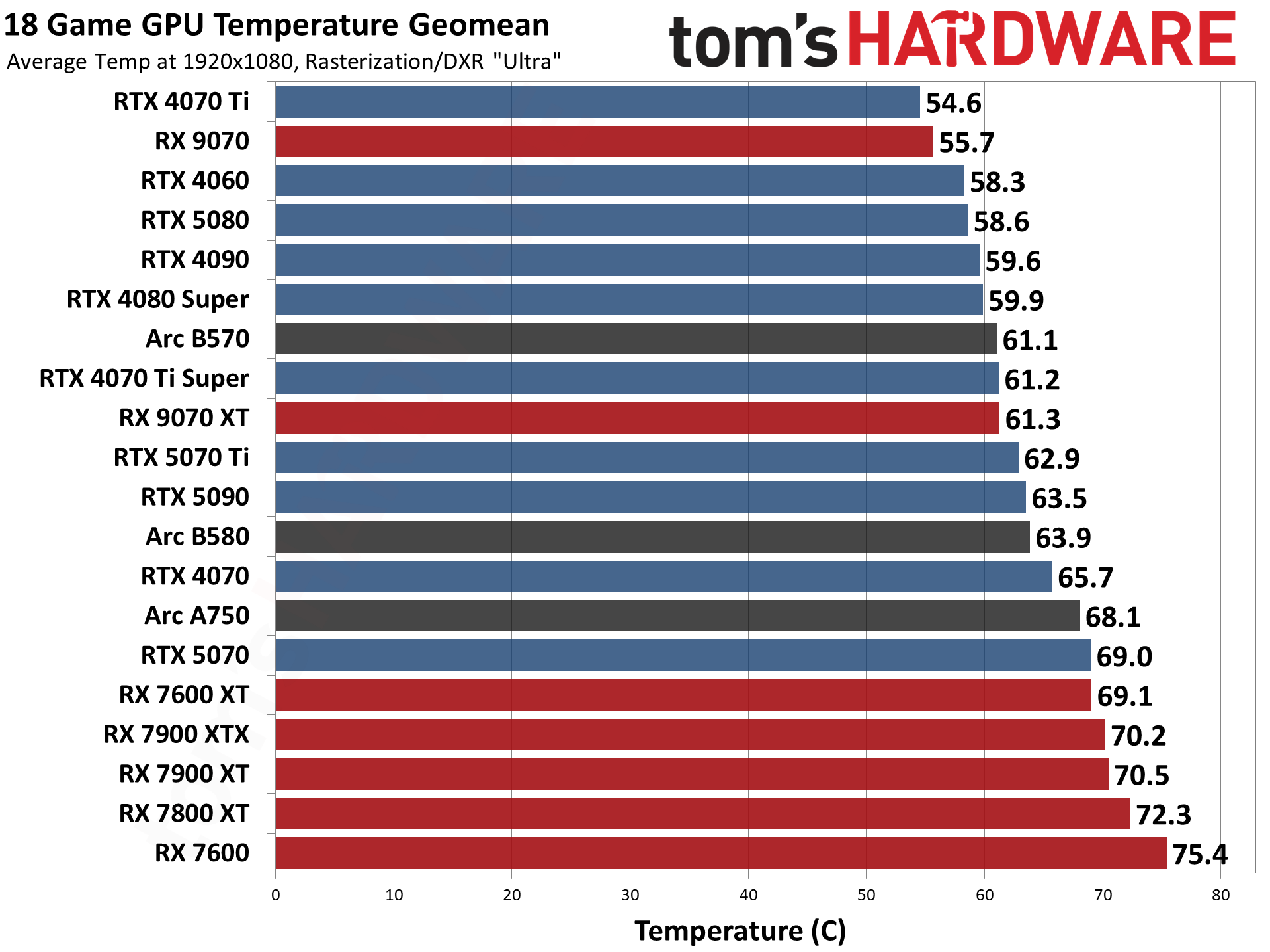
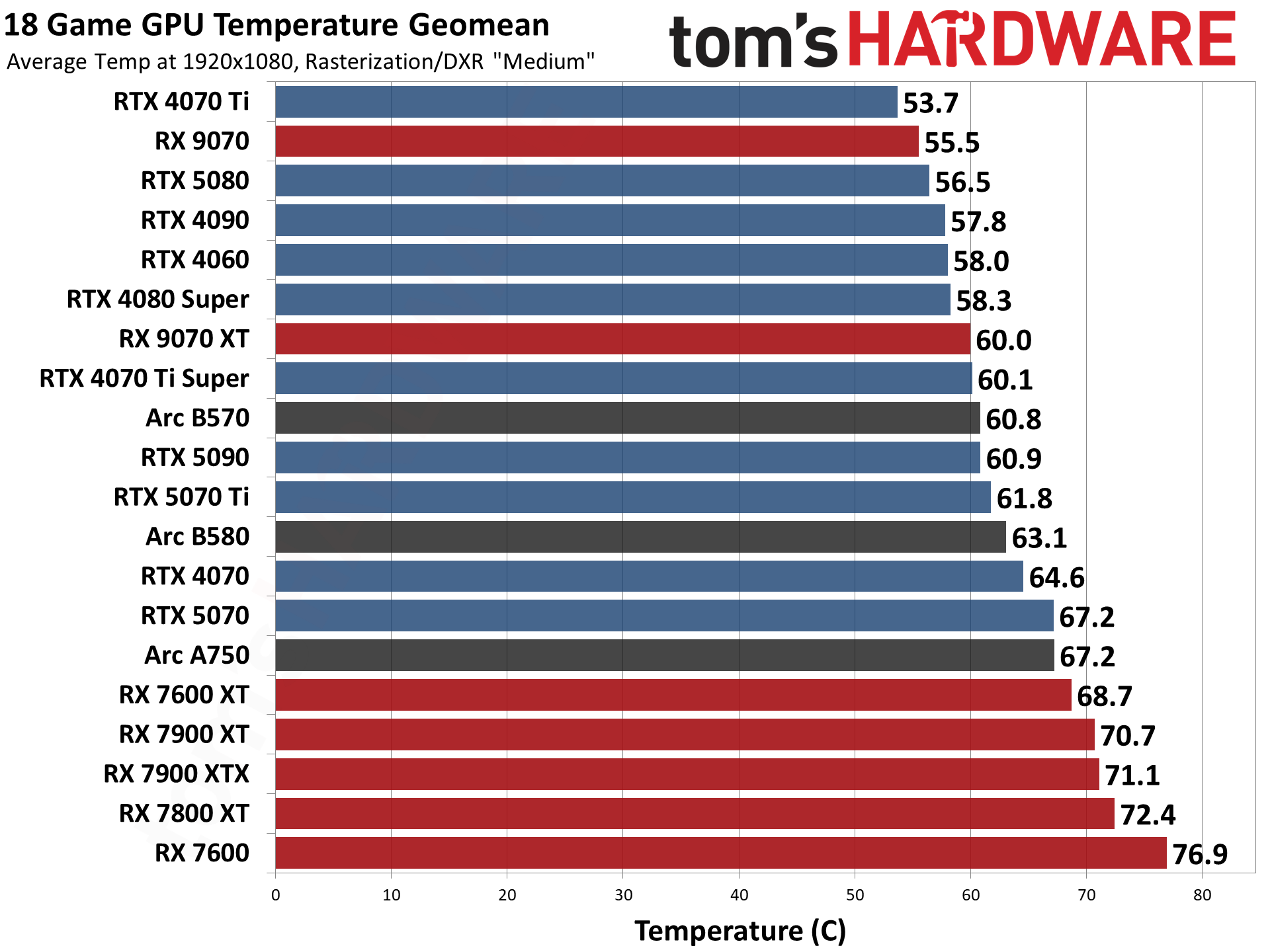
Choosing among the best graphics cards
We've provided eleven choices for the best graphics cards, recognizing that there's plenty of potential overlap. The latest generation GPUs aren't as readily available as we'd like, and the bottom of the new product stacks aren't completely fleshed out, so we've also included a few selections from the prior generation GPUs until such time comes that they're no longer relevant.
We've listed the best graphics cards that are available right now, along with their current online prices, which we track in our GPU prices guide. With so many cards selling above MSRP and a tight supply, it's not the greatest time to upgrade. Hopefully things continue to improve. Our general advice: Don't pay more today for yesterday's hardware, but if it's time for an upgrade, don't get stuck playing the waiting game — there's always something new coming down the pipeline.
If your main goal is gaming, you can't forget about the CPU. Getting the best possible gaming GPU won't help you much if your CPU is underpowered and/or out of date. So be sure to check out the Best CPUs for Gaming page, as well as our CPU Benchmark hierarchy to make sure you have the right CPU for the level of gaming you're looking to achieve.
Our current recommendations reflect the changing GPU market, factoring in all of the above details. The GPUs are ordered using subjective rankings, taking into account performance, price, features, and efficiency, so slower cards may end up higher on our list.
Additional Shopping Tips
When buying a graphics card, consider the following:
- Resolution: The more pixels you're pushing, the more performance you need. You don't need a top-of-the-line GPU to game at 1080p.
- PSU: Make sure that your power supply has enough juice and the right 6-, 8- and/or 16-pin connector(s). For example, Nvidia recommends a 550-watt PSU for the RTX 3060, and you'll need at least an 8-pin connector and possibly a 6-pin PEG connector as well. Newer RTX 40-series GPUs use 16-pin connectors, though all of them also include the necessary 8-pin to 16-pin adapters.
- Video Memory: A 4GB card is the absolute minimum right now, 6GB models are better, and 8GB or more is strongly recommended. A few games can now use 12GB of VRAM, though they're still the exception rather than the rule.
- FreeSync or G-Sync? Either variable refresh rate technology will synchronize your GPU's frame rate with your screen's refresh rate. Nvidia supports G-Sync and G-Sync Compatible displays (for recommendations, see our Best Gaming Monitors list), while AMD's FreeSync tech works with Radeon cards.
- Ray Tracing and Upscaling: The latest graphics cards support ray tracing, which can be used to enhance the visuals. DLSS provides intelligent upscaling and anti-aliasing to boost performance with similar image quality, but it's only on Nvidia RTX cards. AMD's FSR works on virtually any GPU and also provides upscaling and enhancement, but on a different subset of games. New to the party are DLSS 3 with Frame Generation and FSR 3 Frame Generation, along with Intel XeSS, with yet another different subset of supported games — DLSS 3 also provides DLSS 2 support for non 40-series RTX GPUs.
Finding Discounts on the Best Graphics Cards
With the GPU shortages mostly over, you might find some particularly tasty deals on occasion. Check out the latest Newegg promo codes, Best Buy promo codes and Micro Center coupon codes.
Want to comment on our best graphics picks for gaming? Let us know what you think in the Tom's Hardware Forums.
MORE: HDMI vs. DisplayPort: Which Is Better For Gaming?
MORE: GPU Benchmarks and Hierarchy
Get Tom's Hardware's best news and in-depth reviews, straight to your inbox.

As the Senior Analyst, Graphics at Tom's Hardware, Jeff Kampman covers everything to do with GPUs, gaming performance, and more. From integrated graphics processors to discrete graphics cards to the hyperscale installations powering our AI future, if it's got a GPU in it, Jeff is on it.